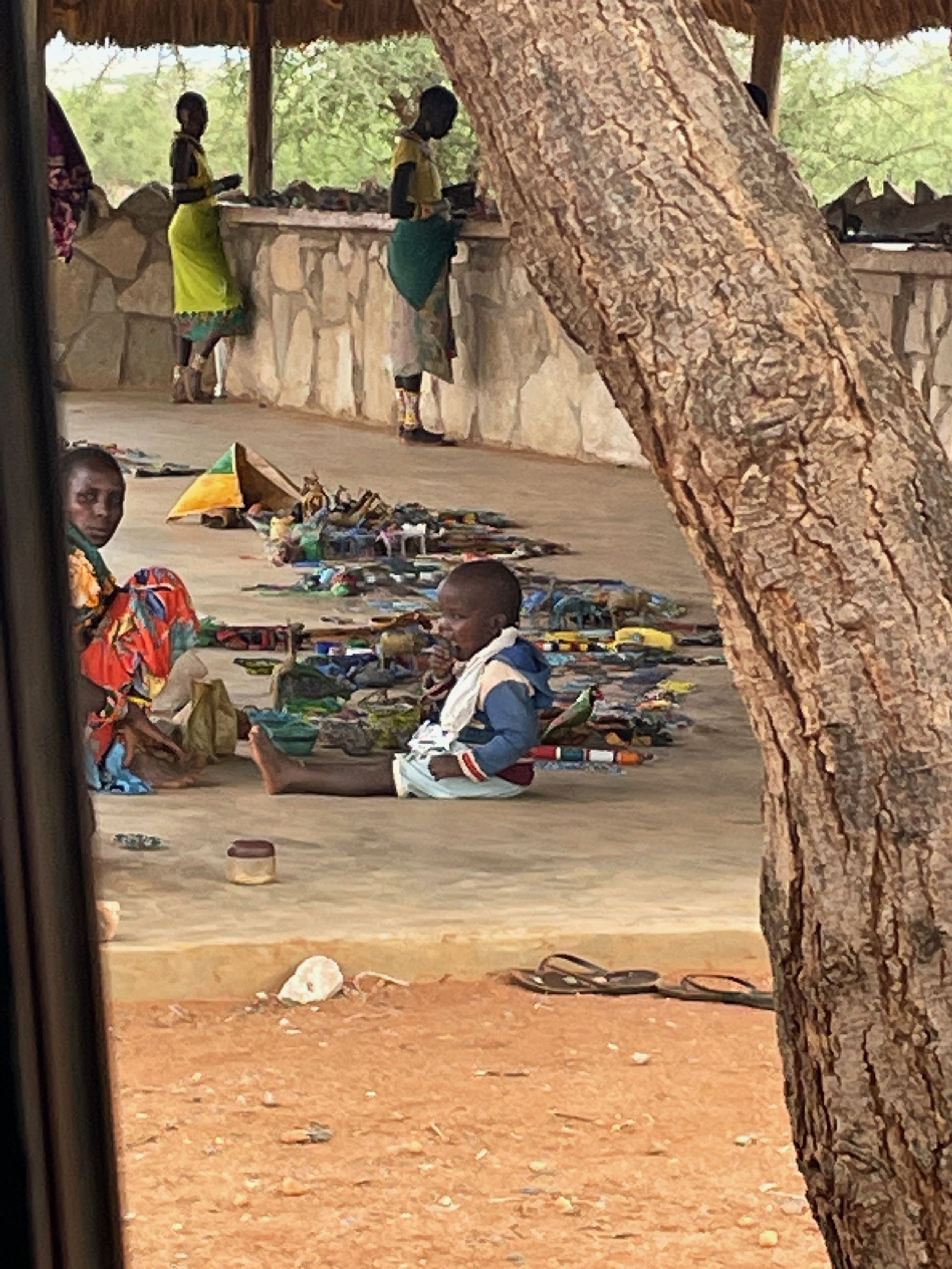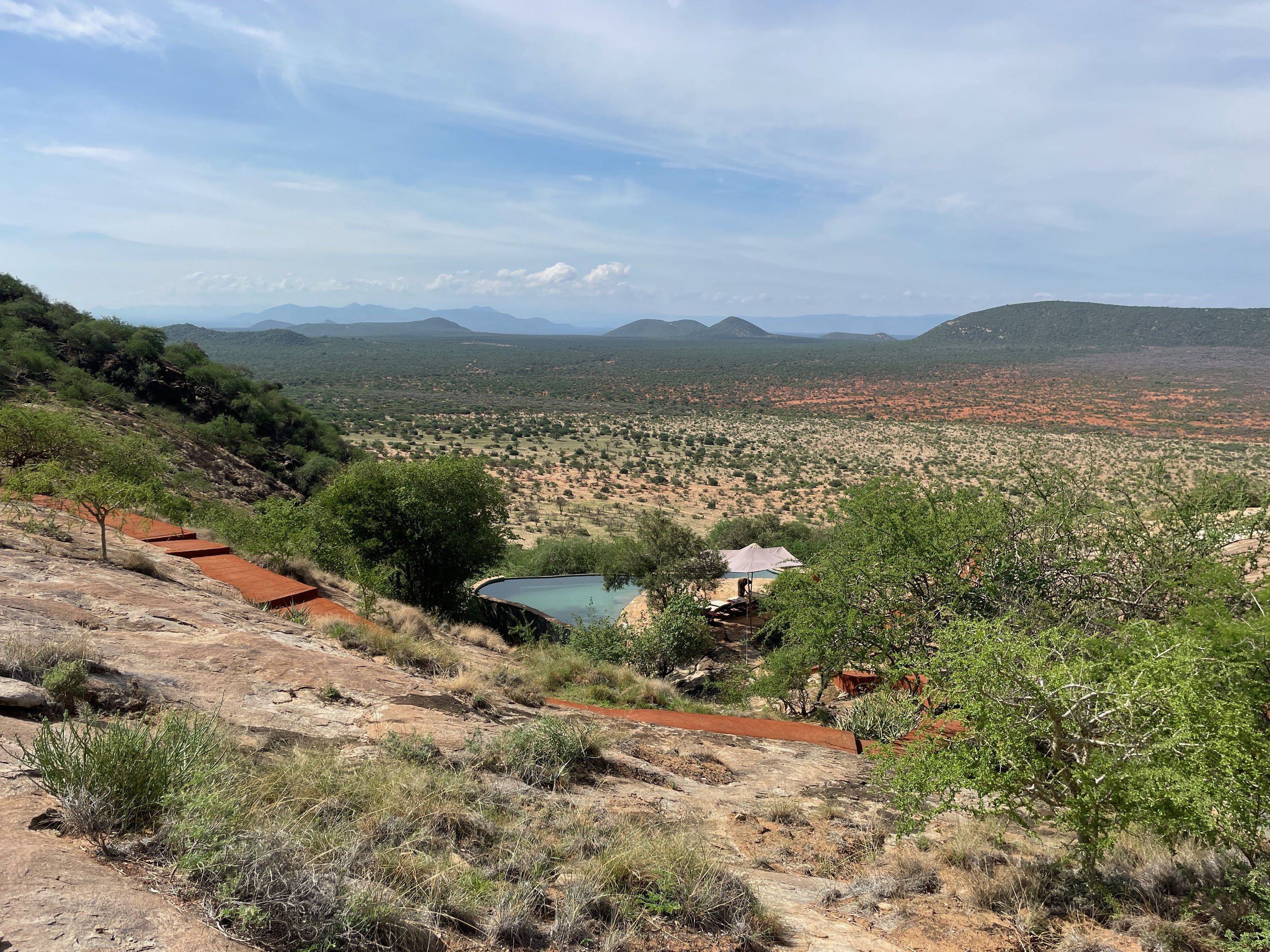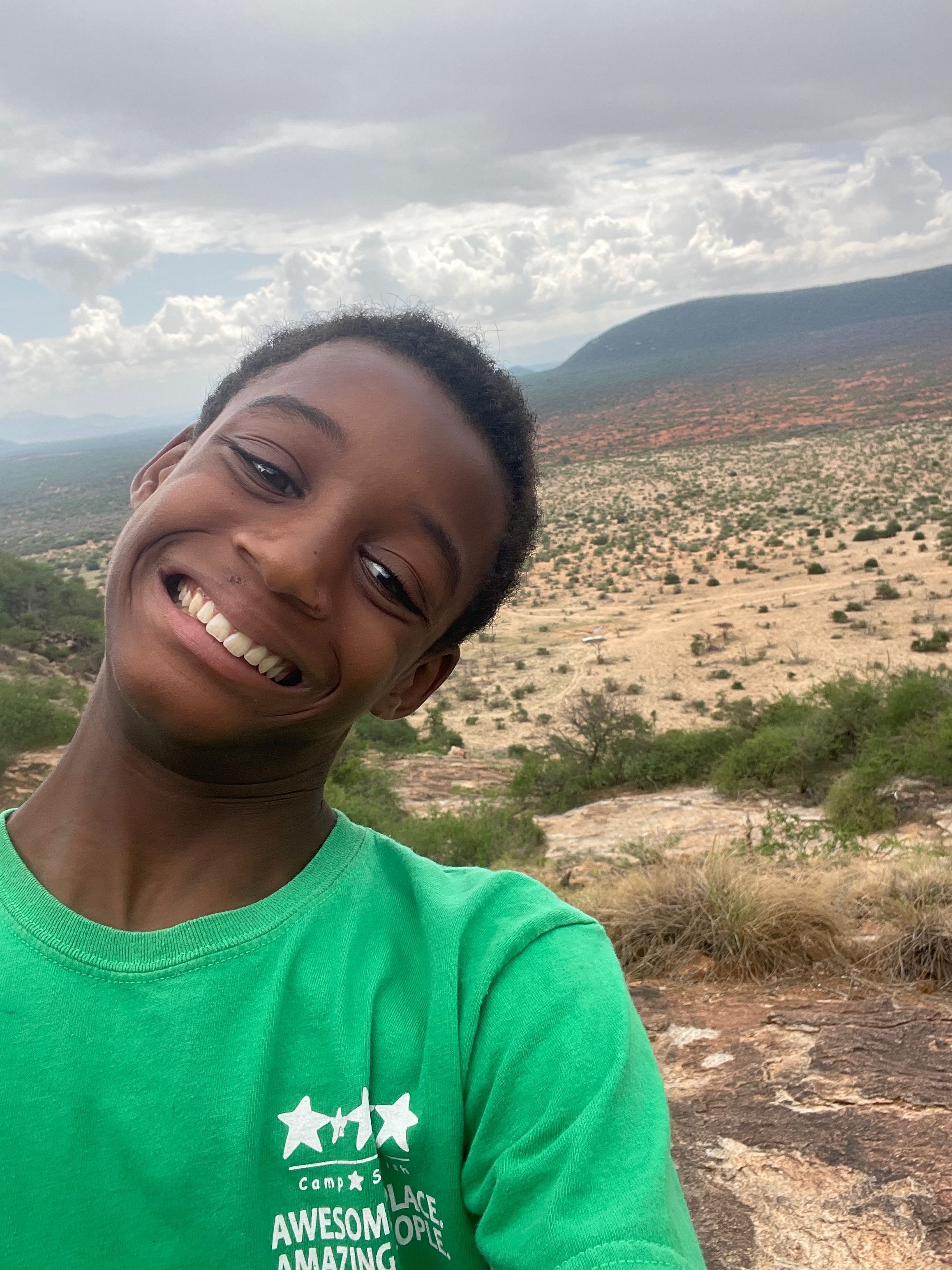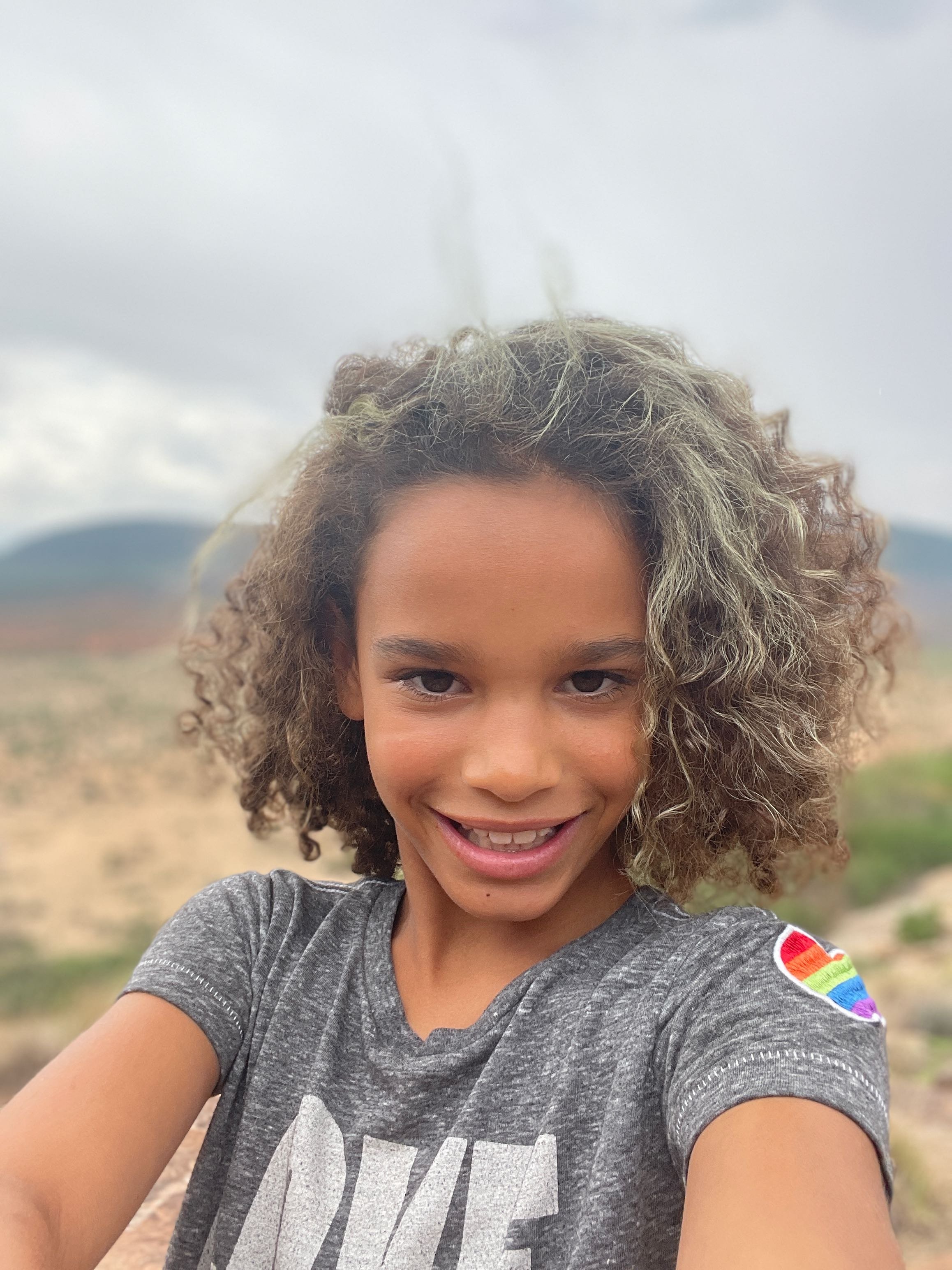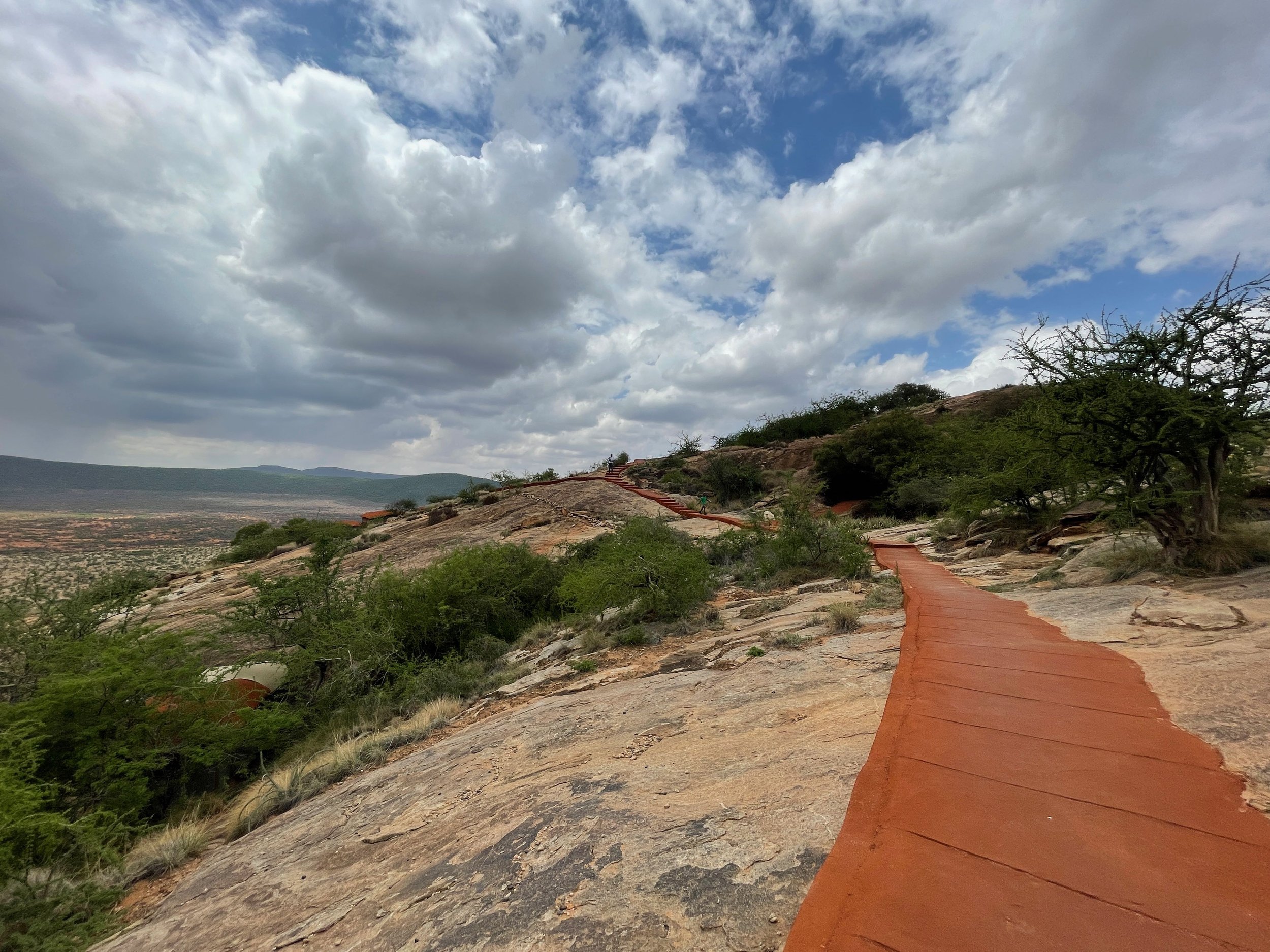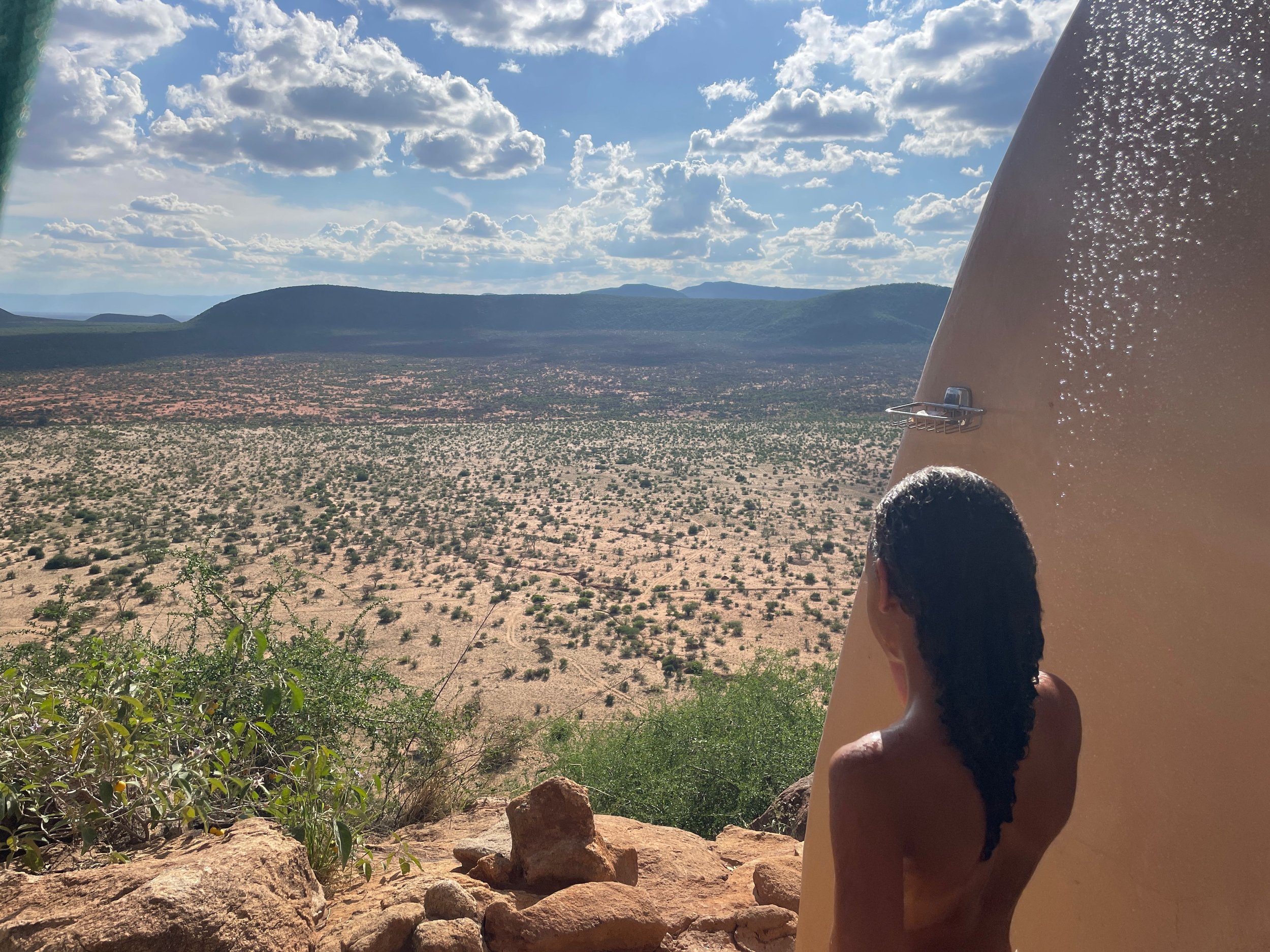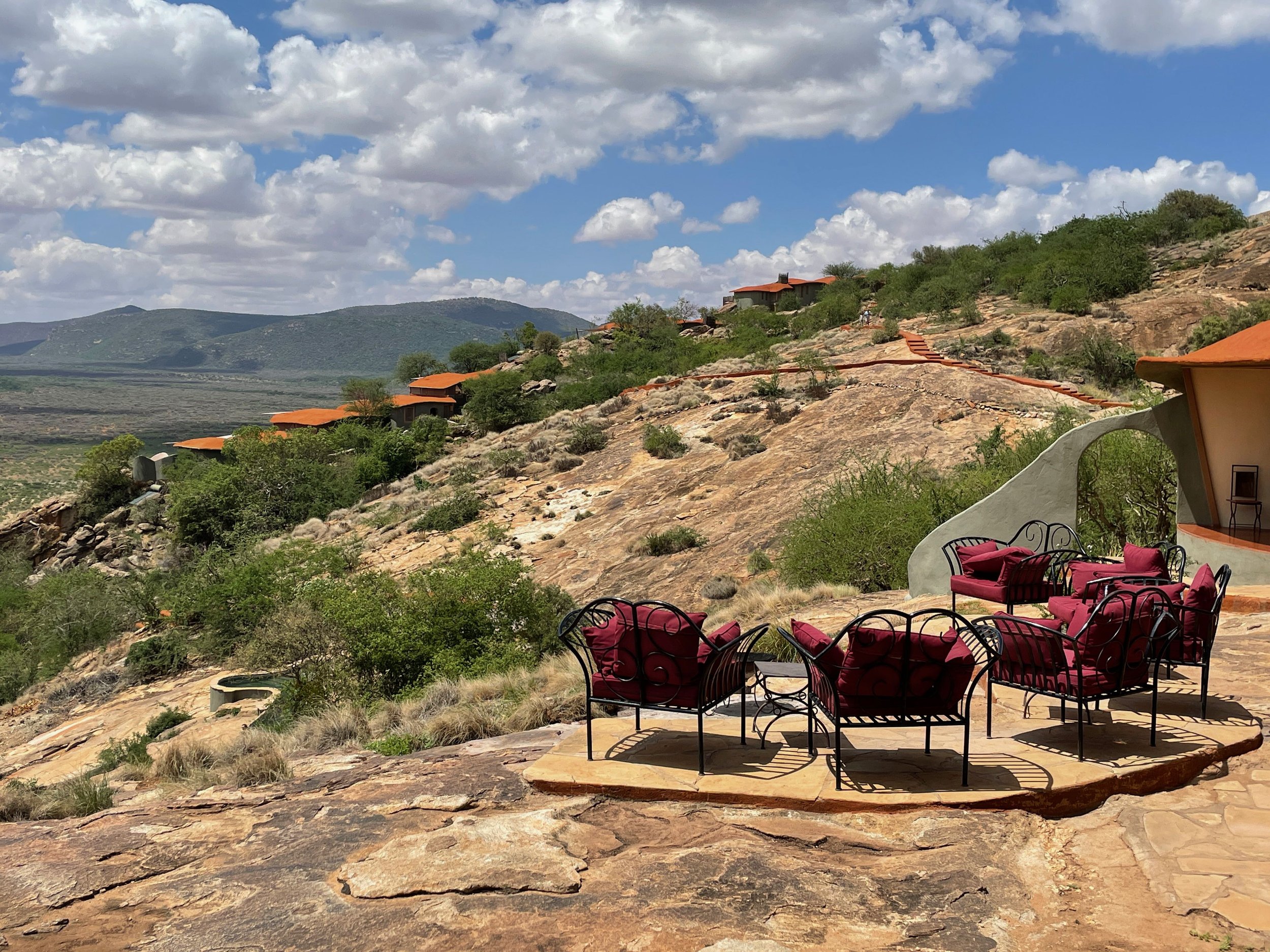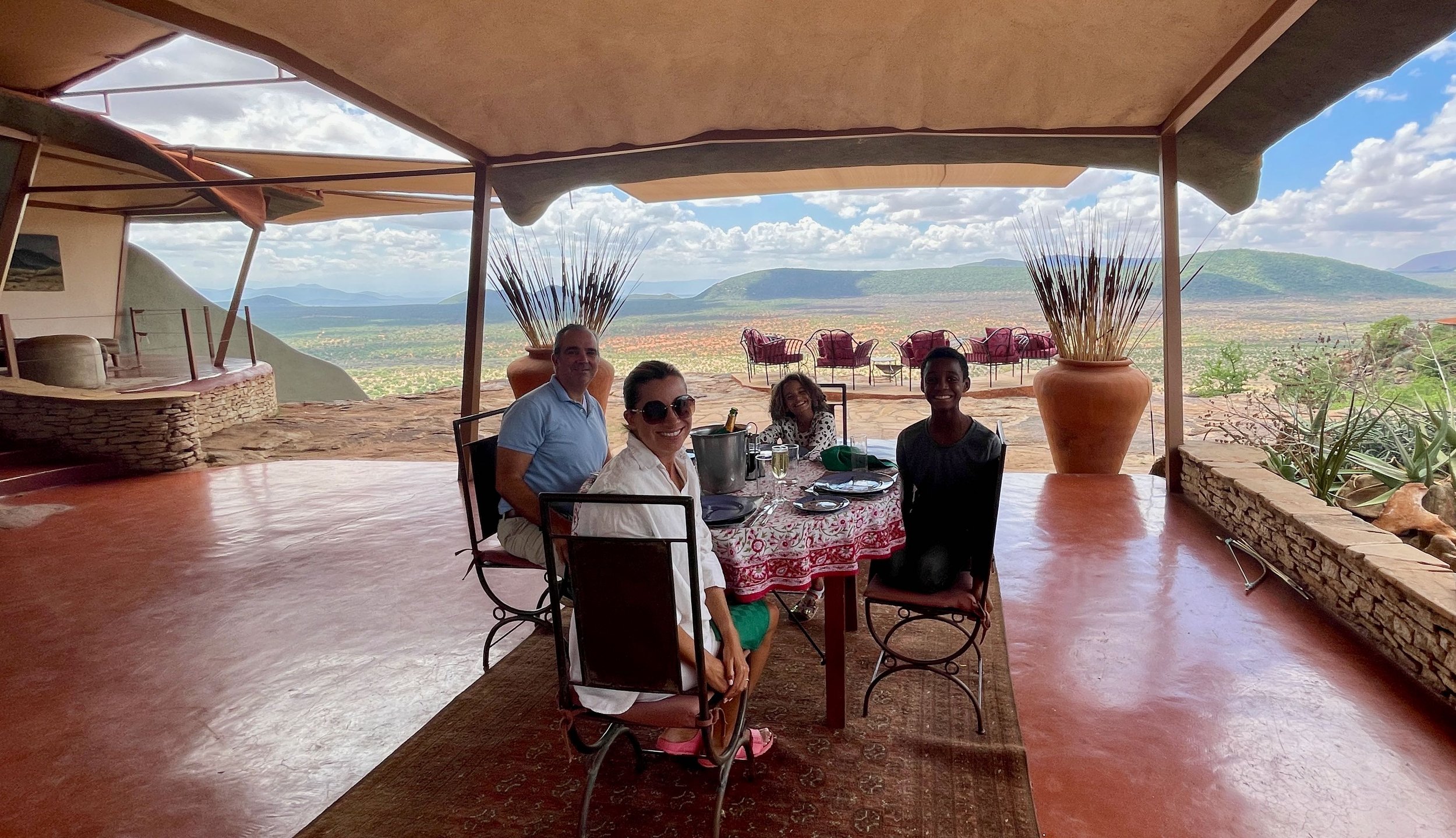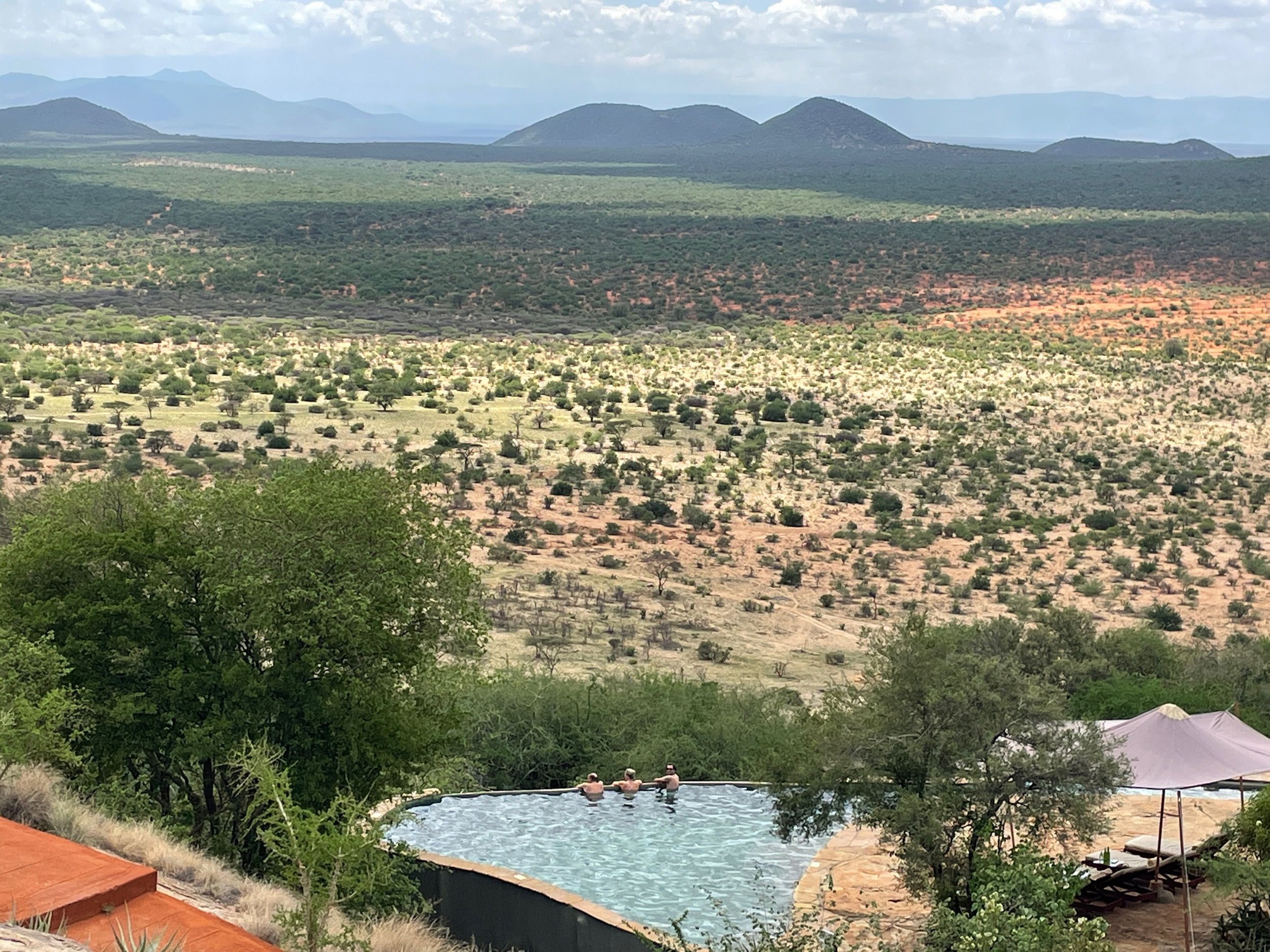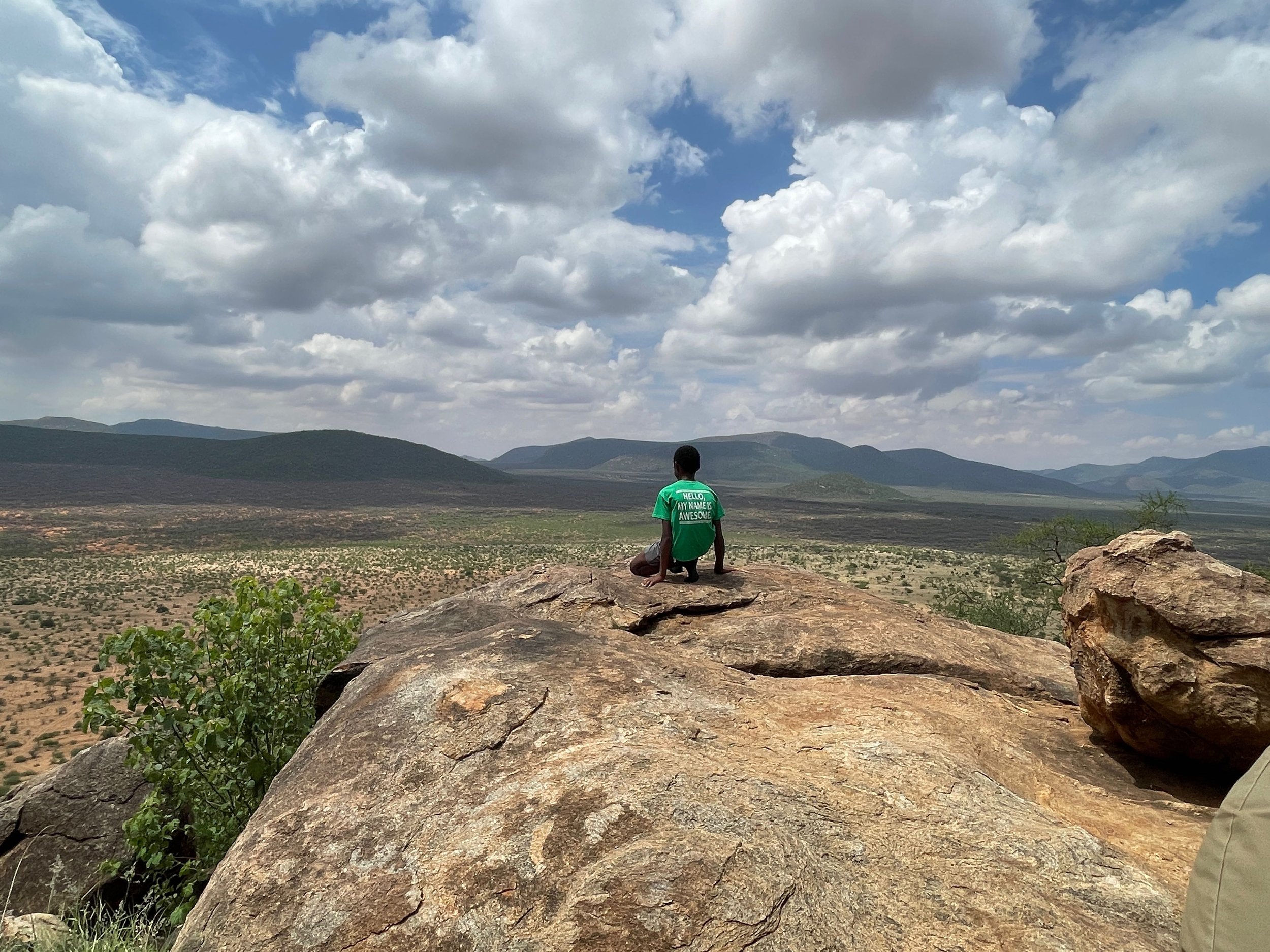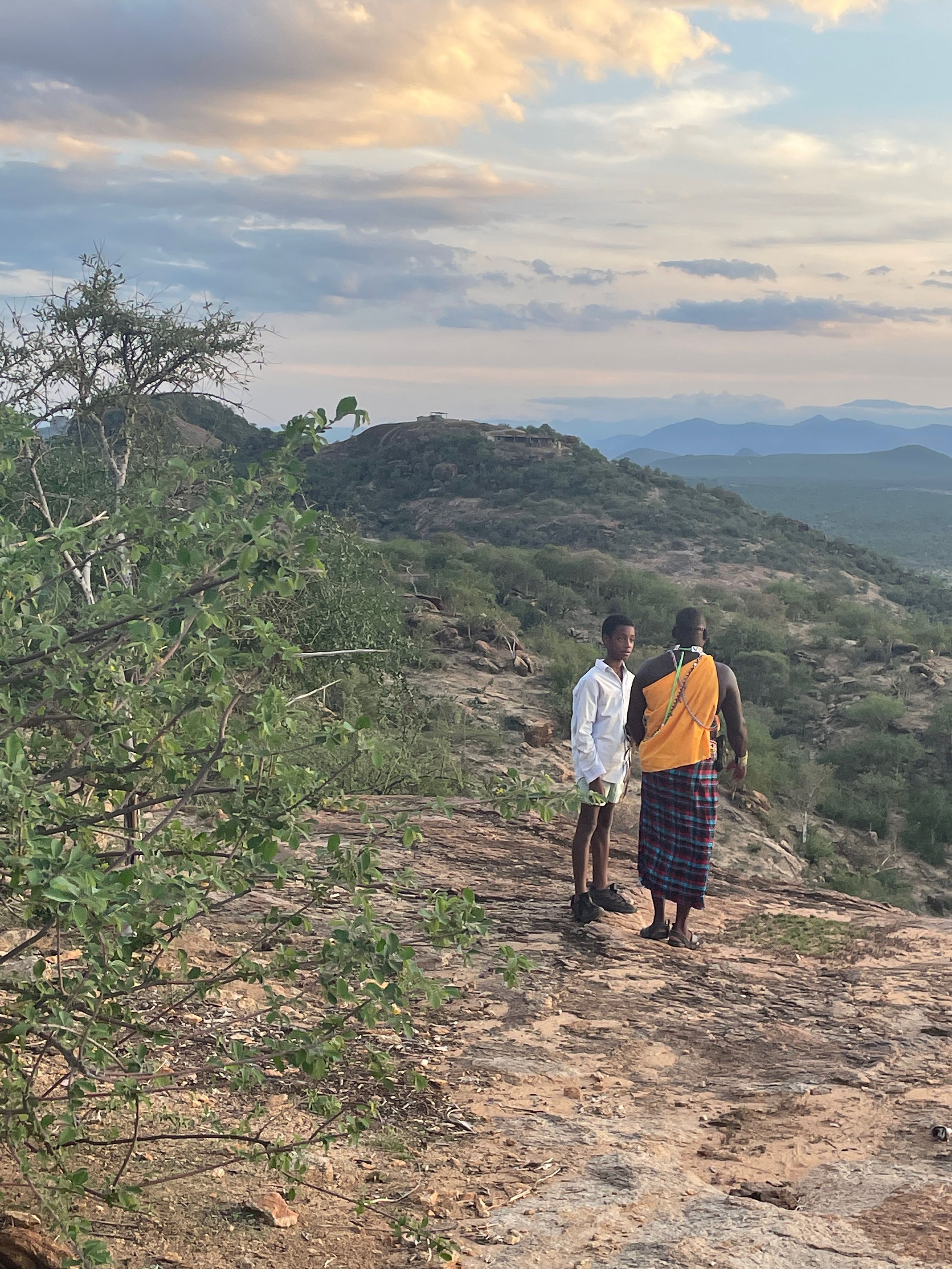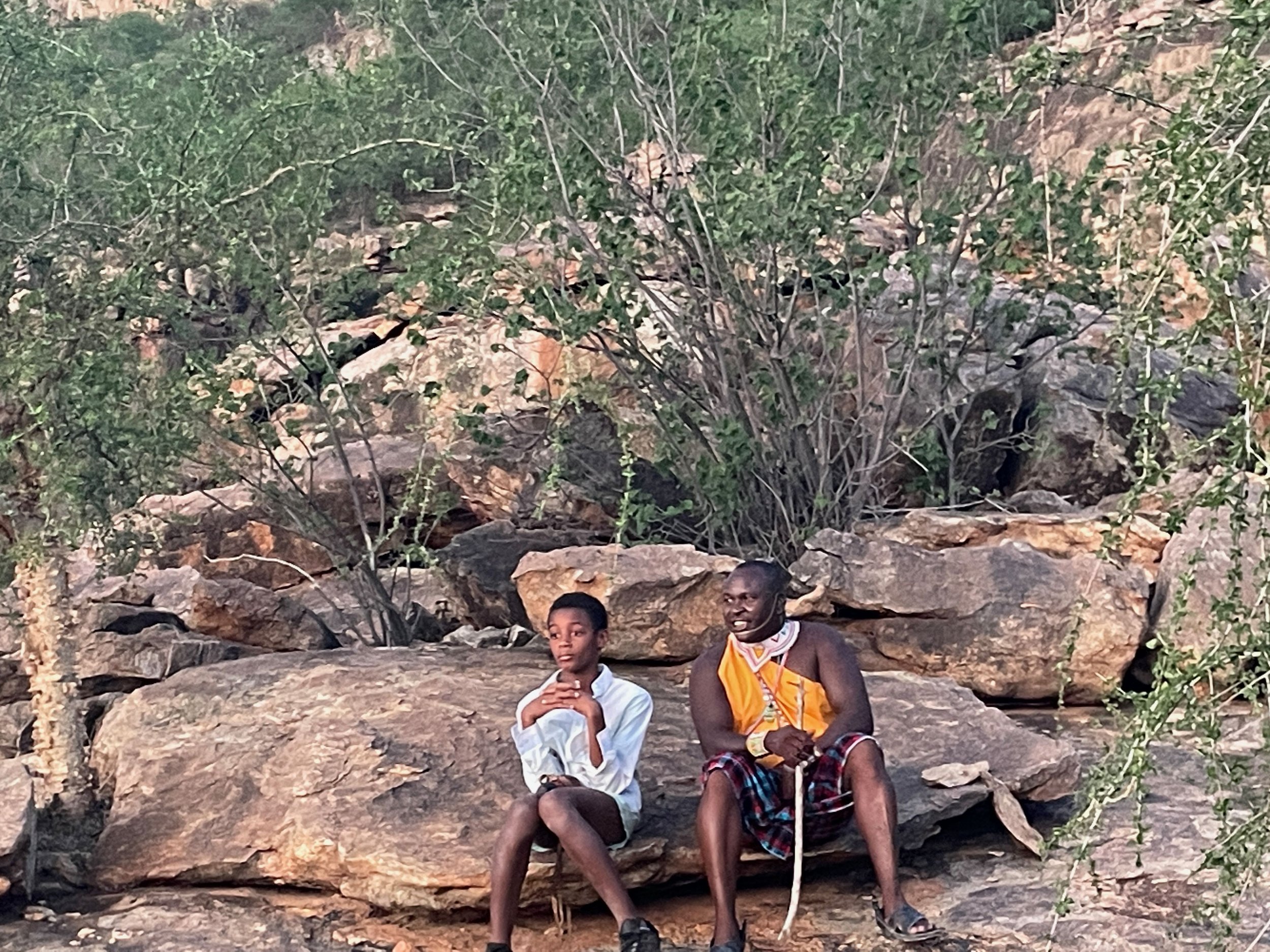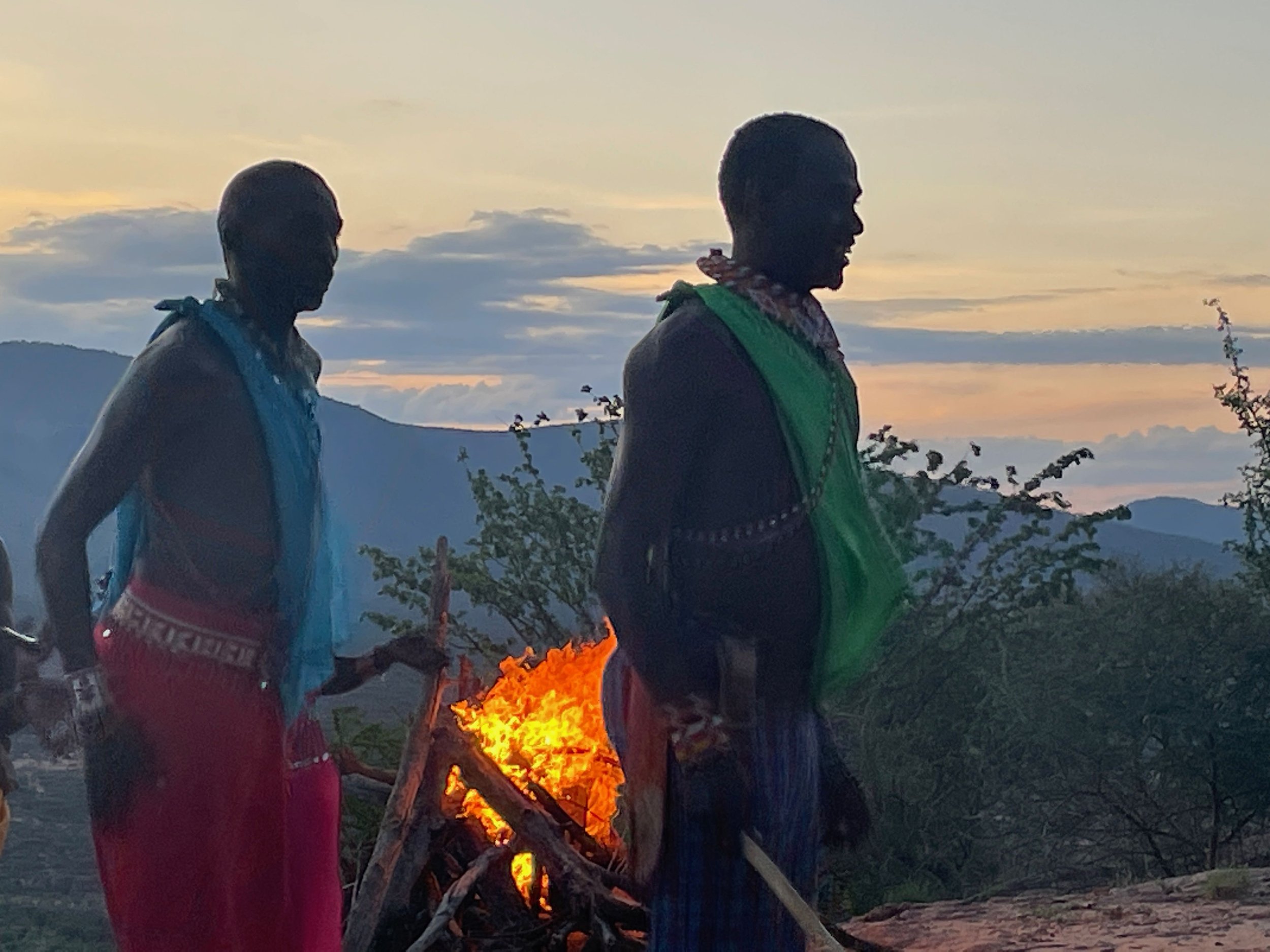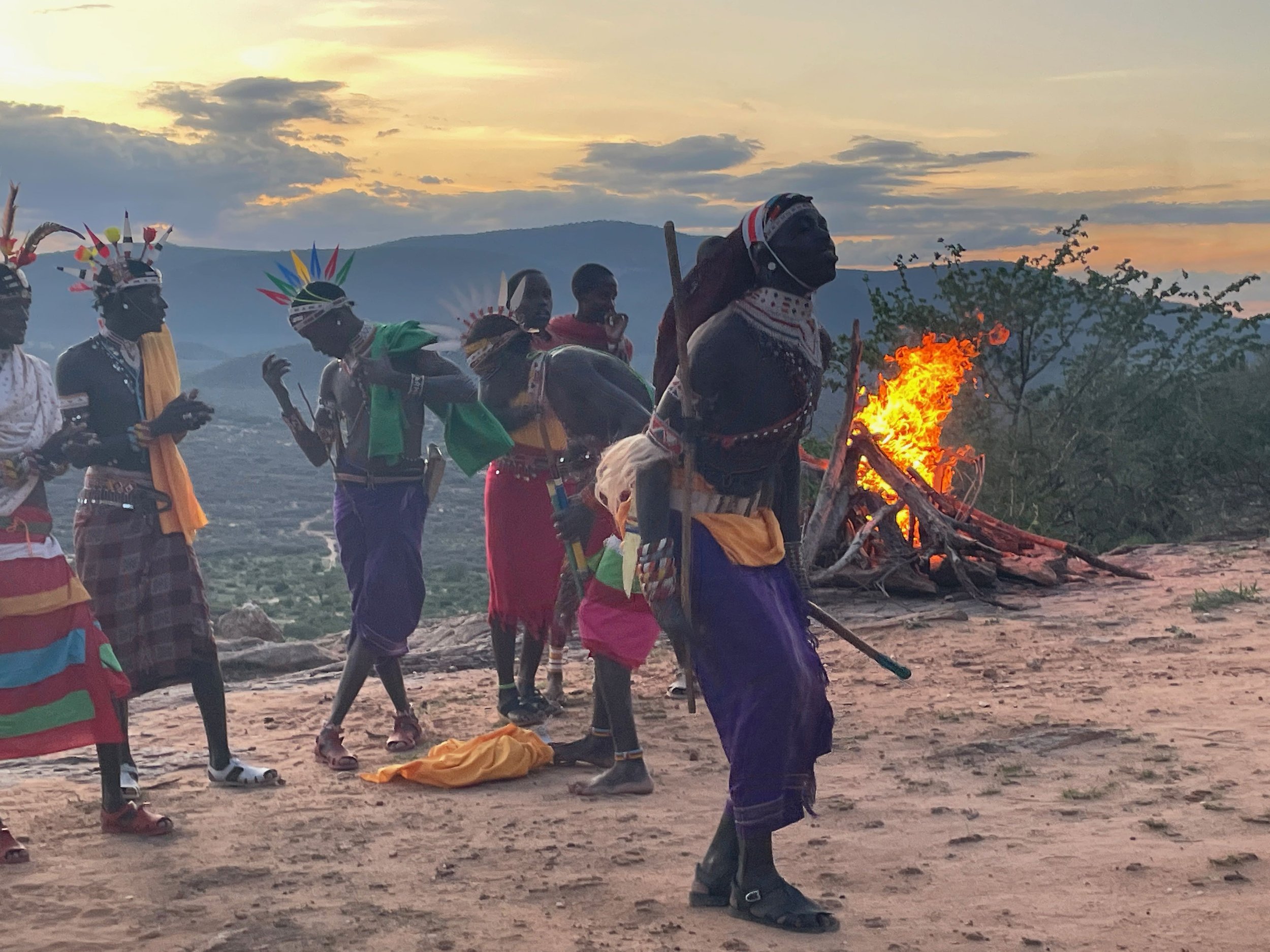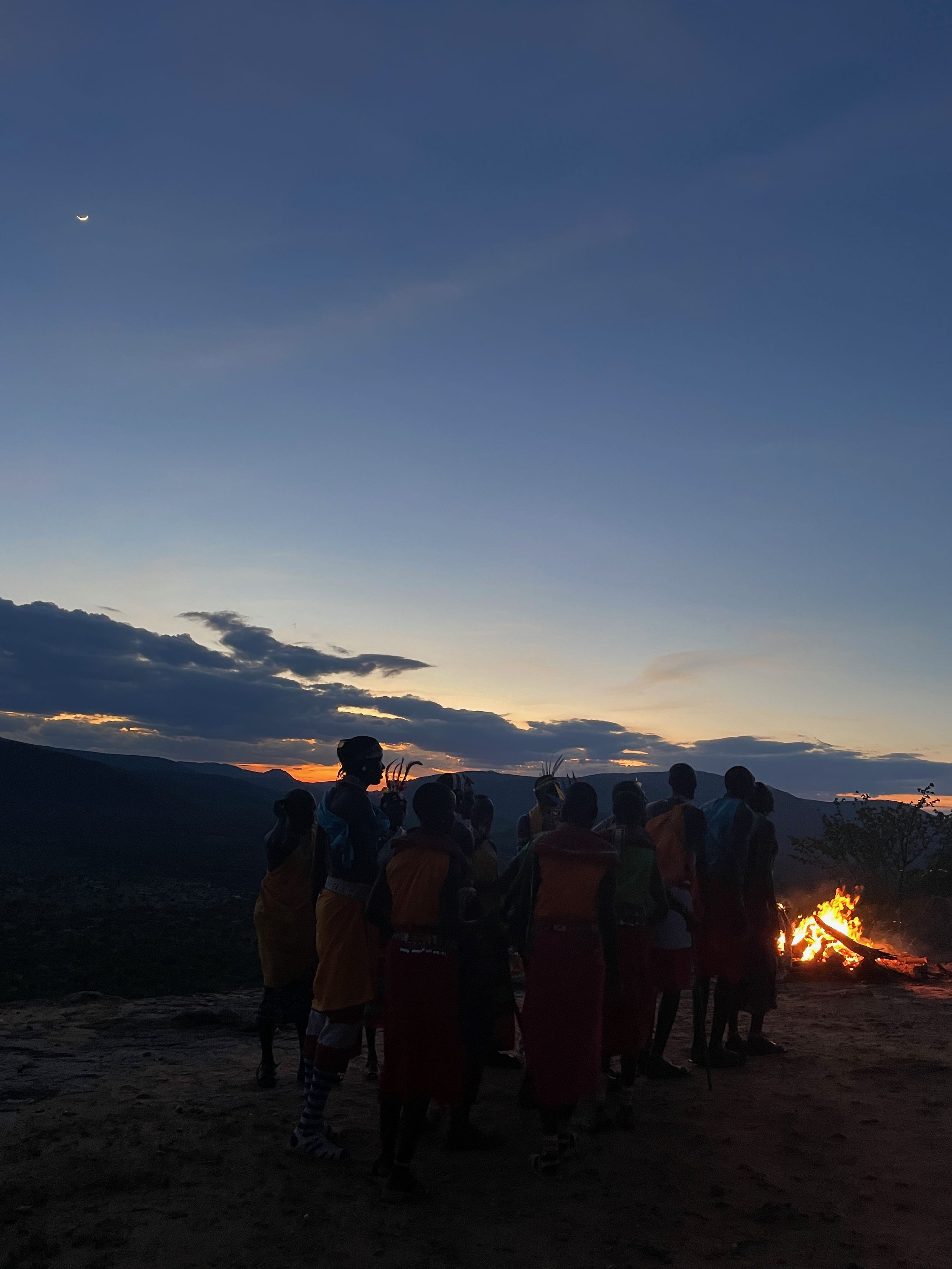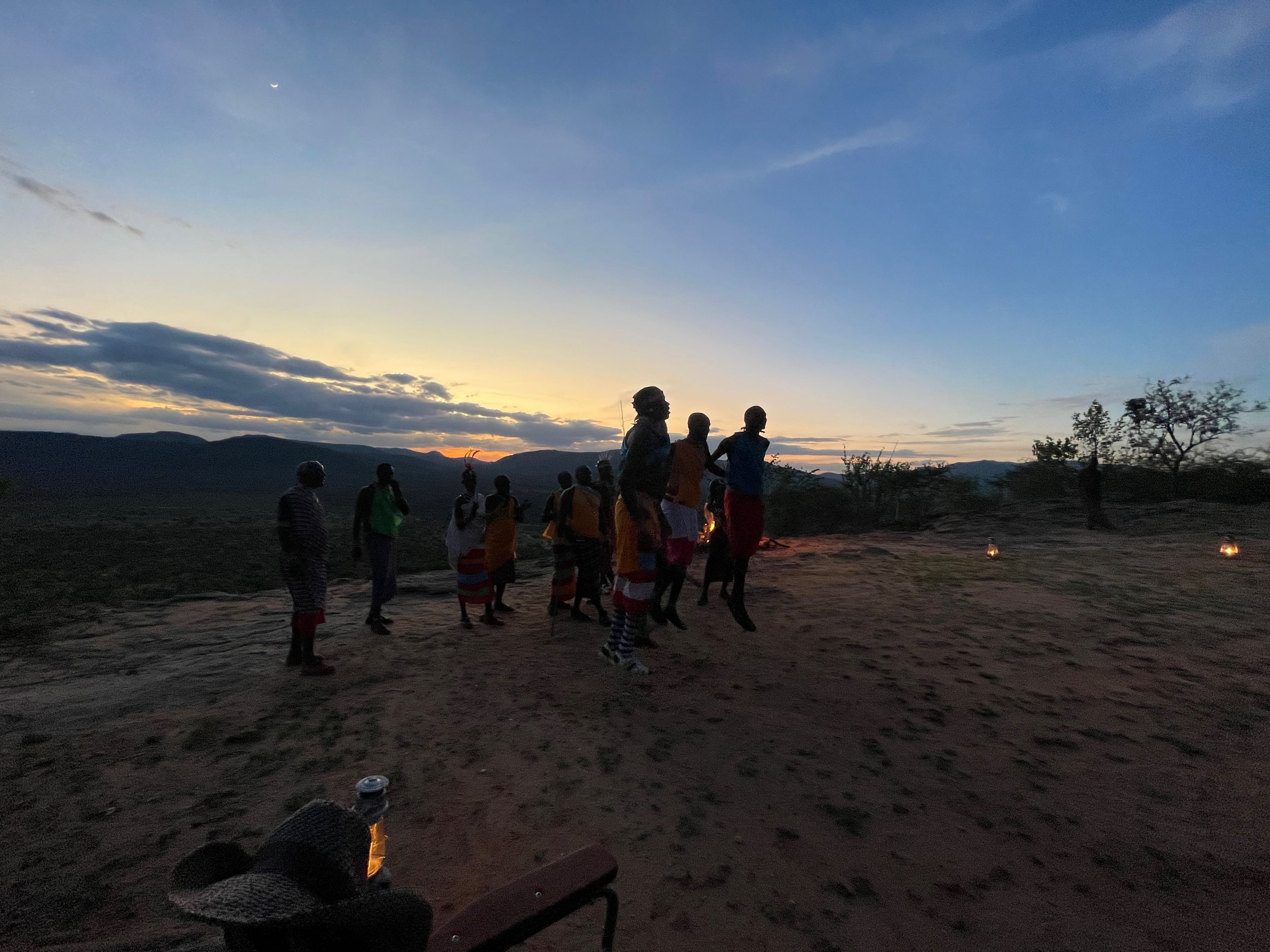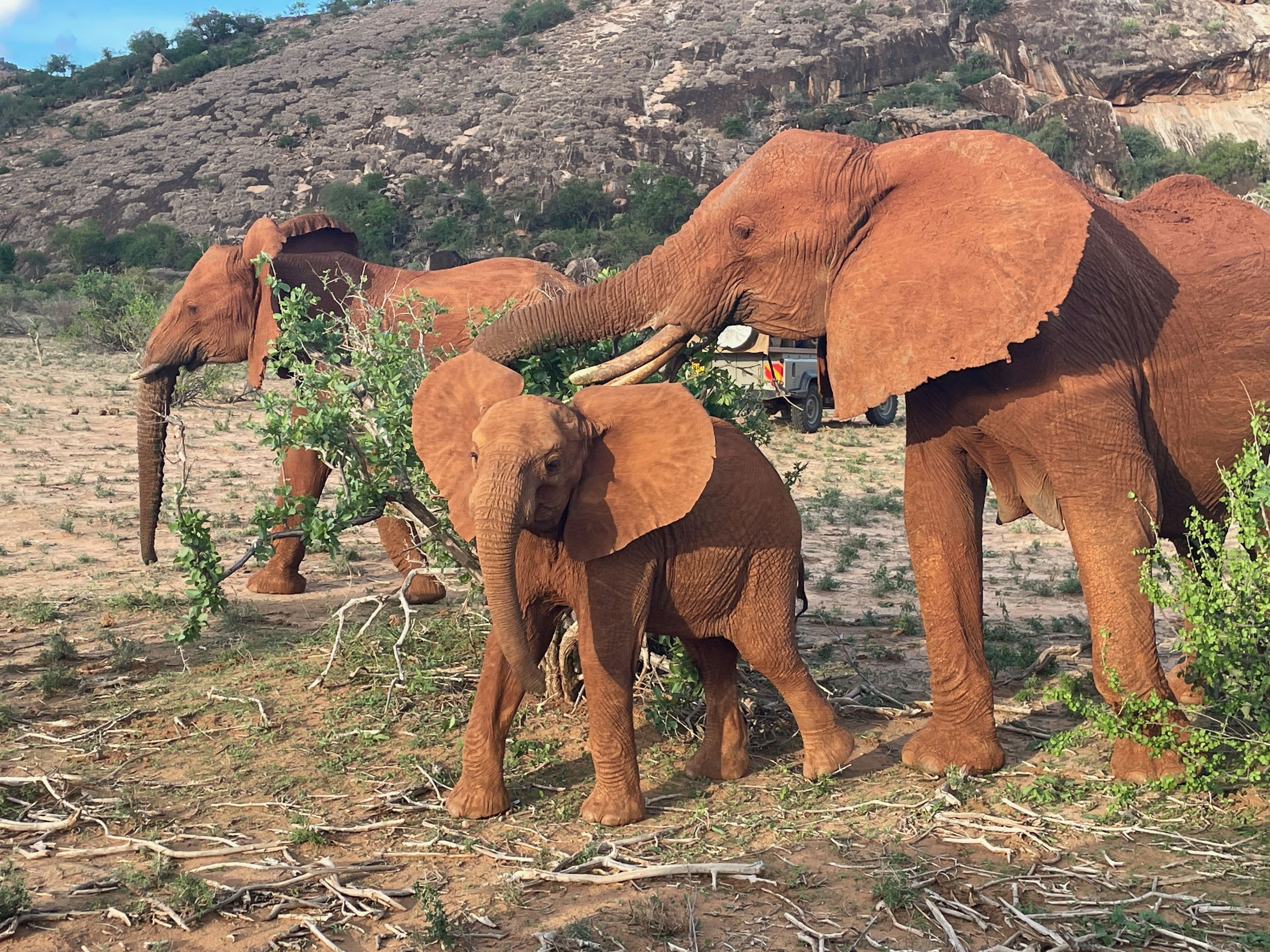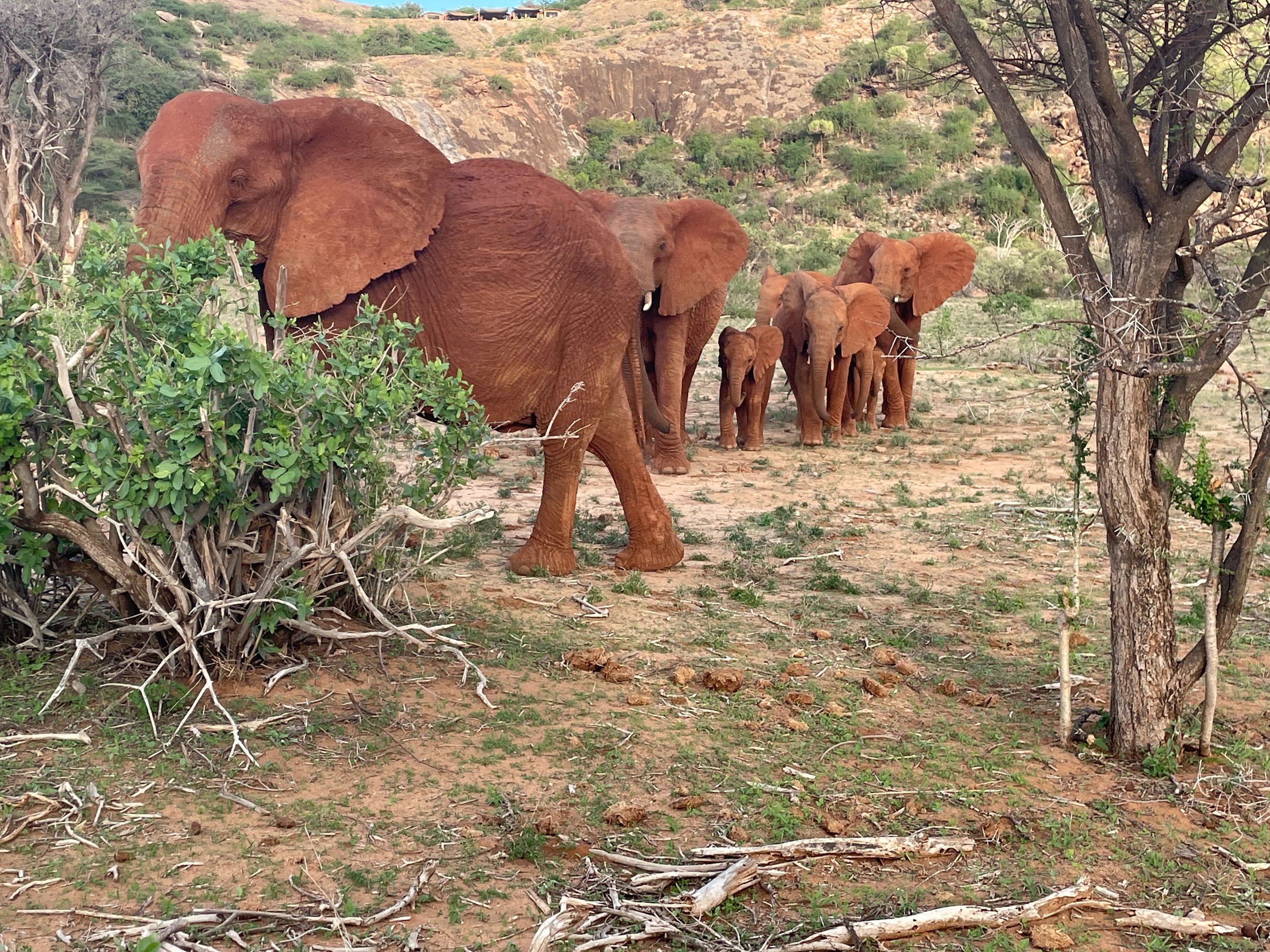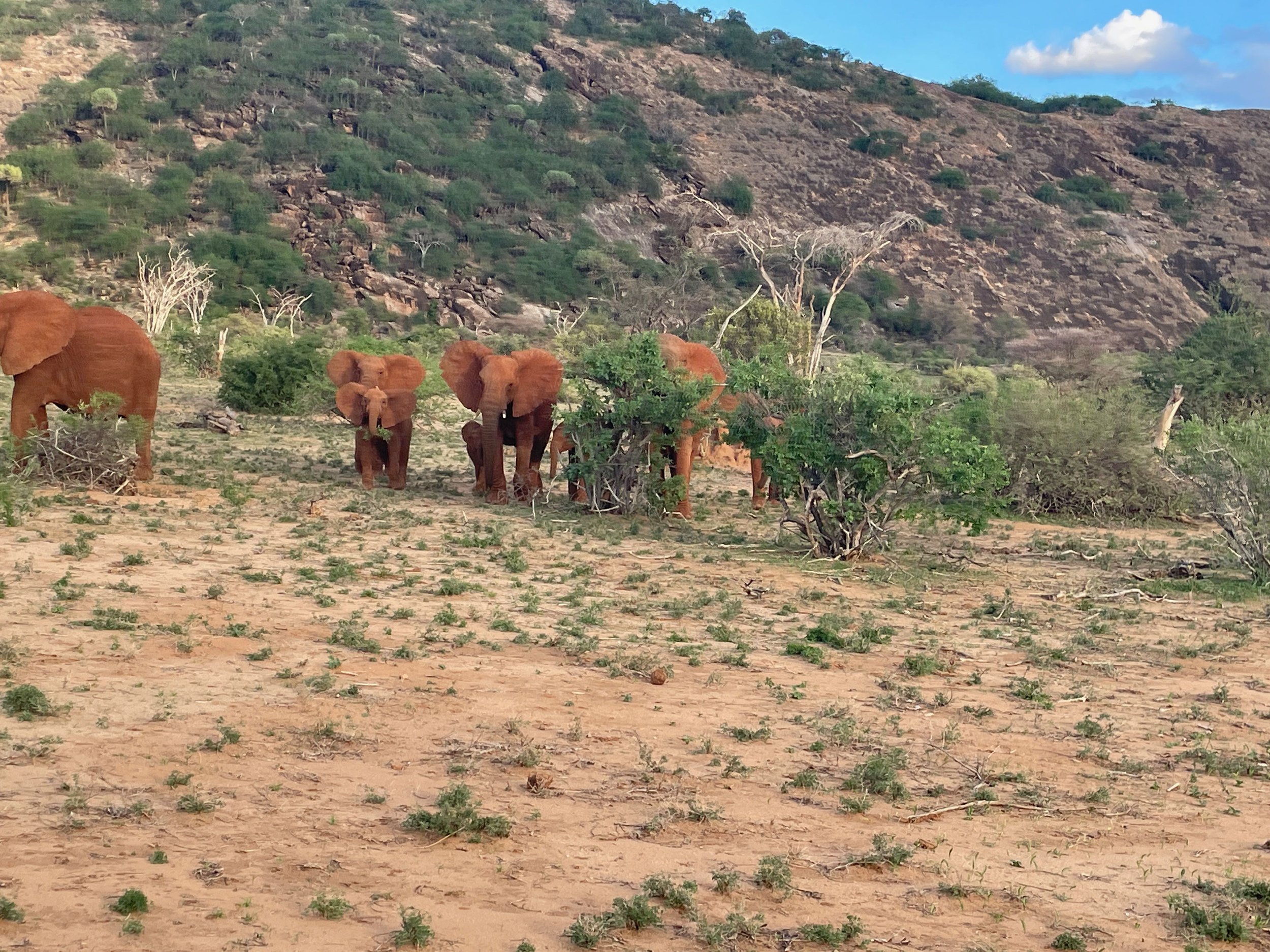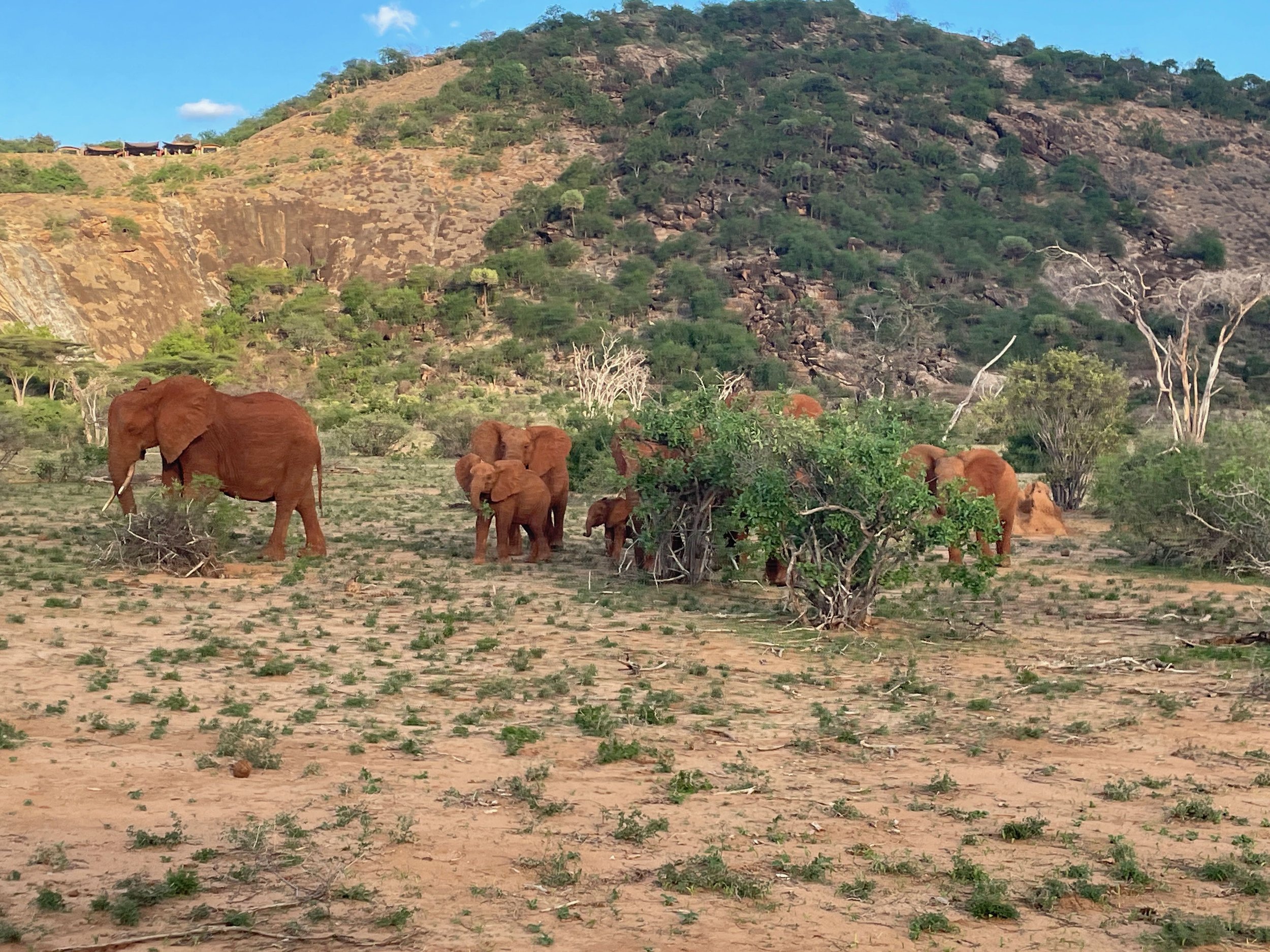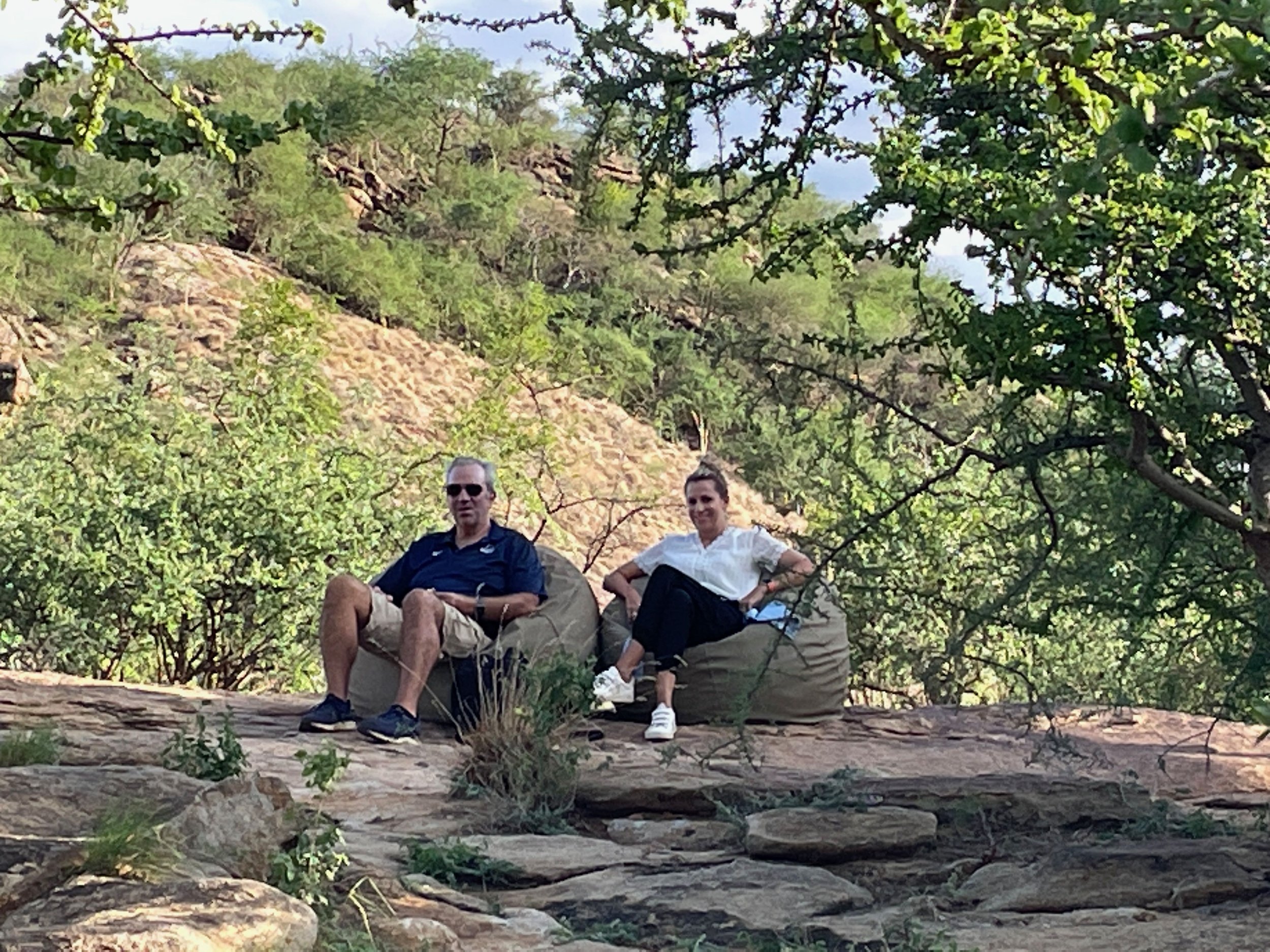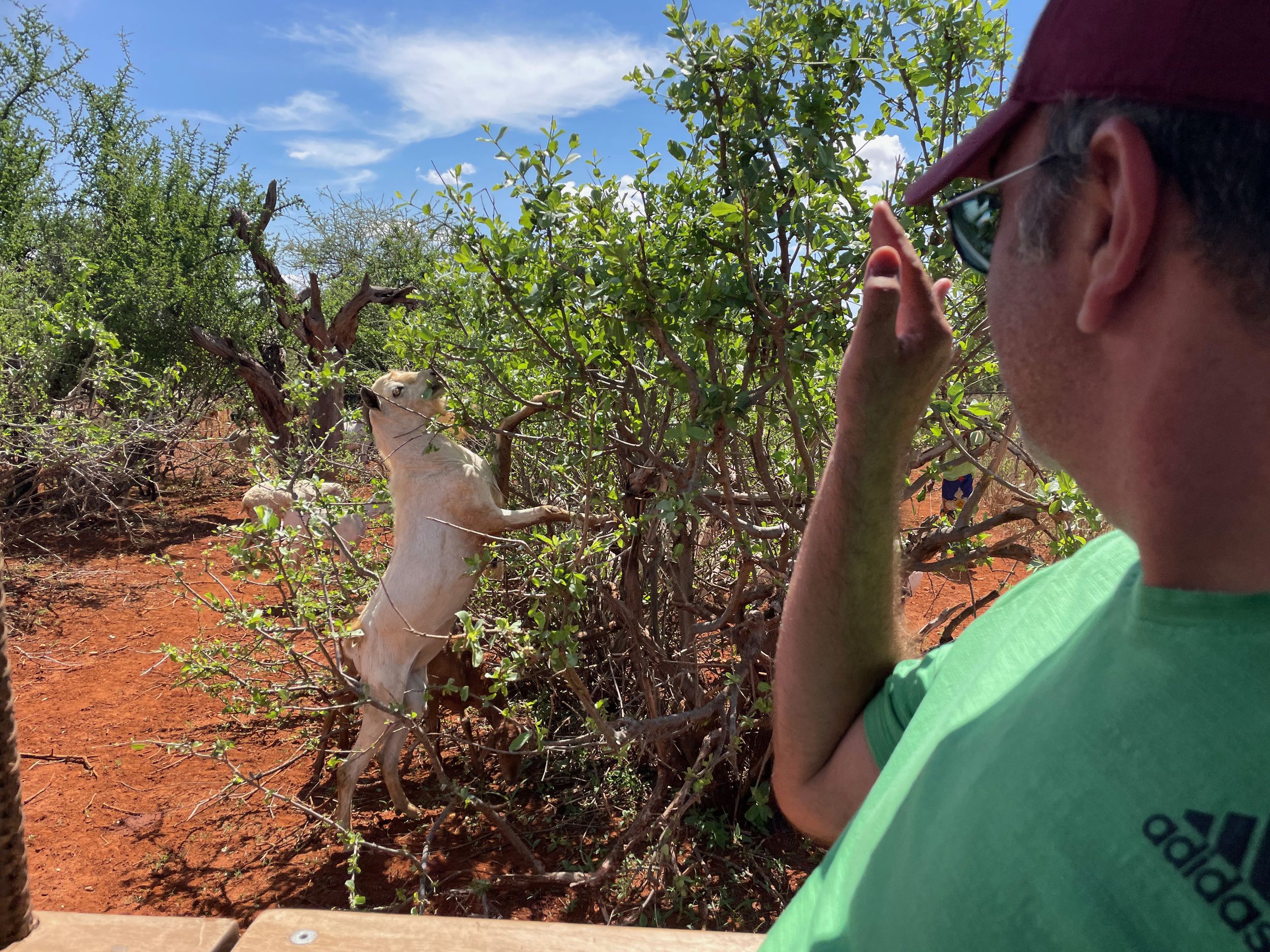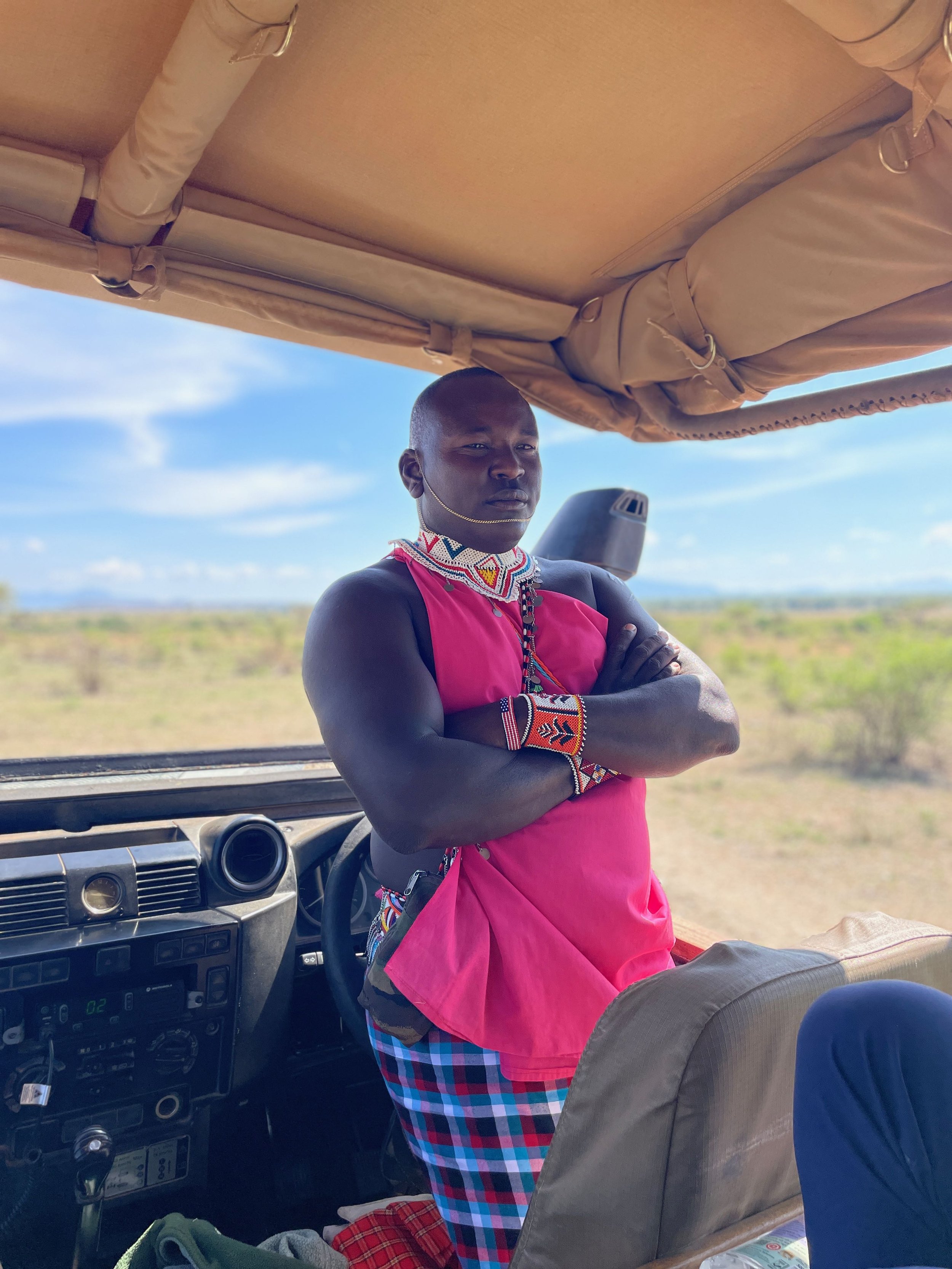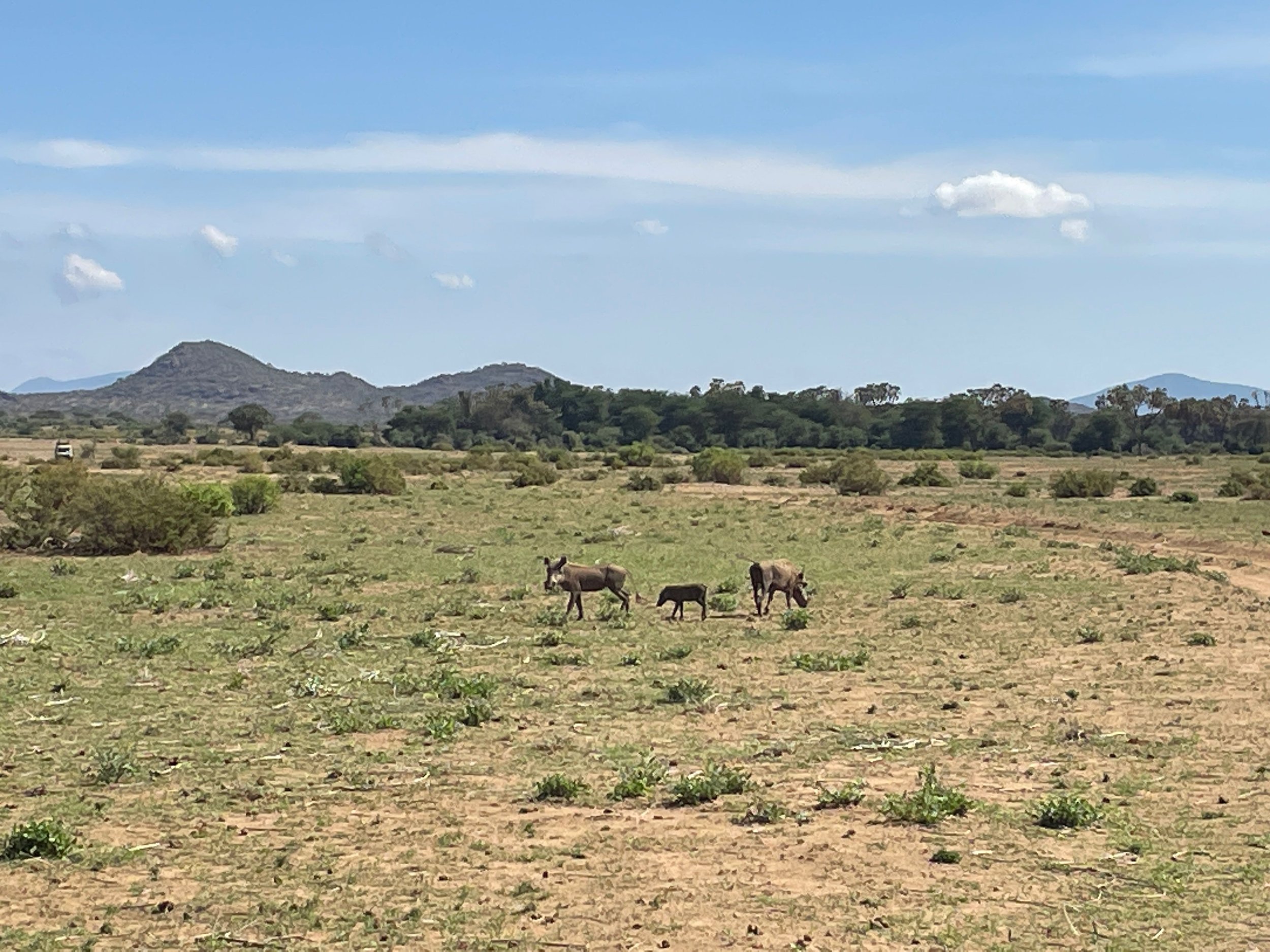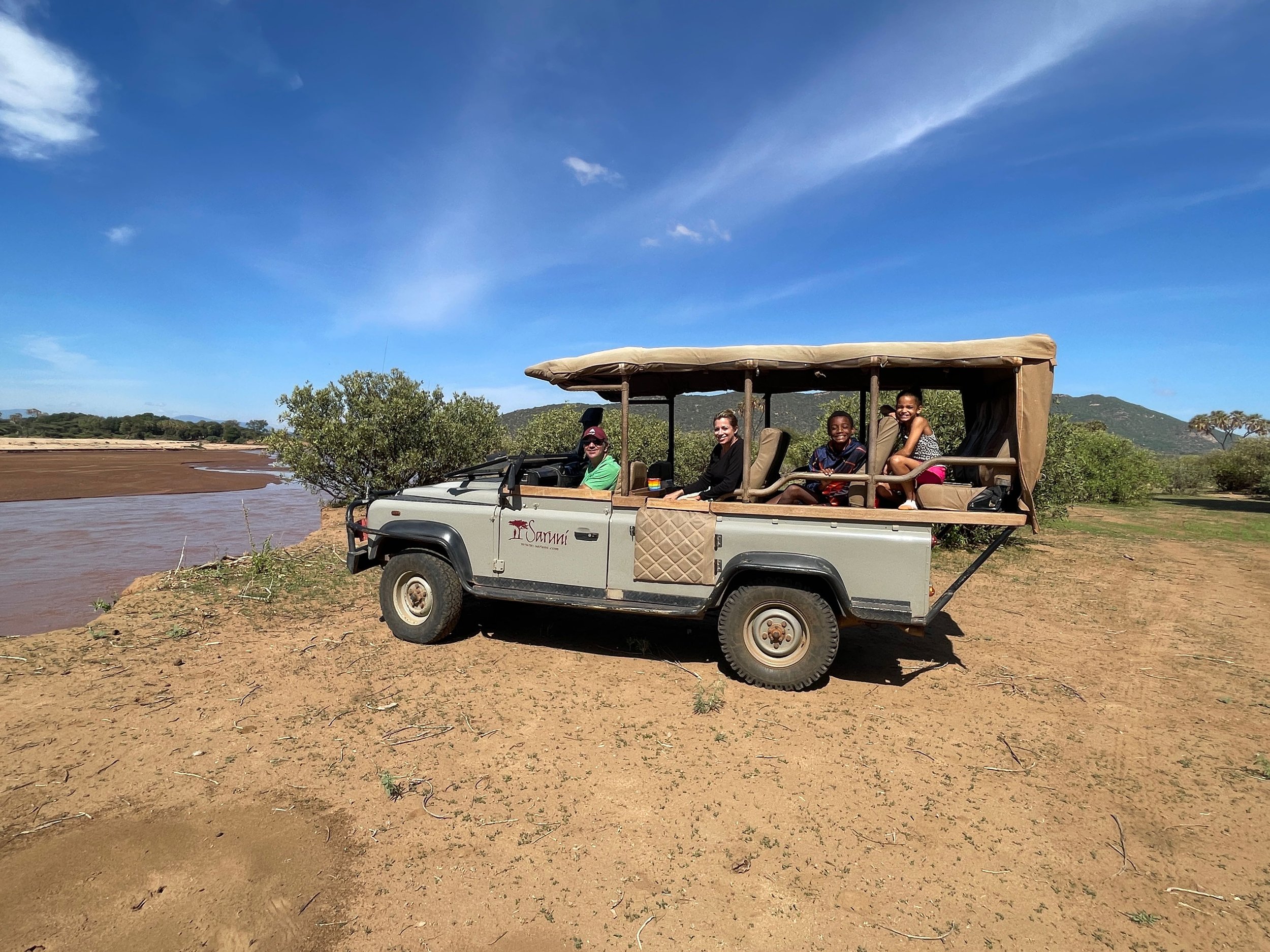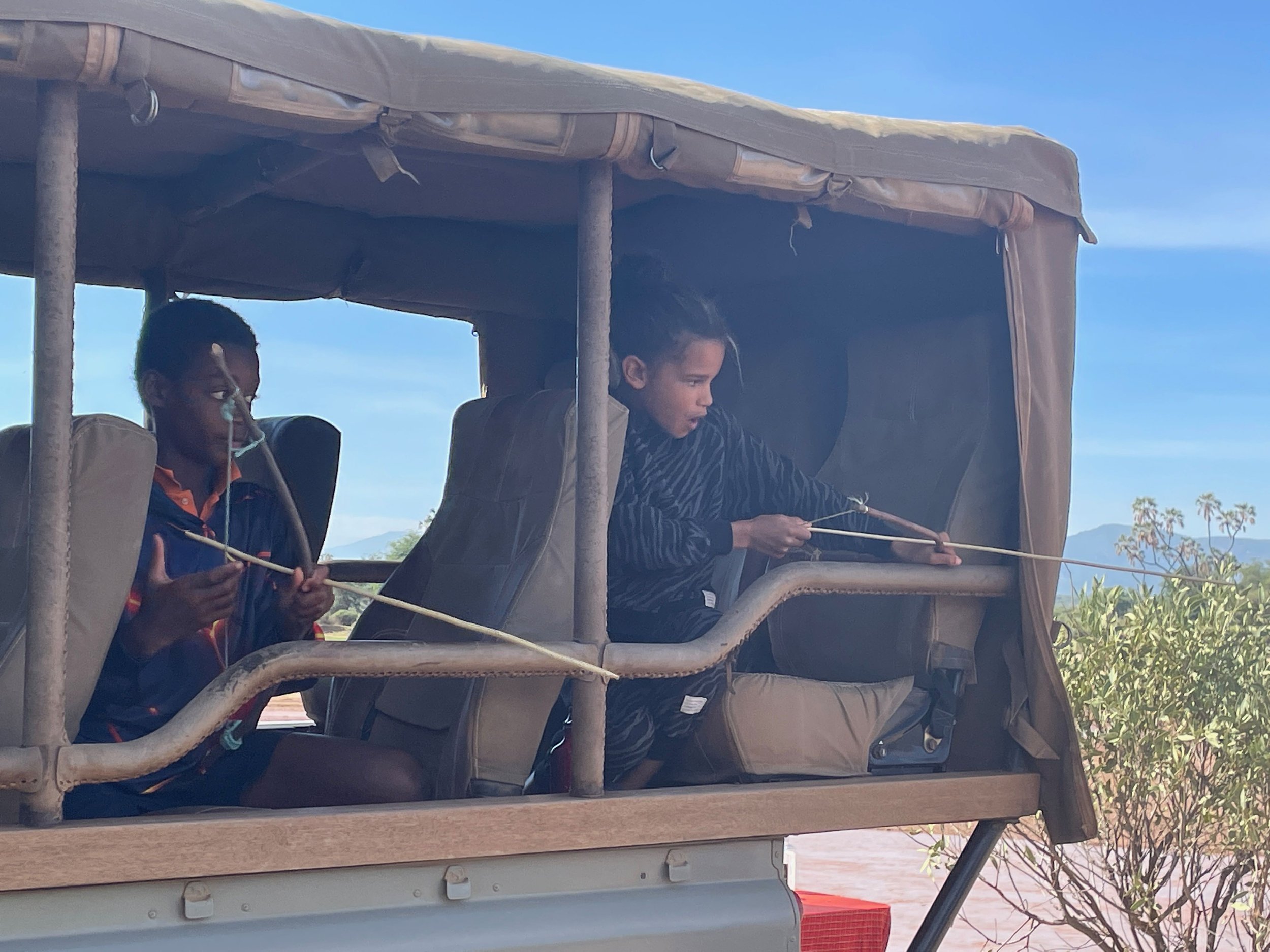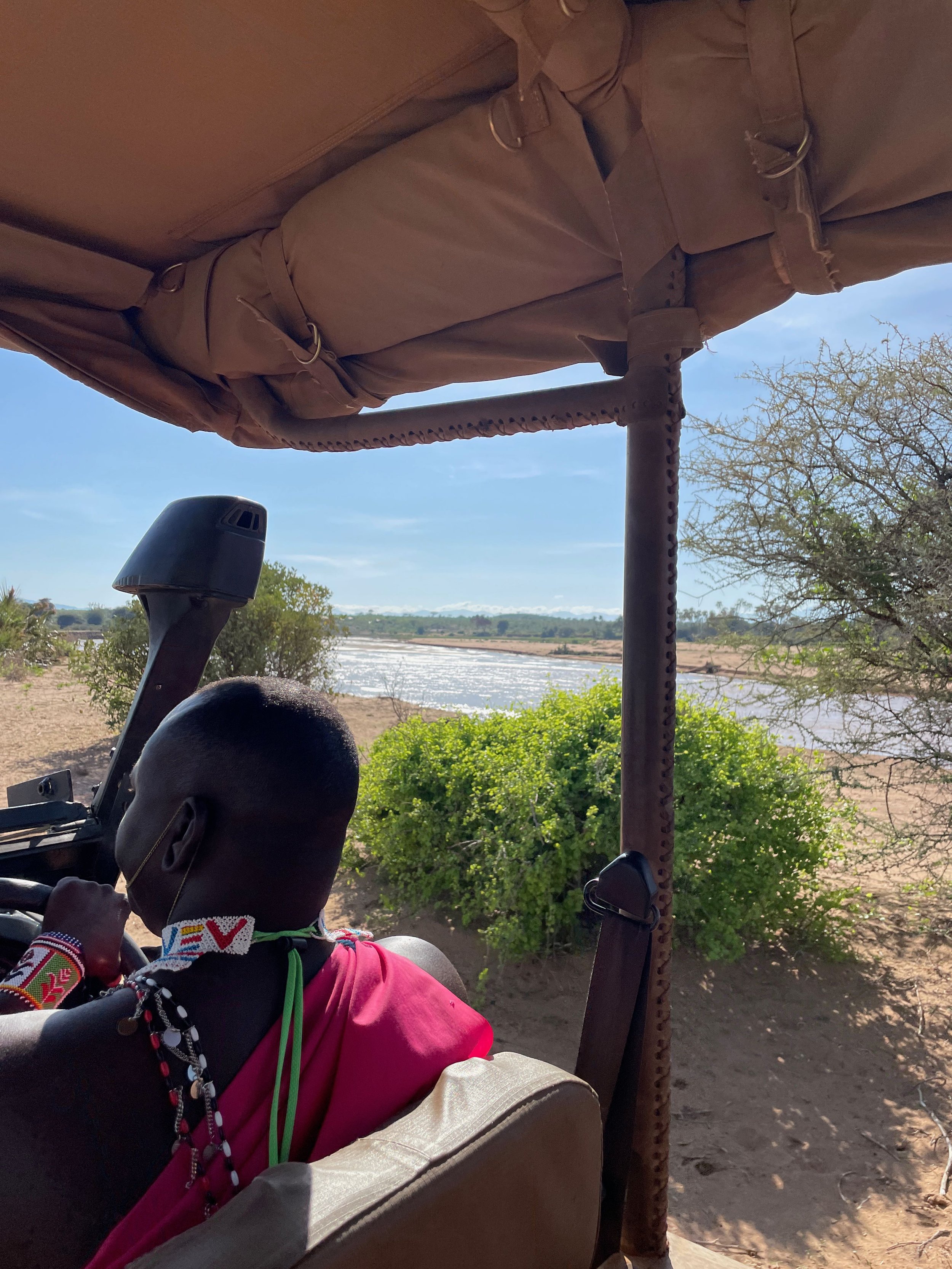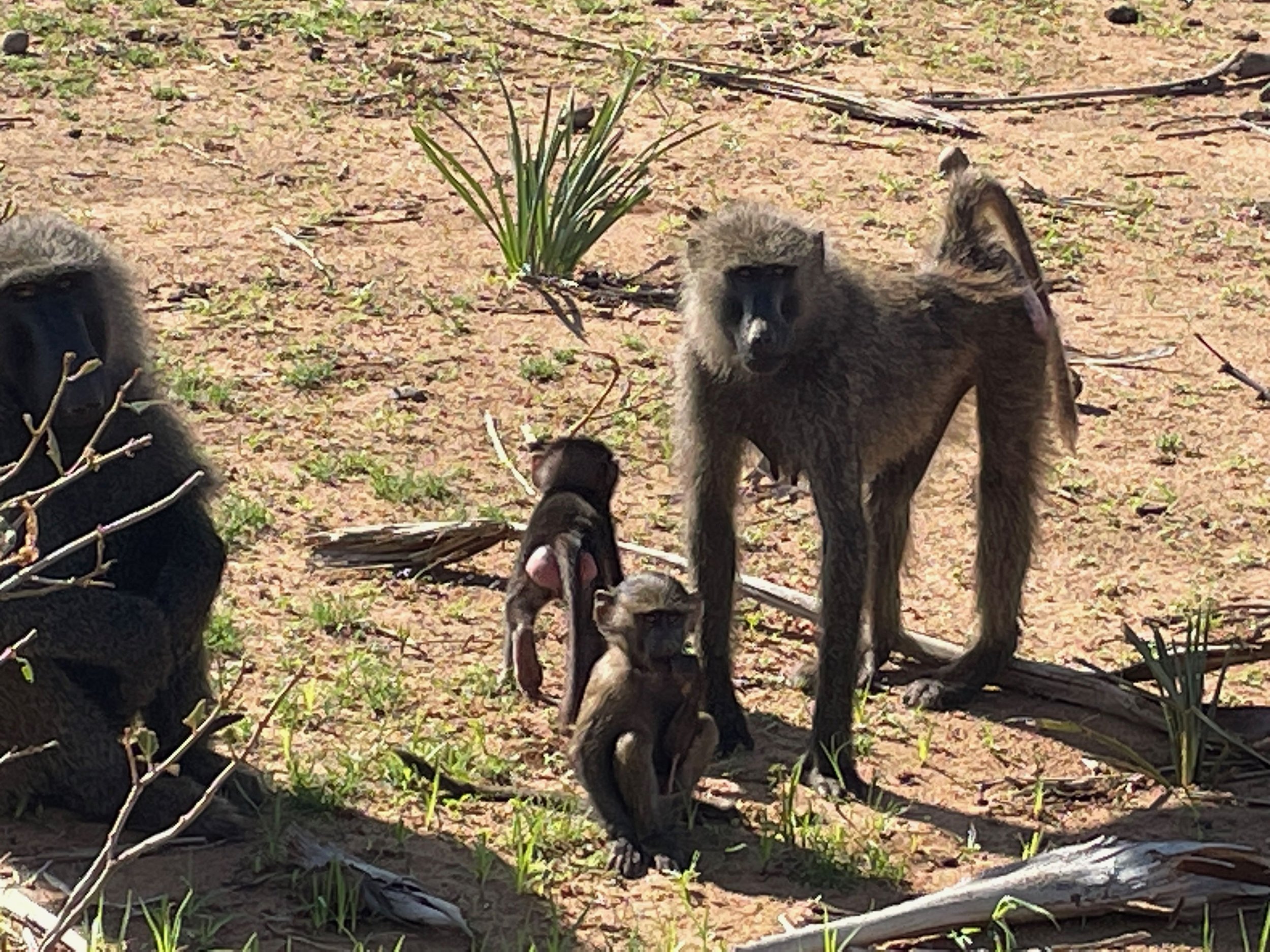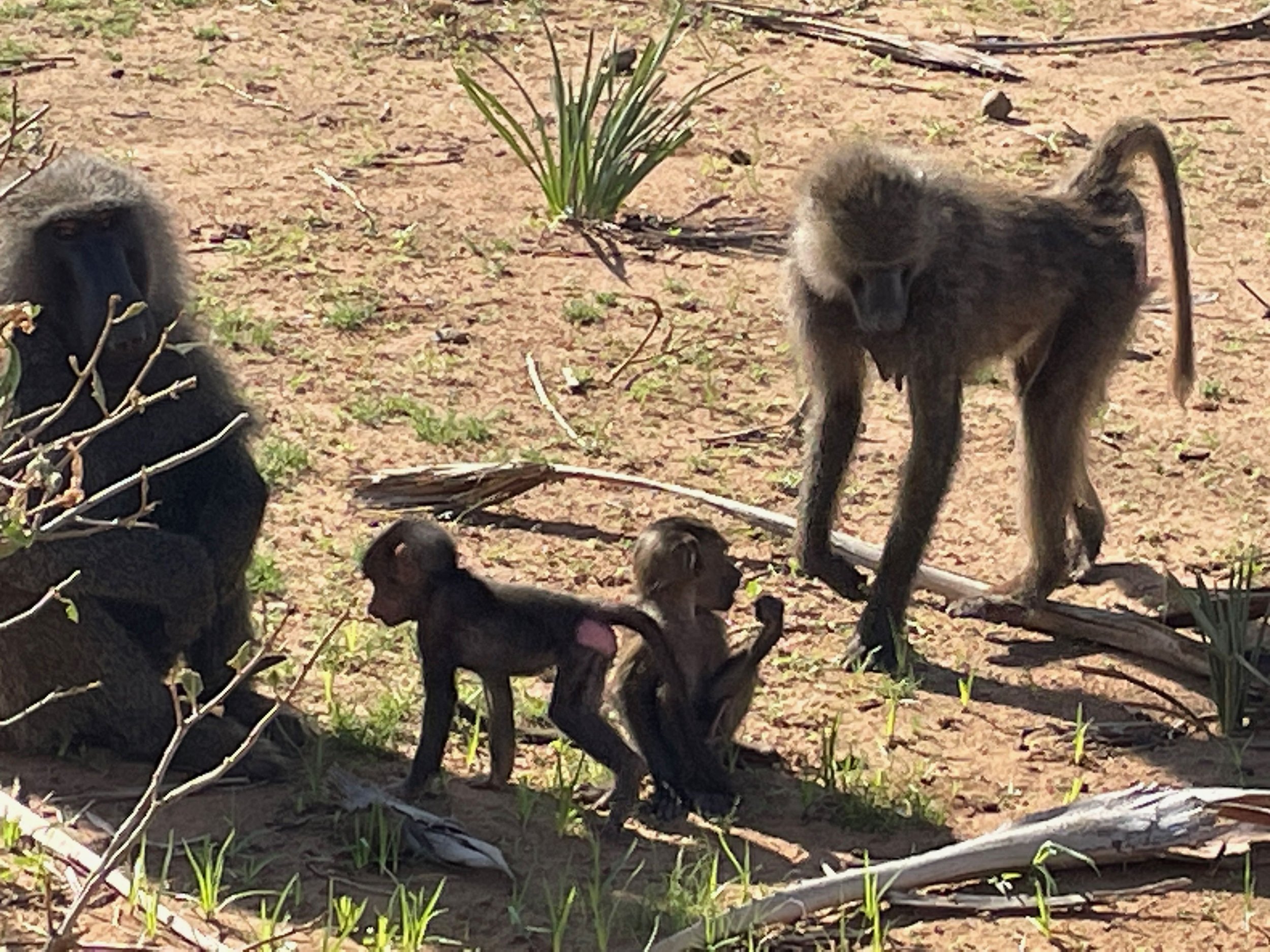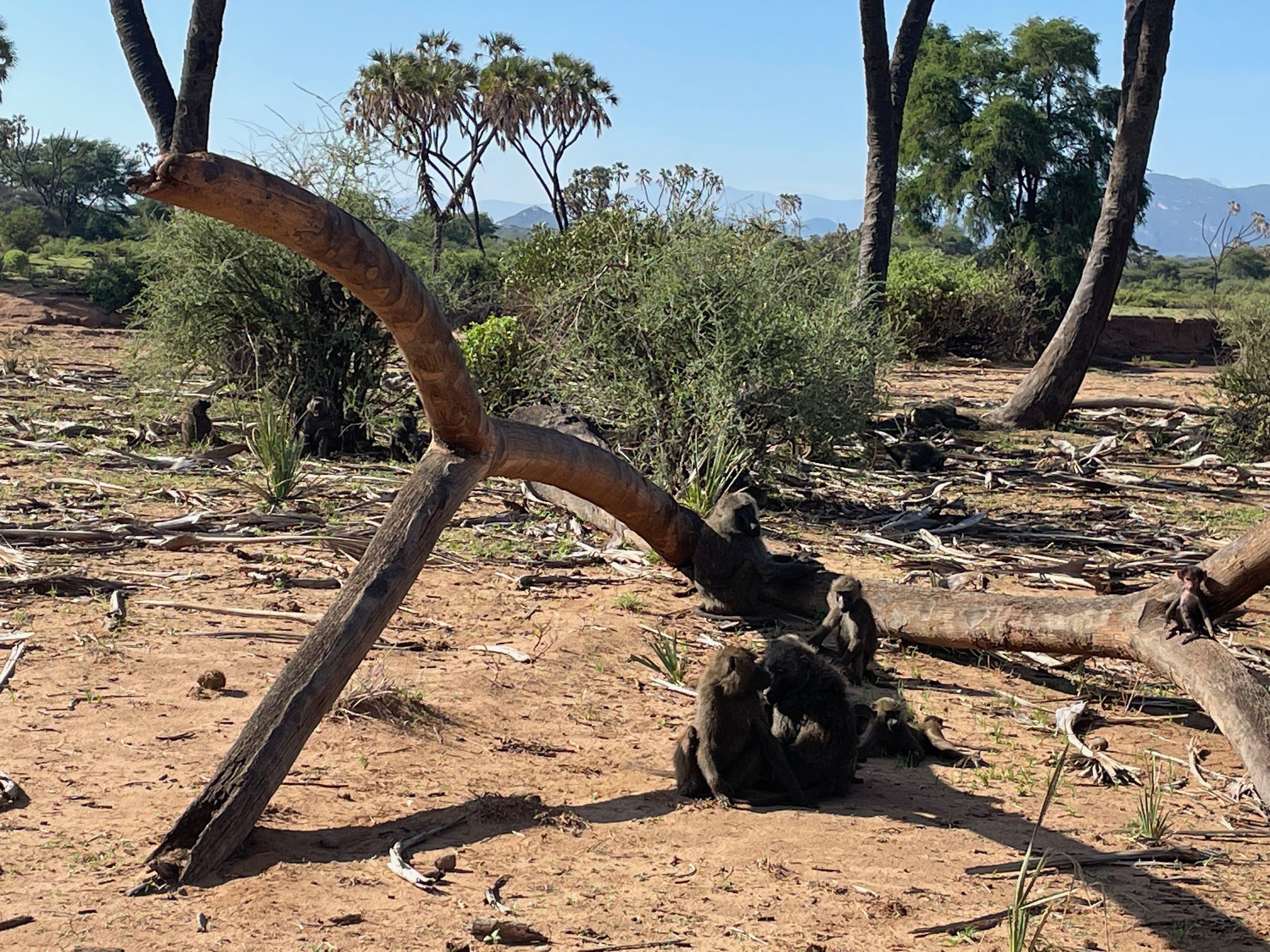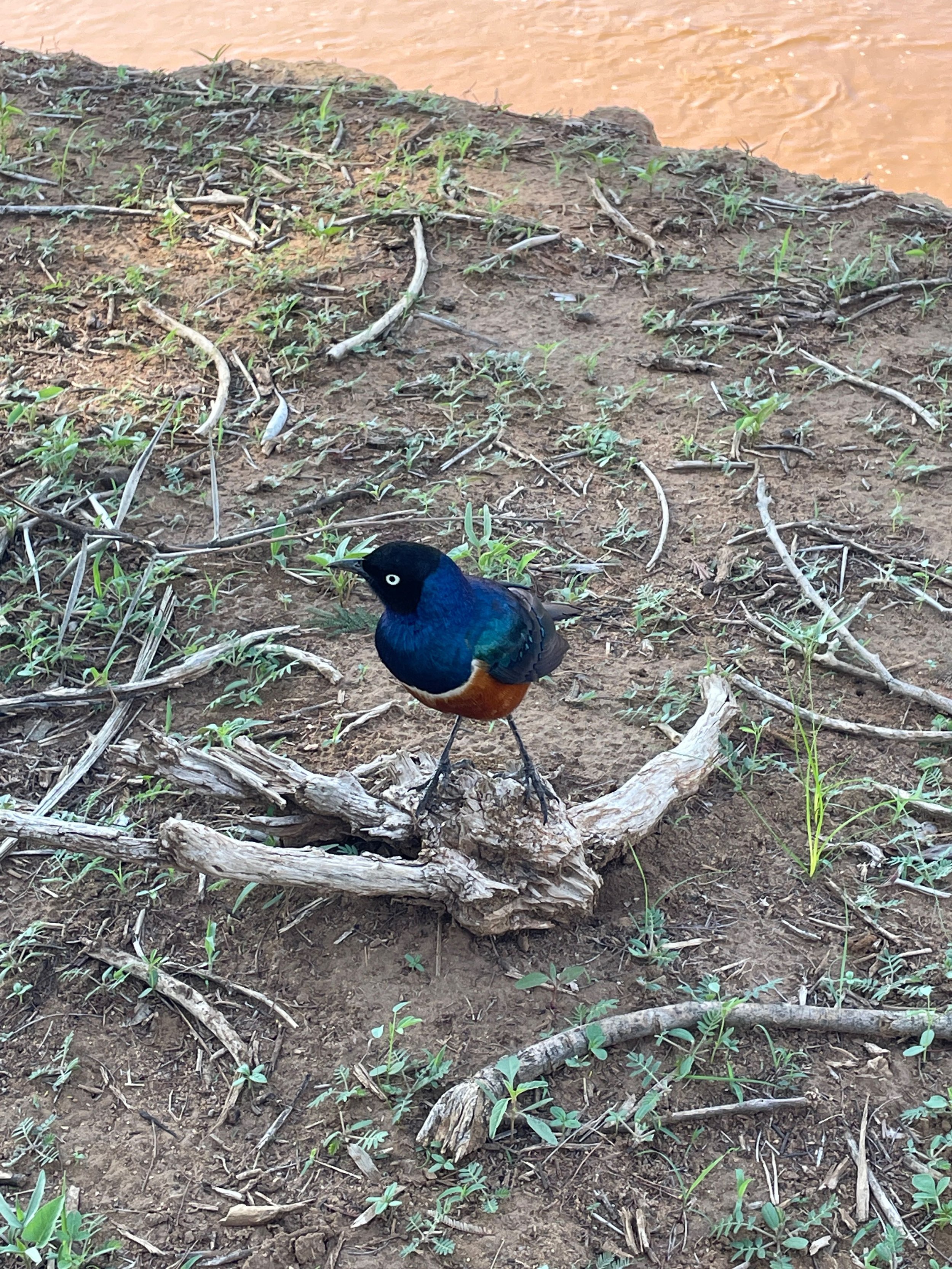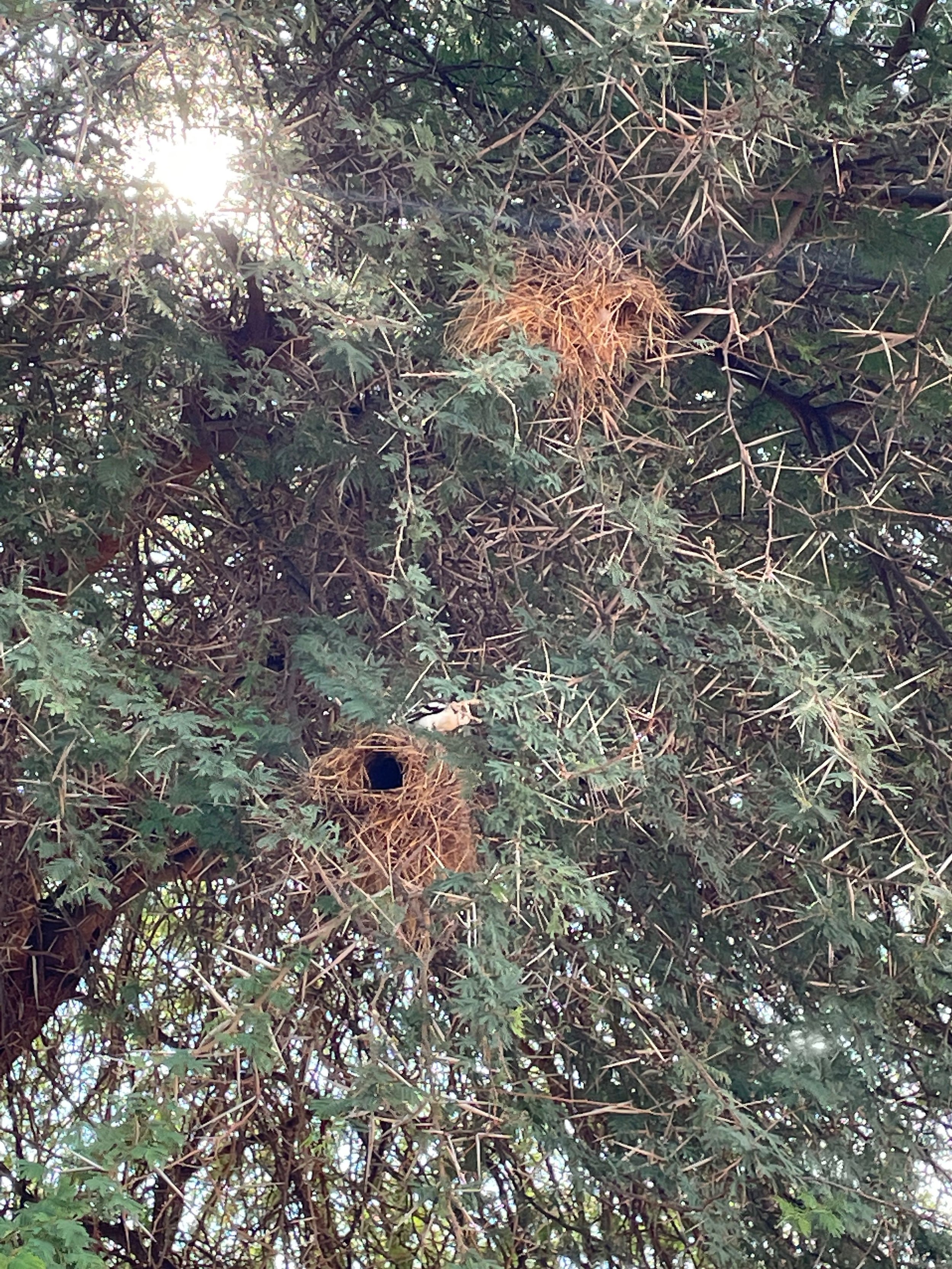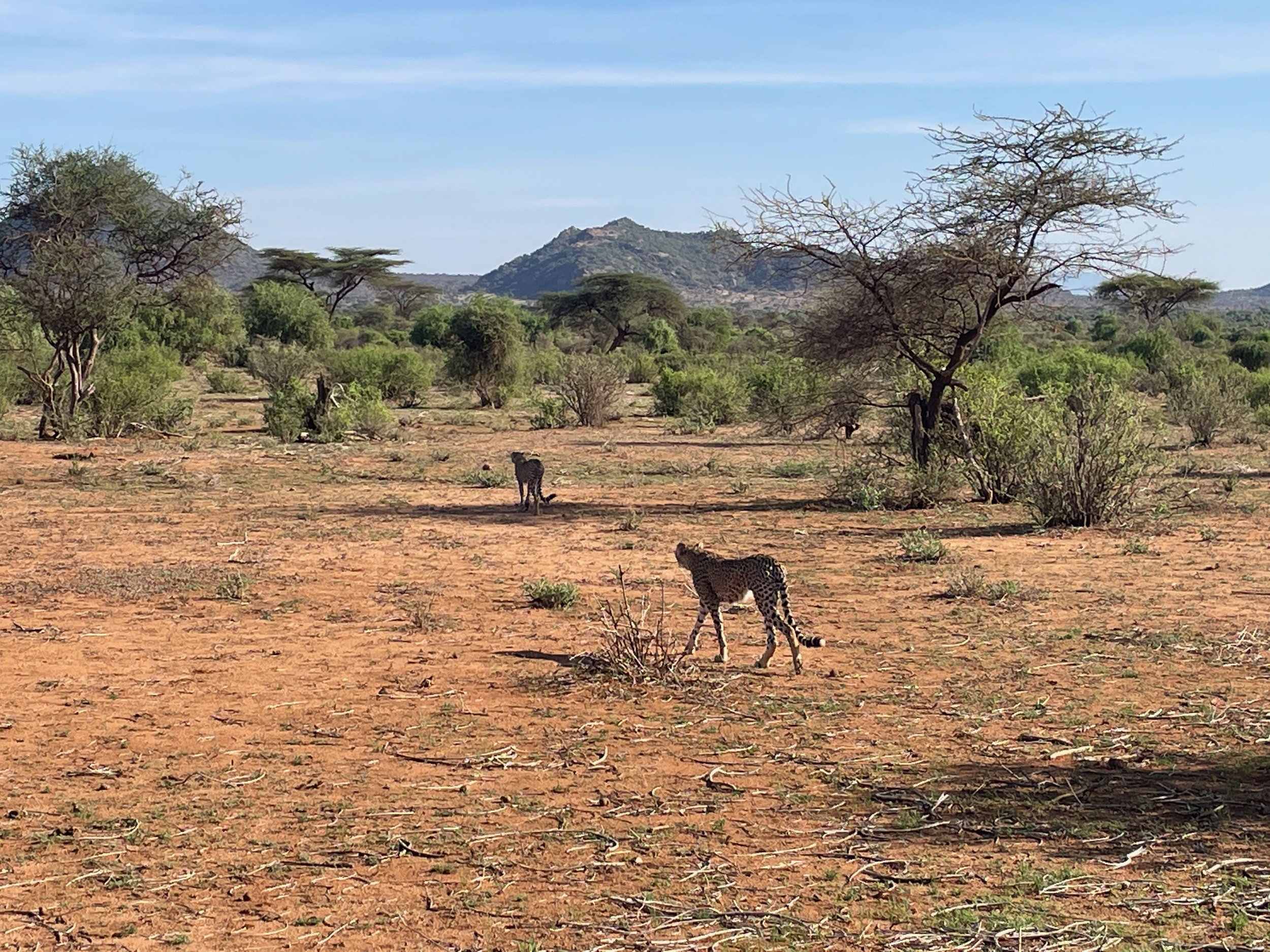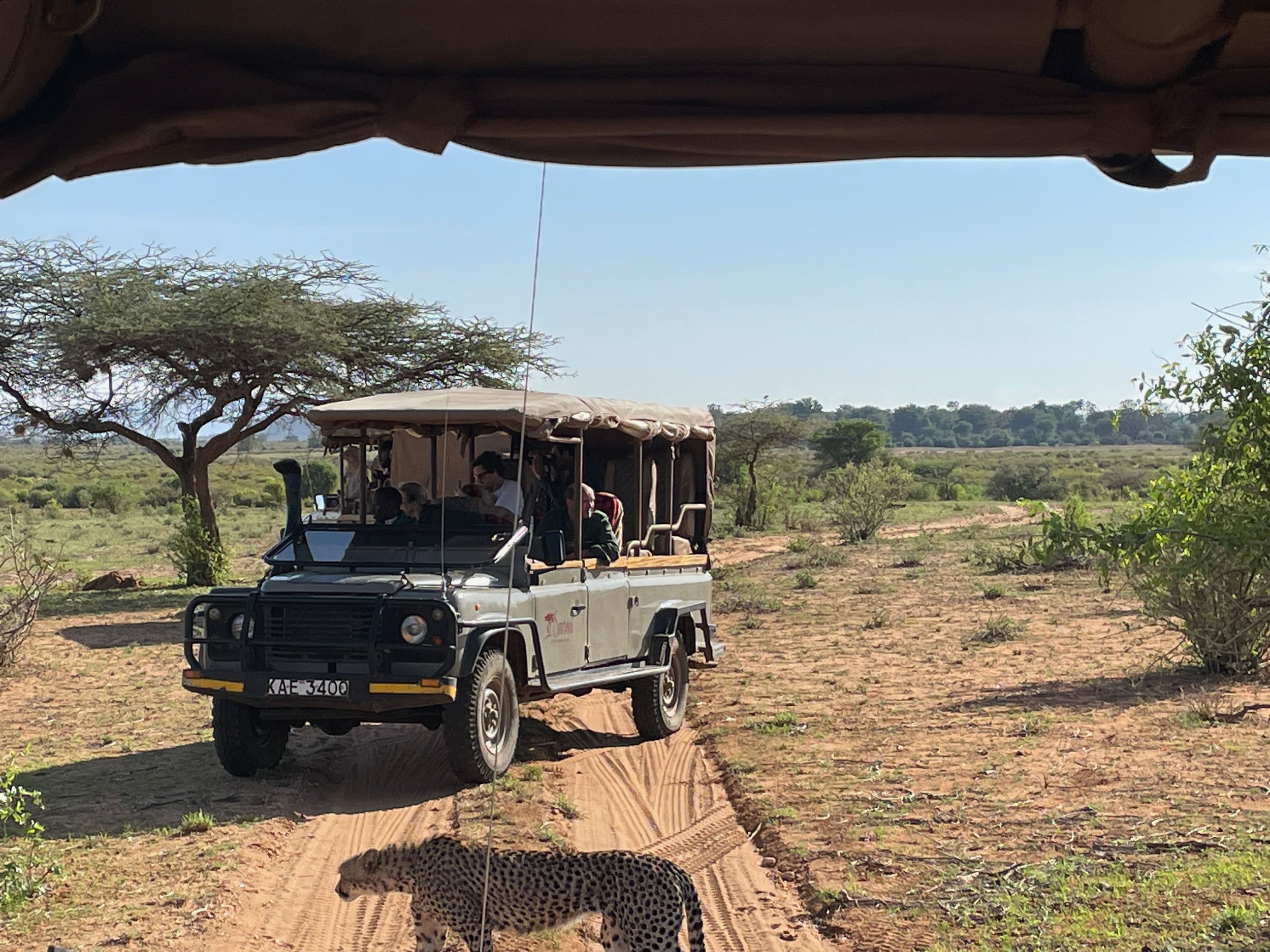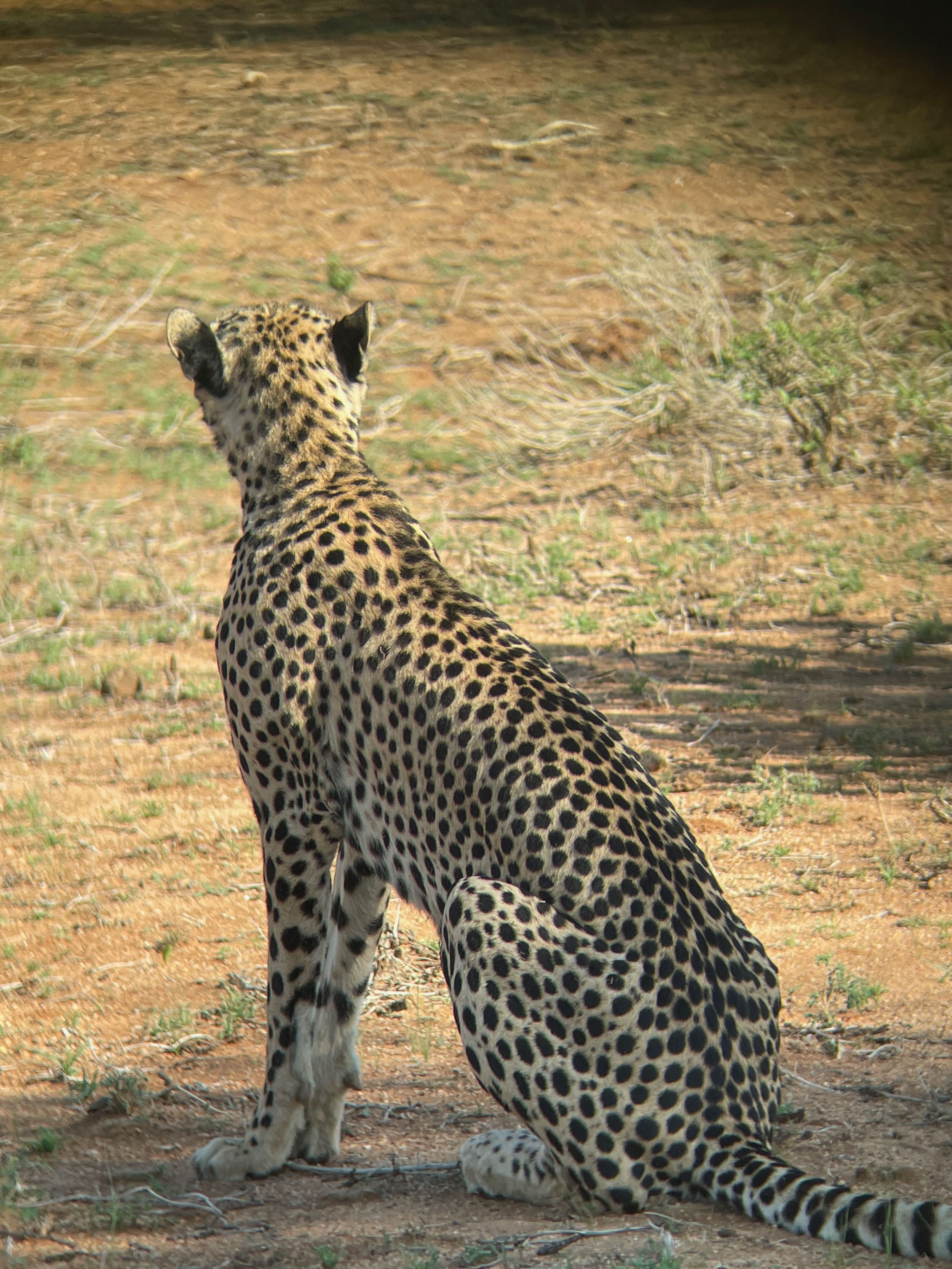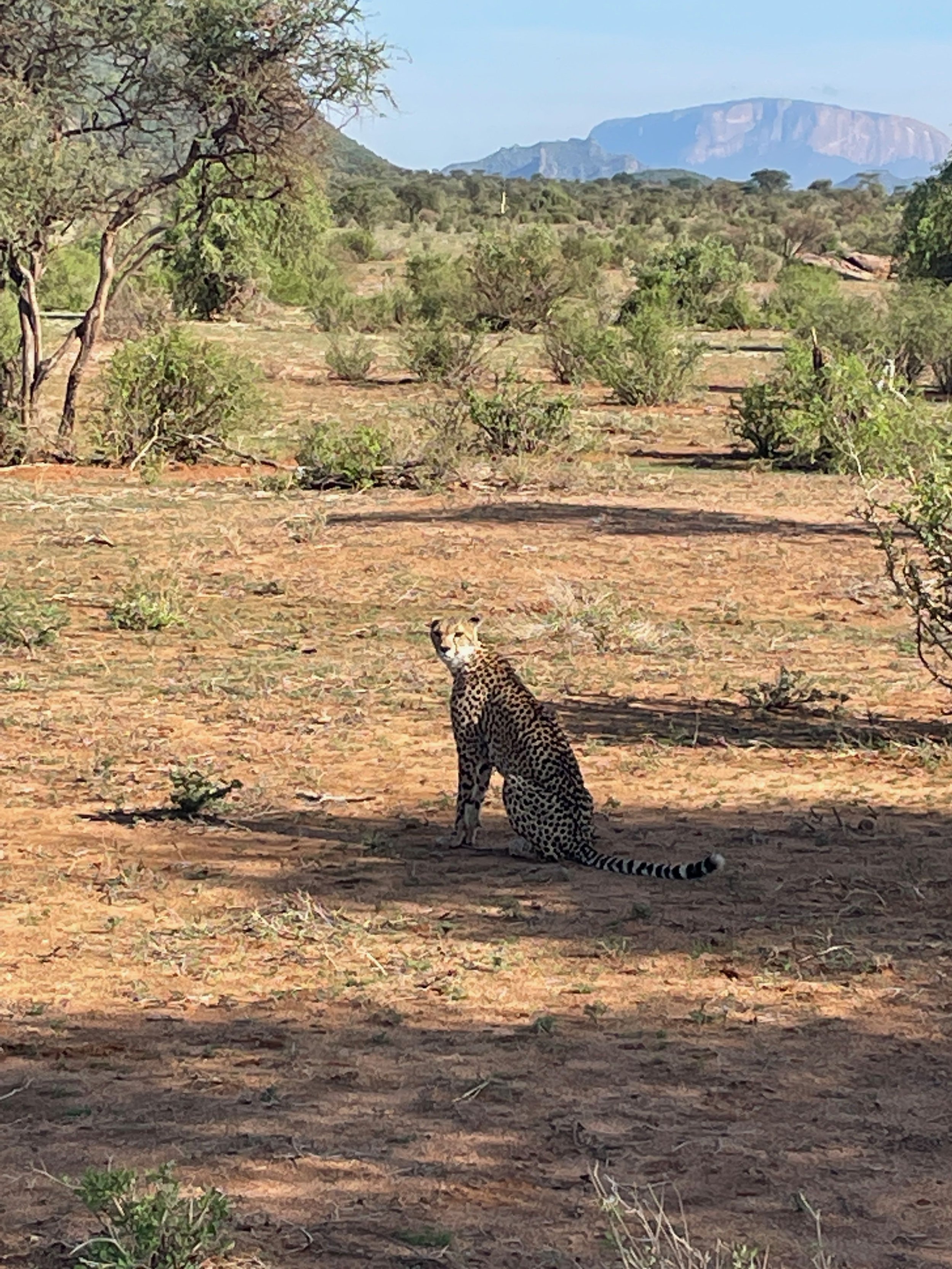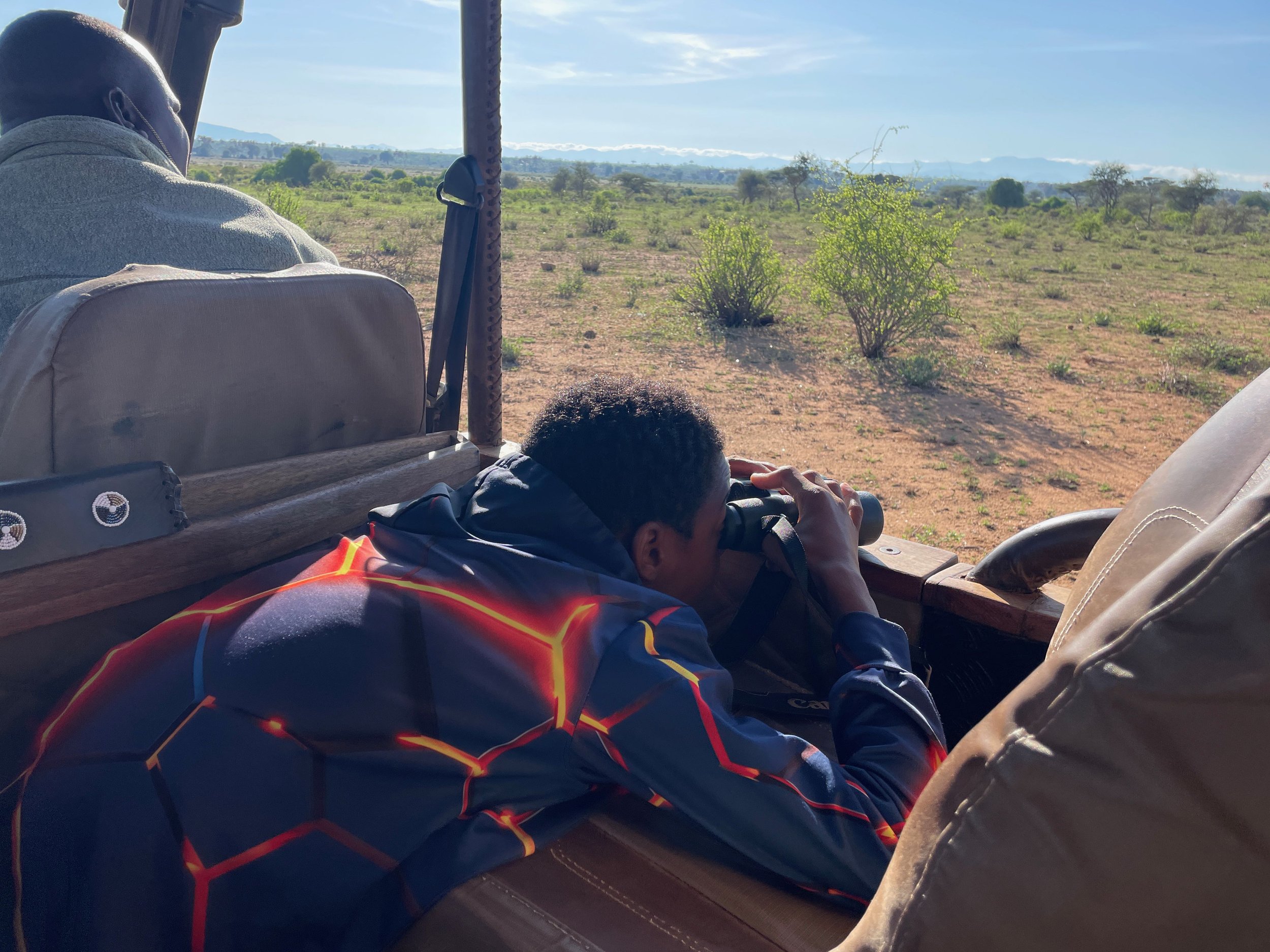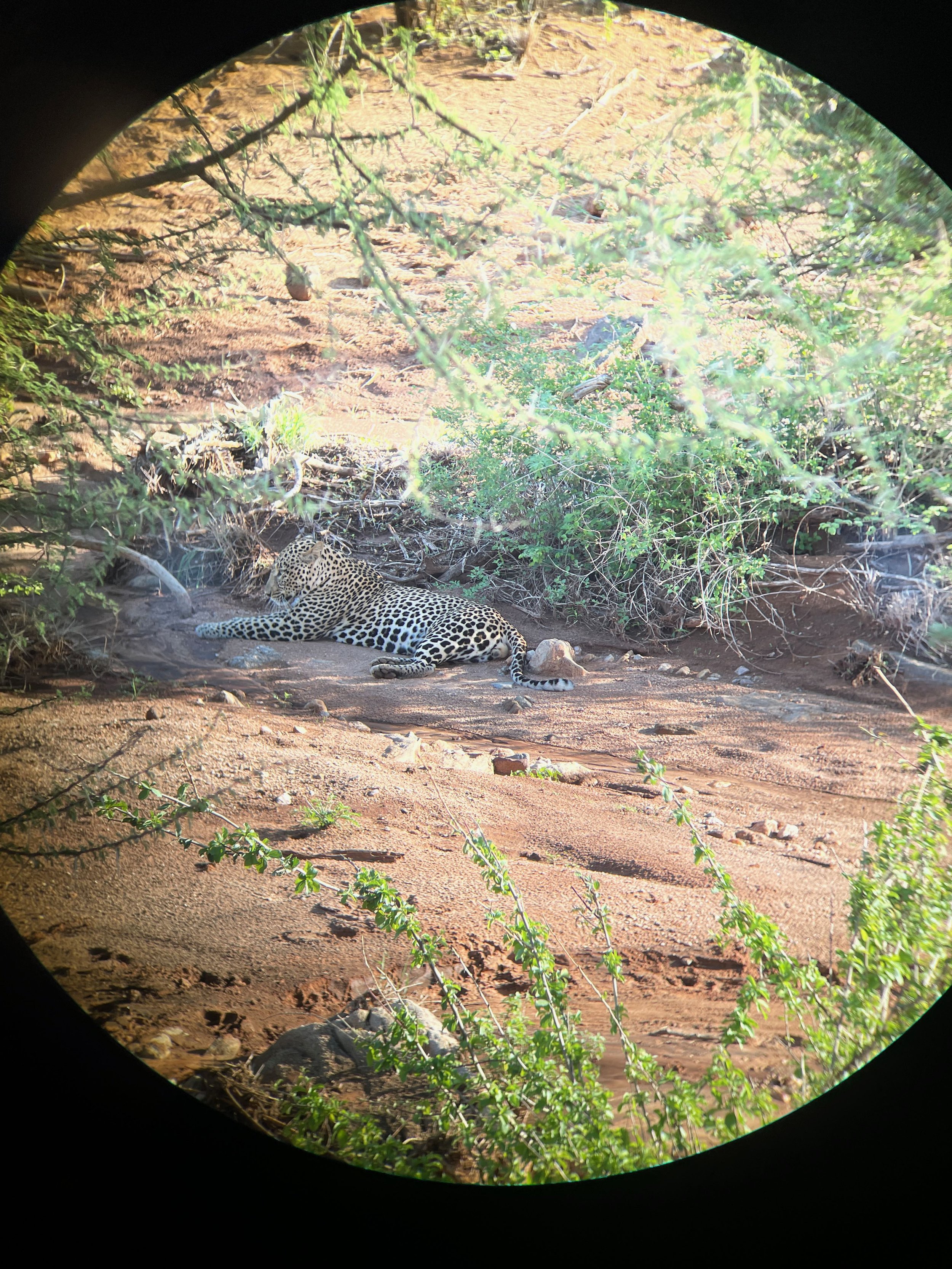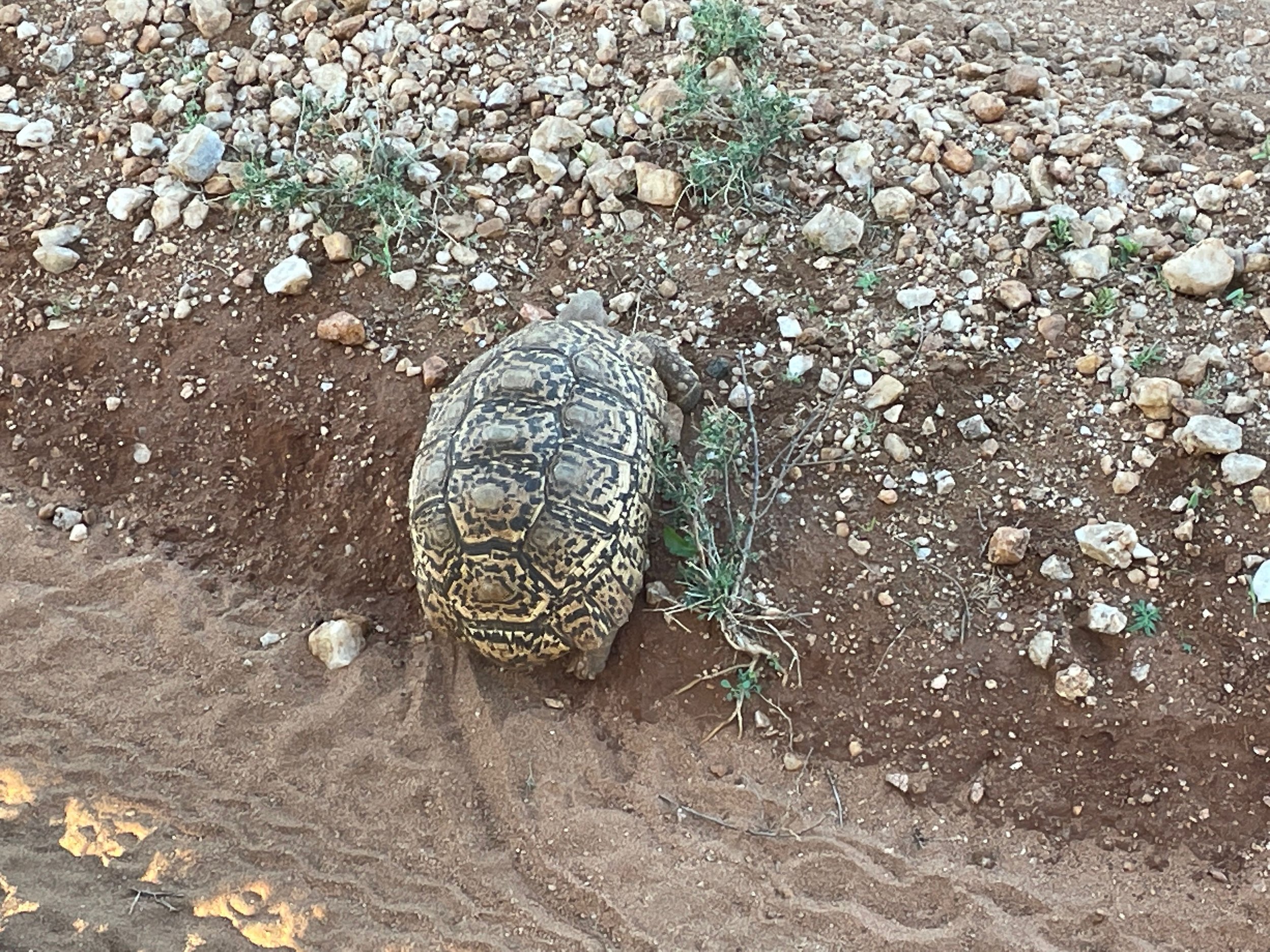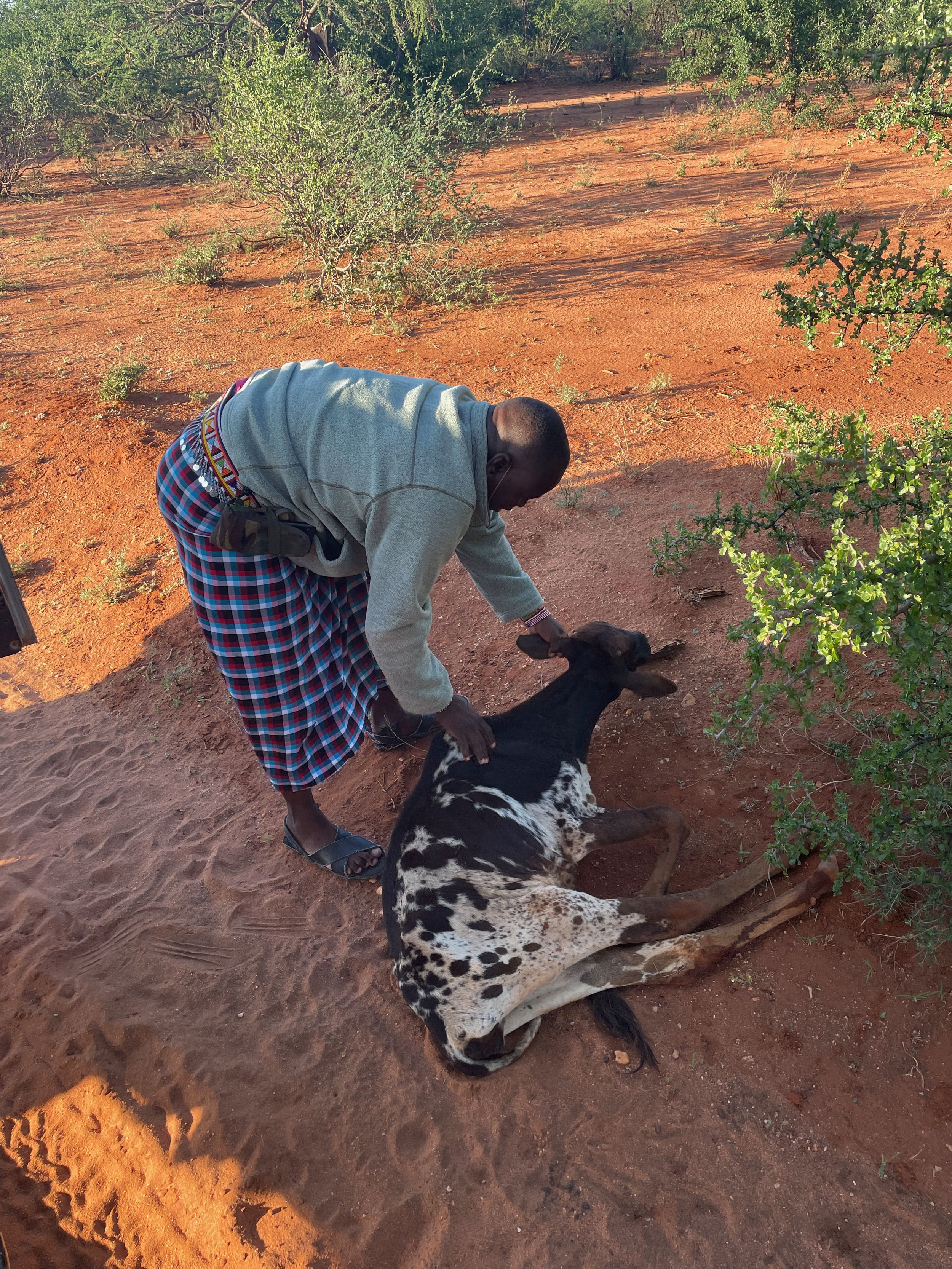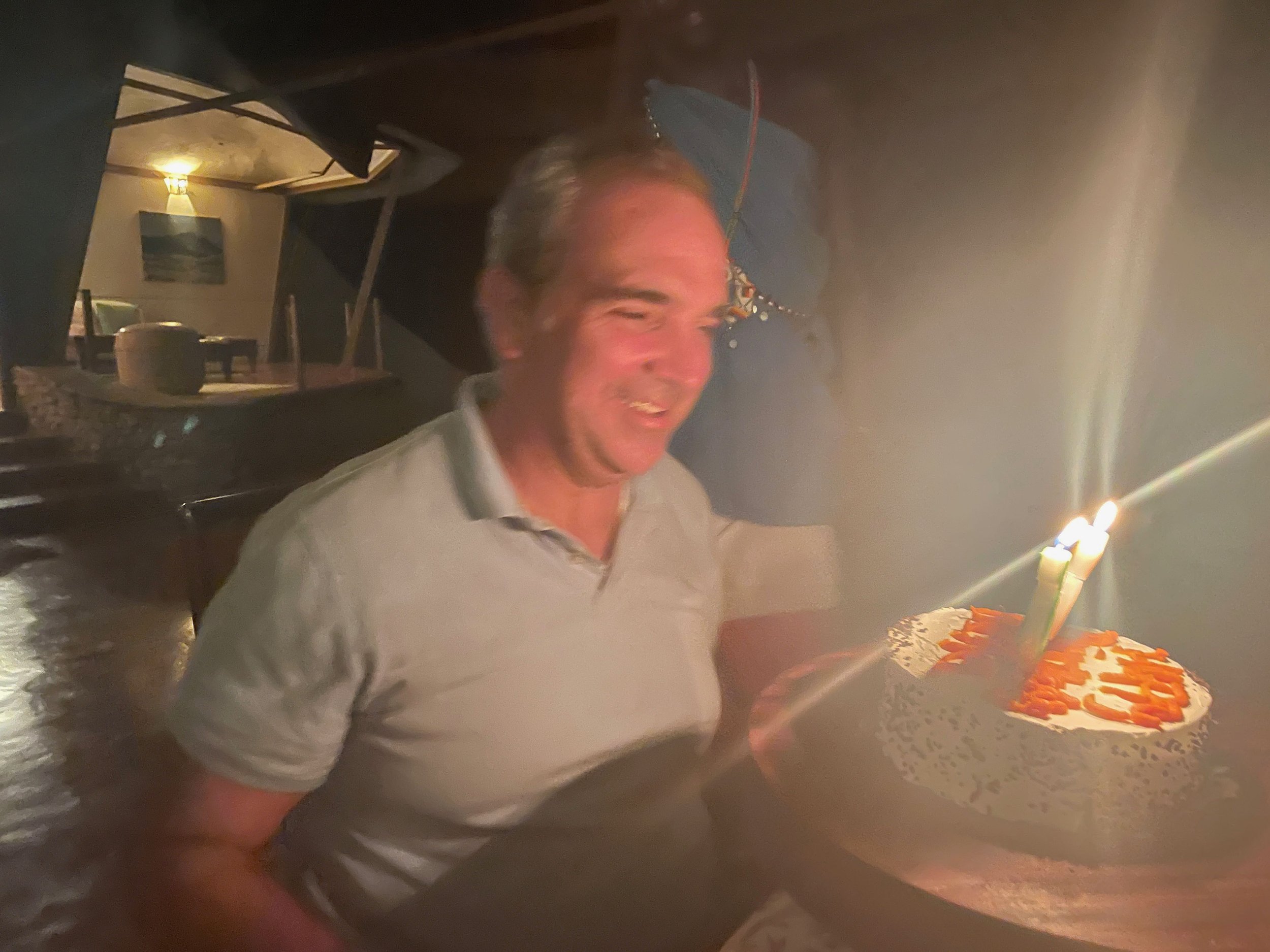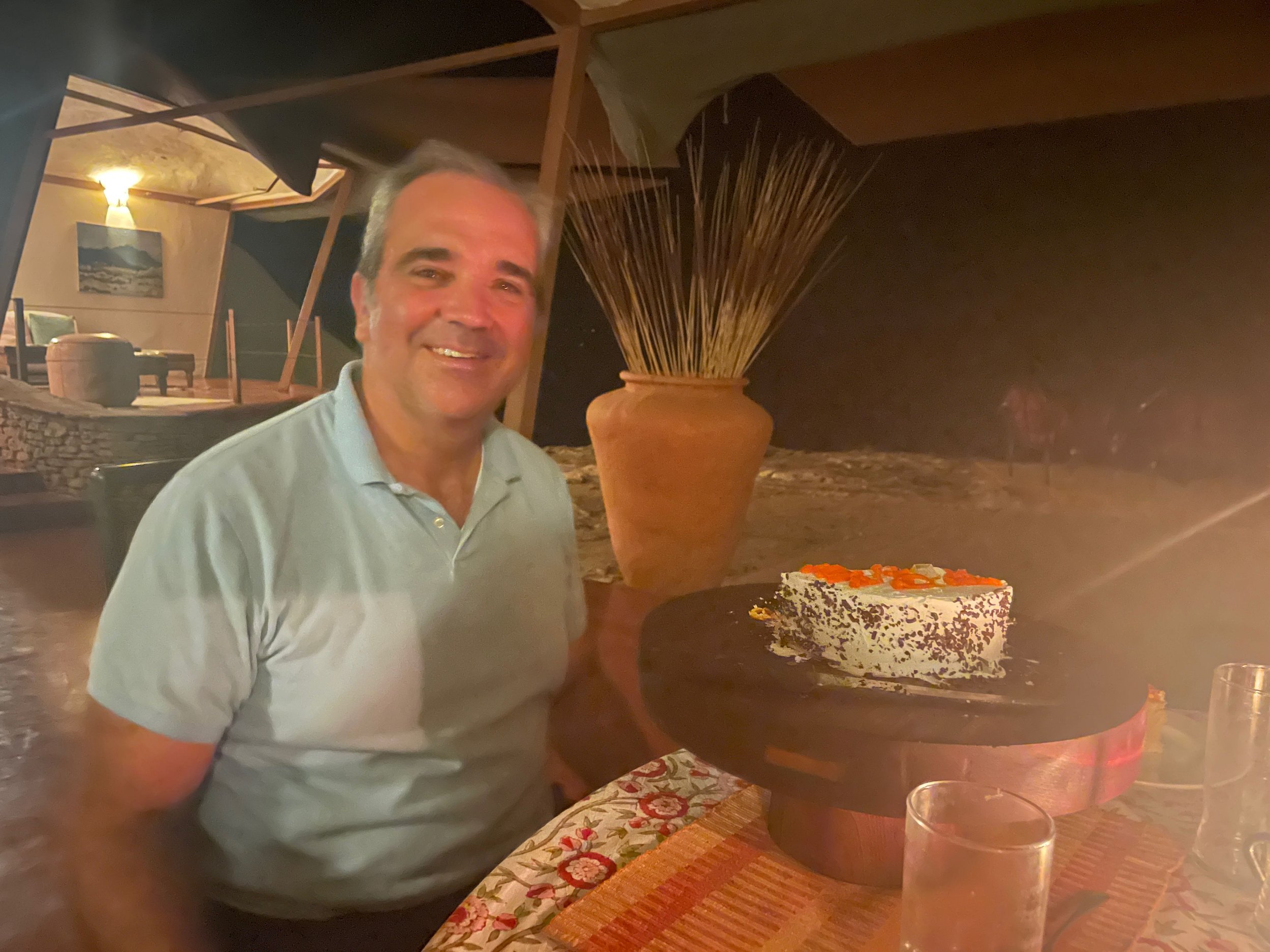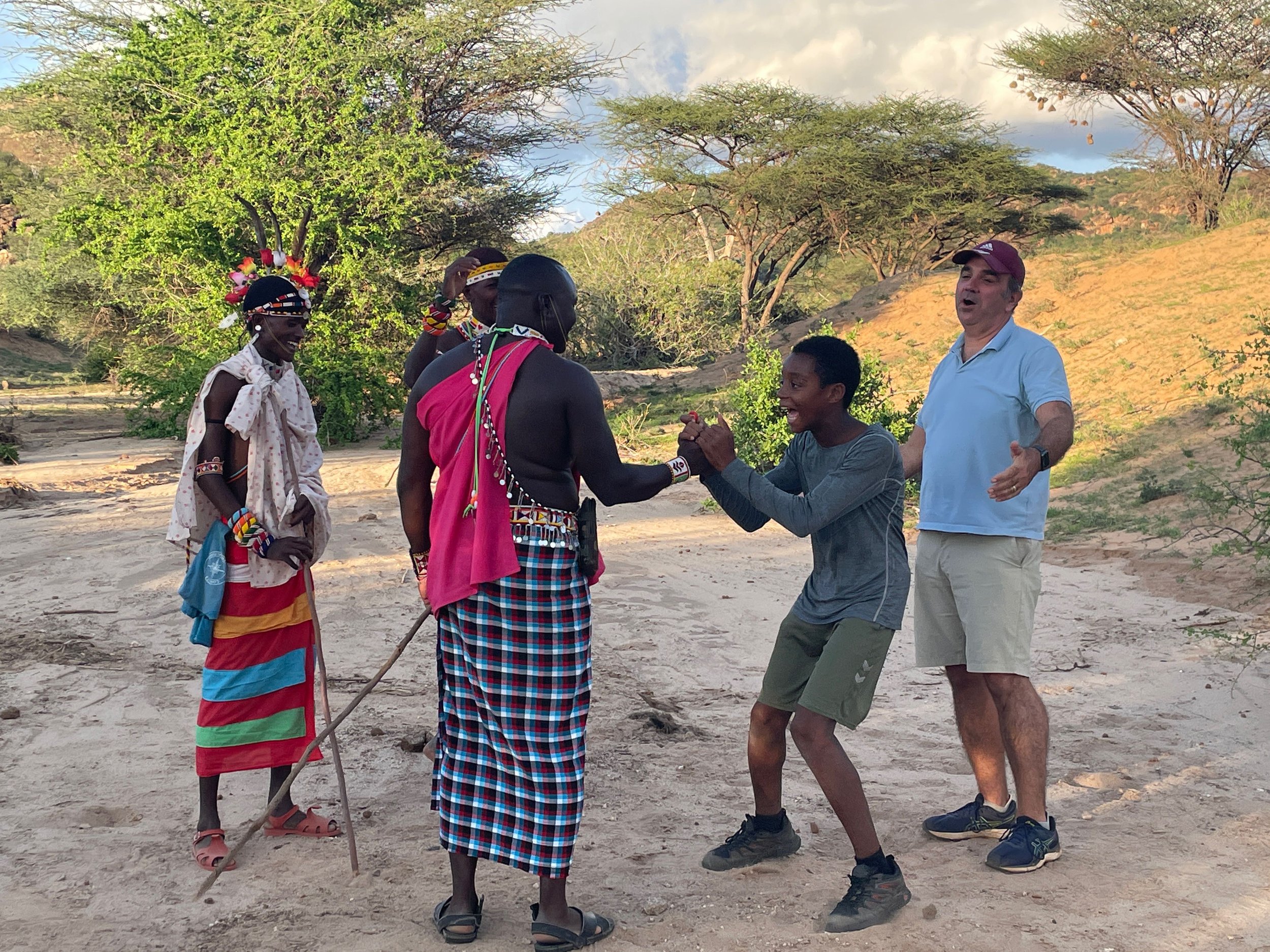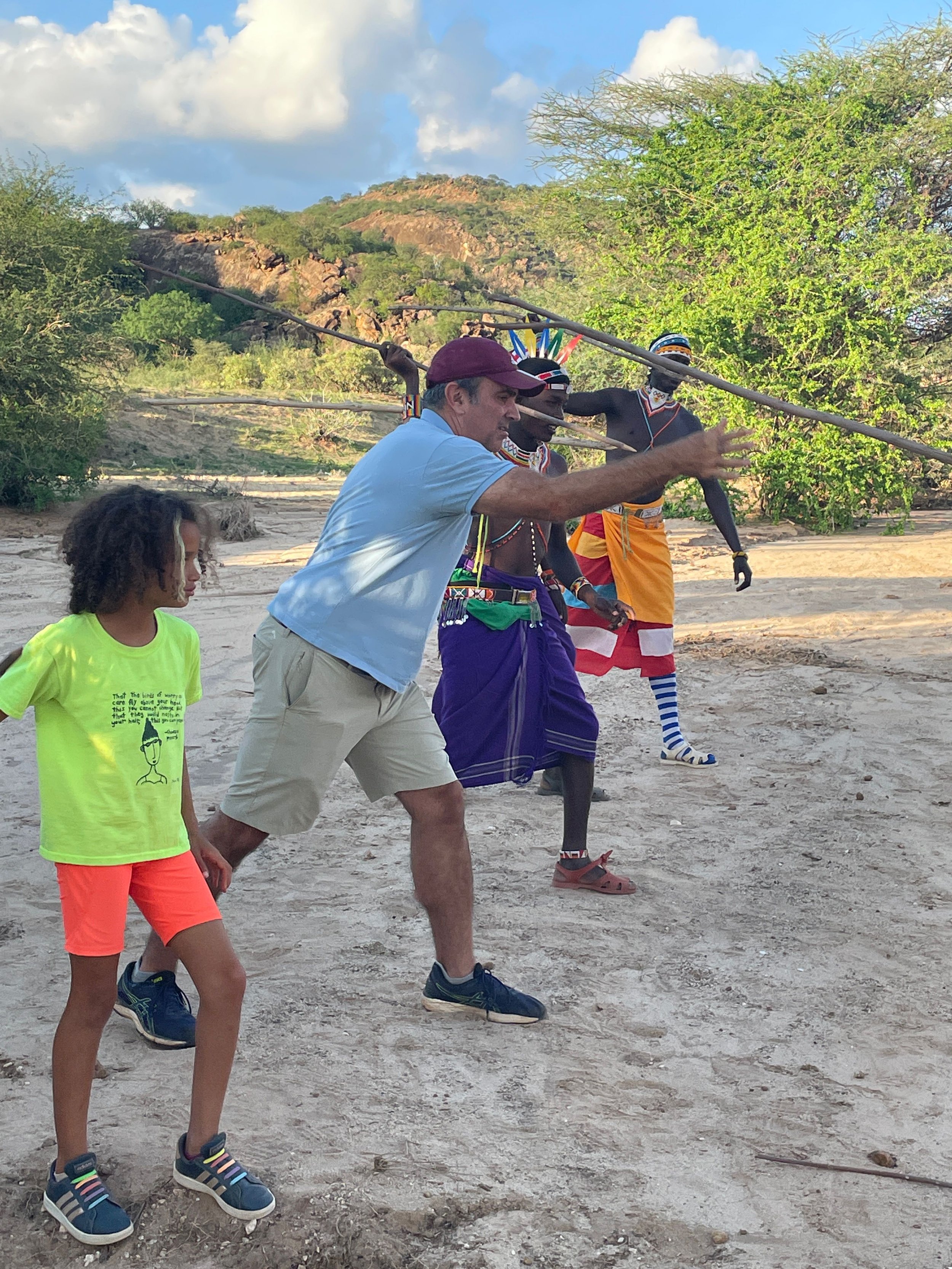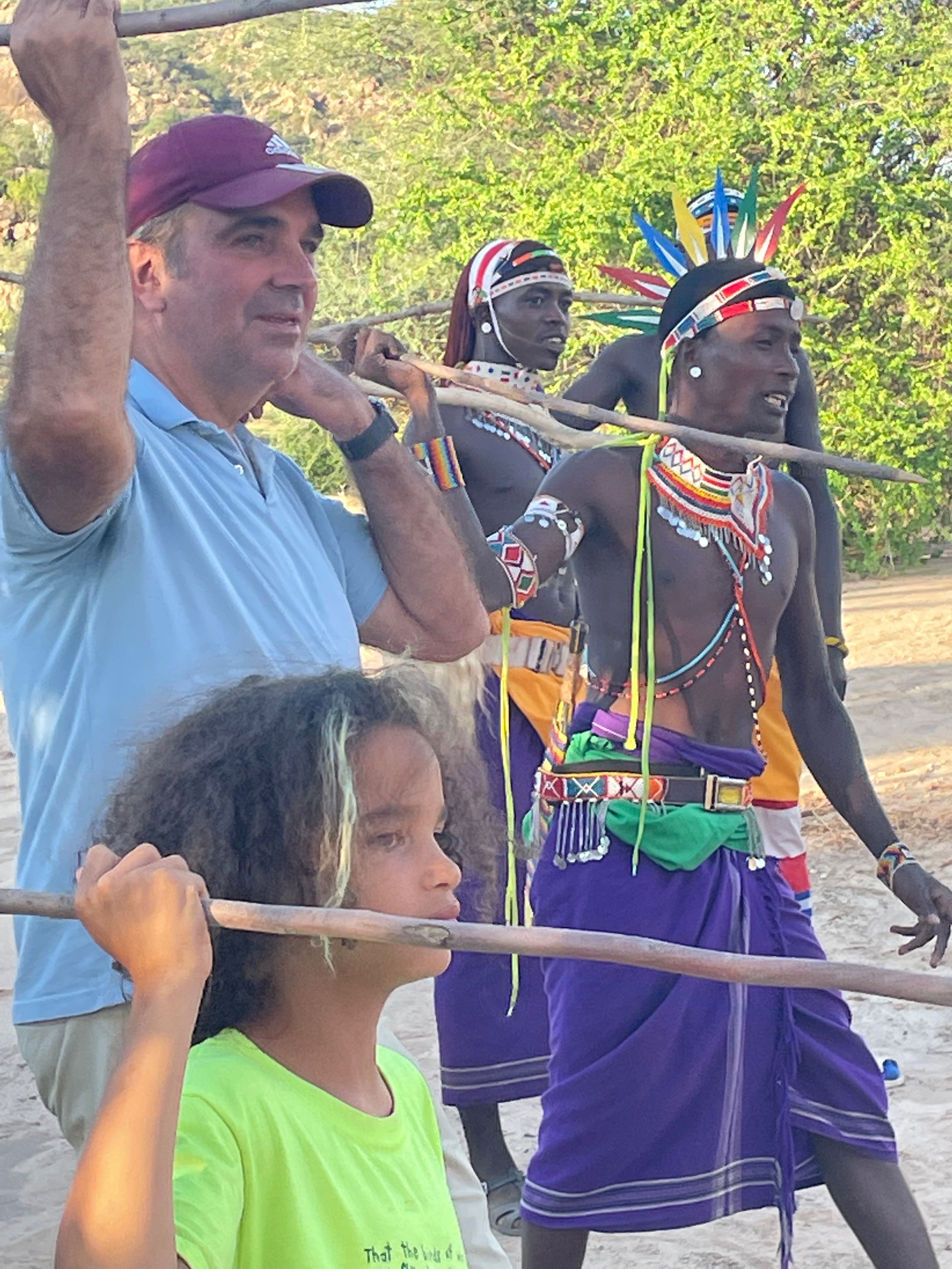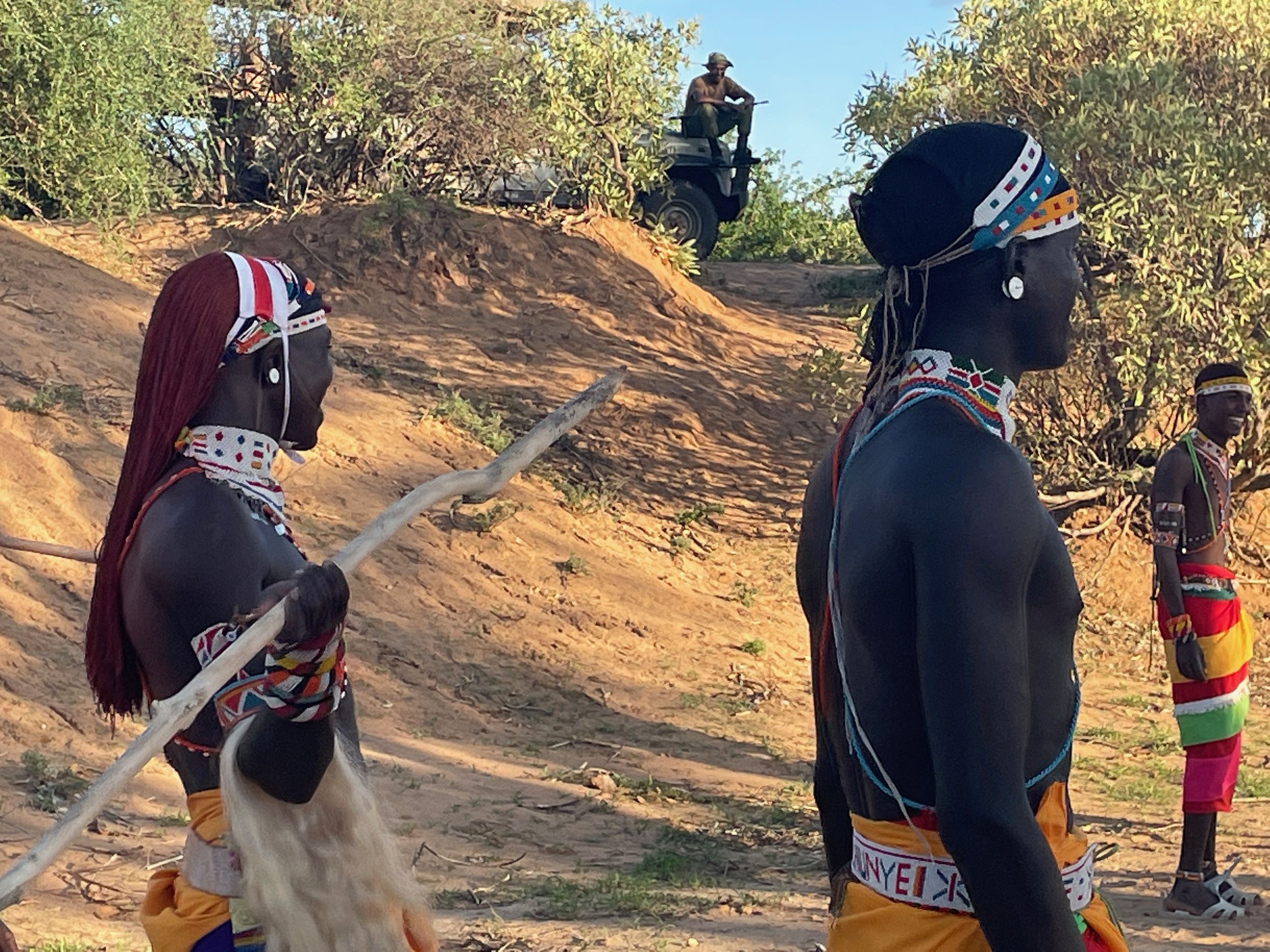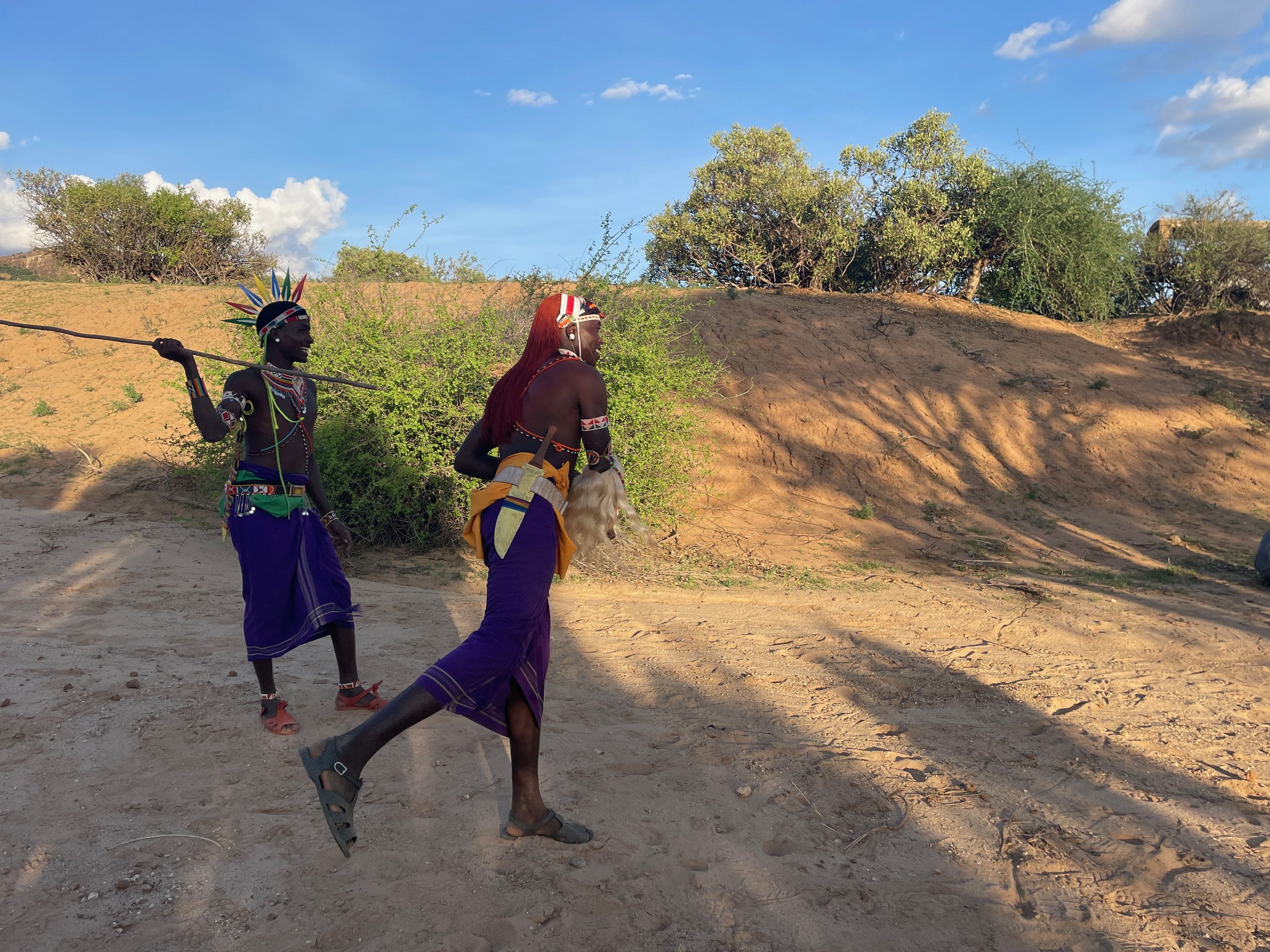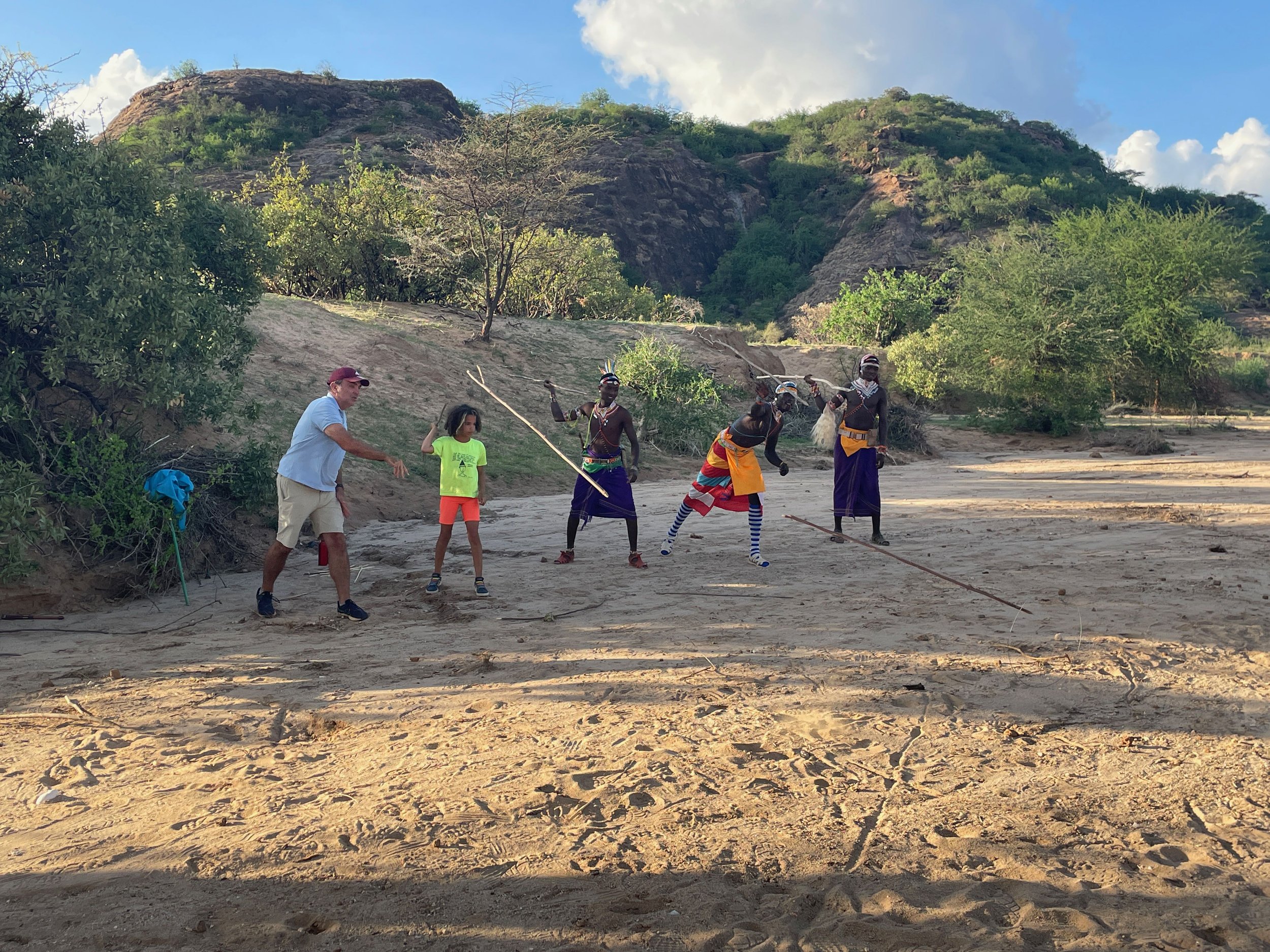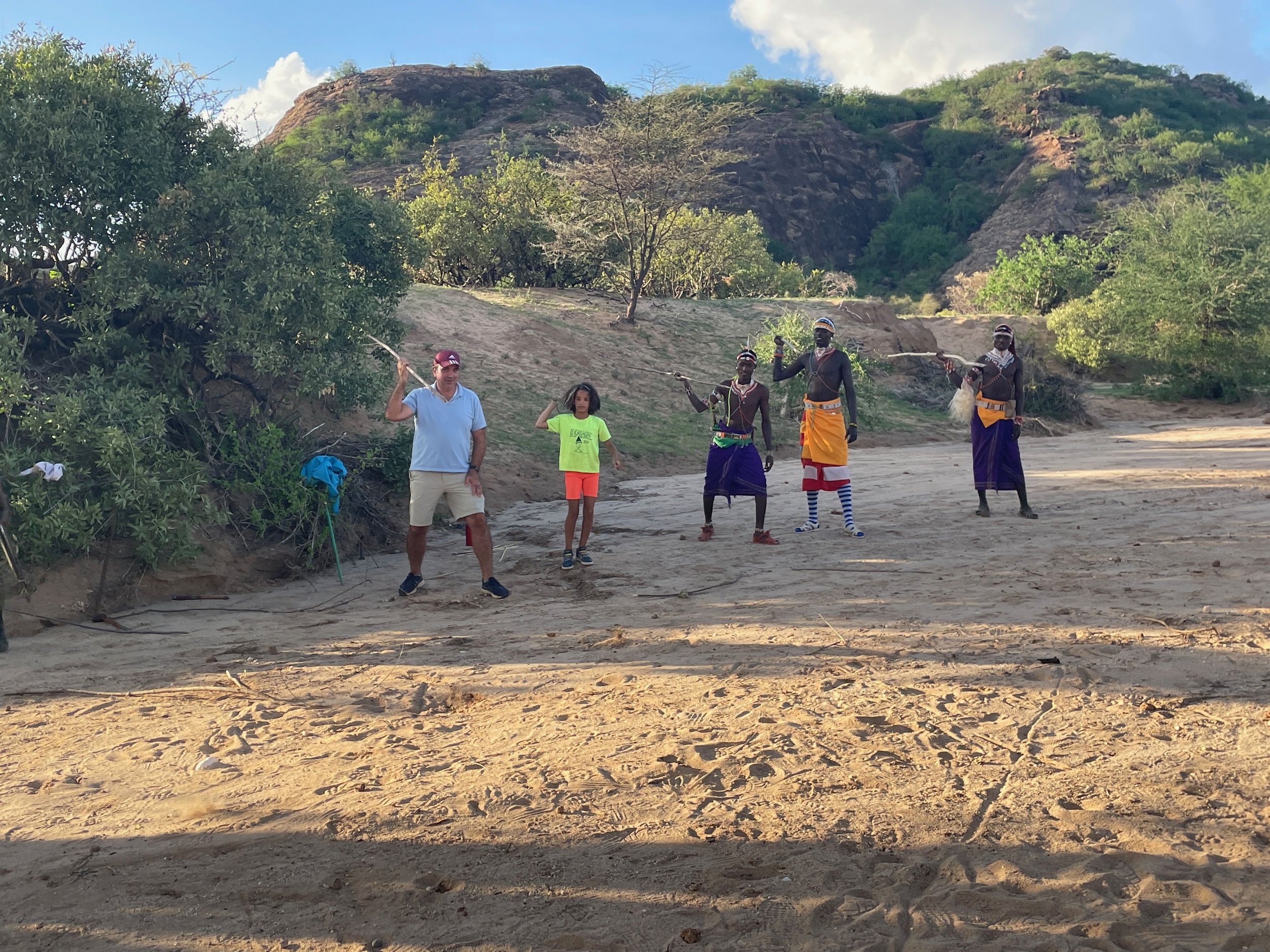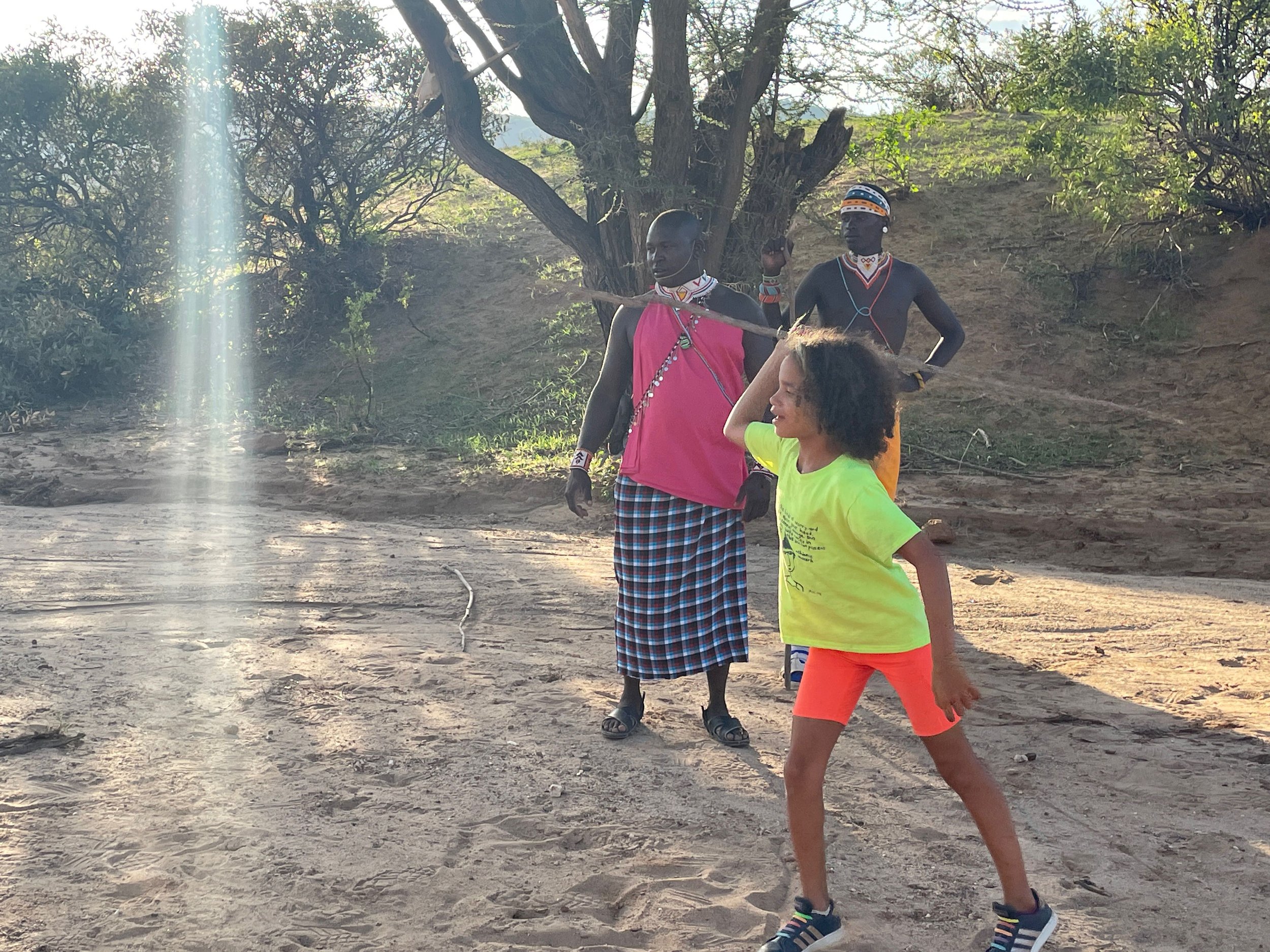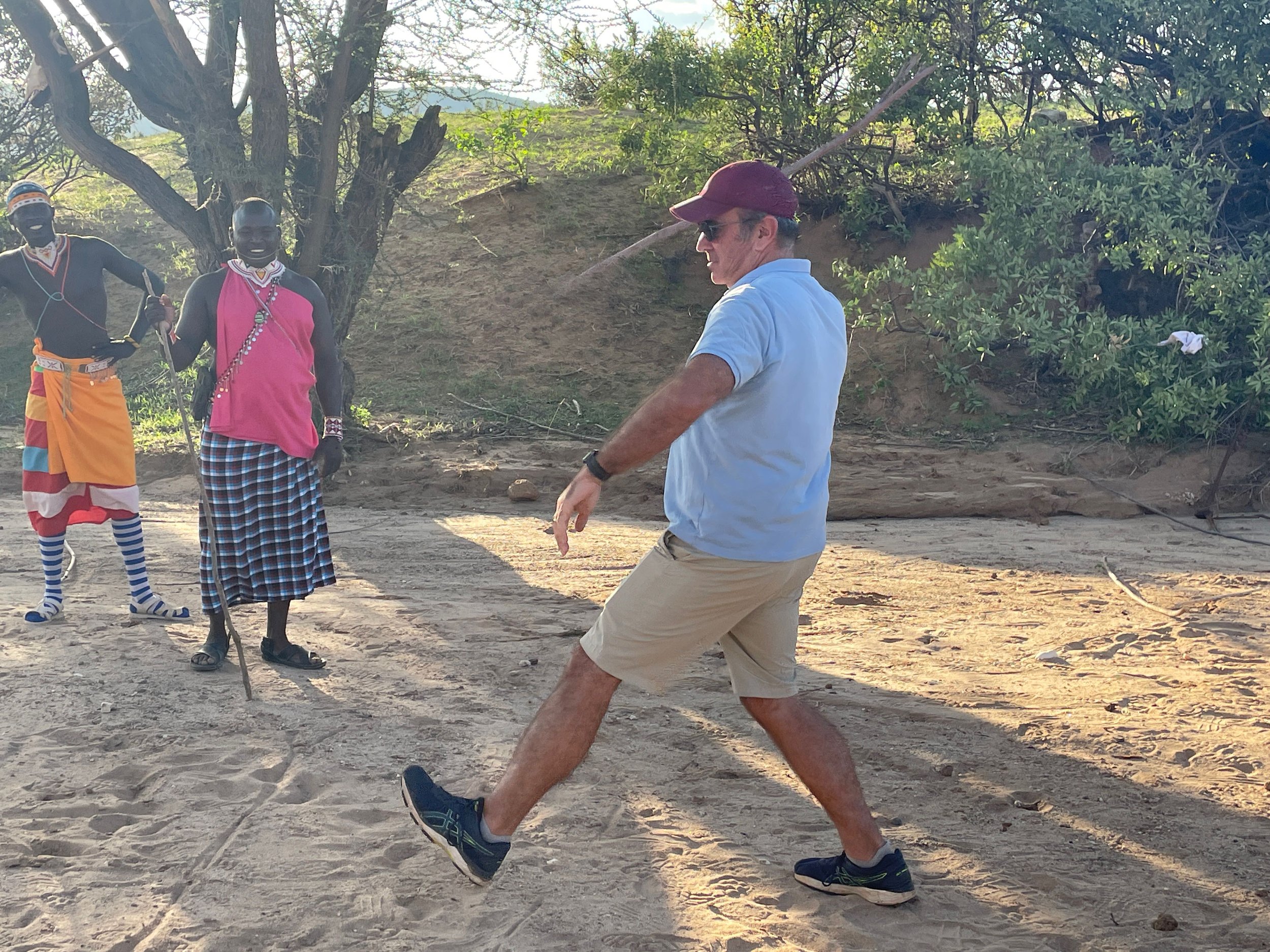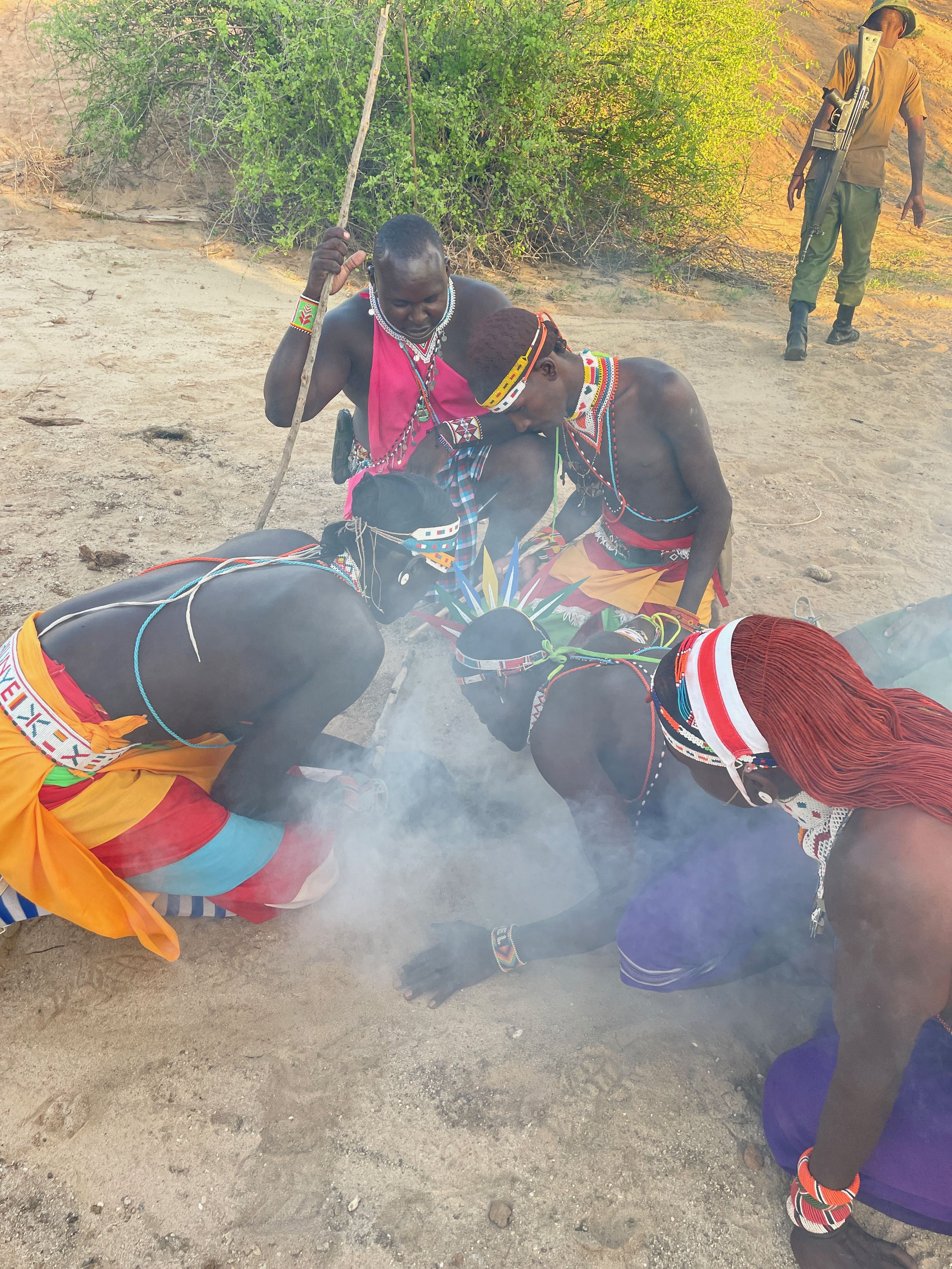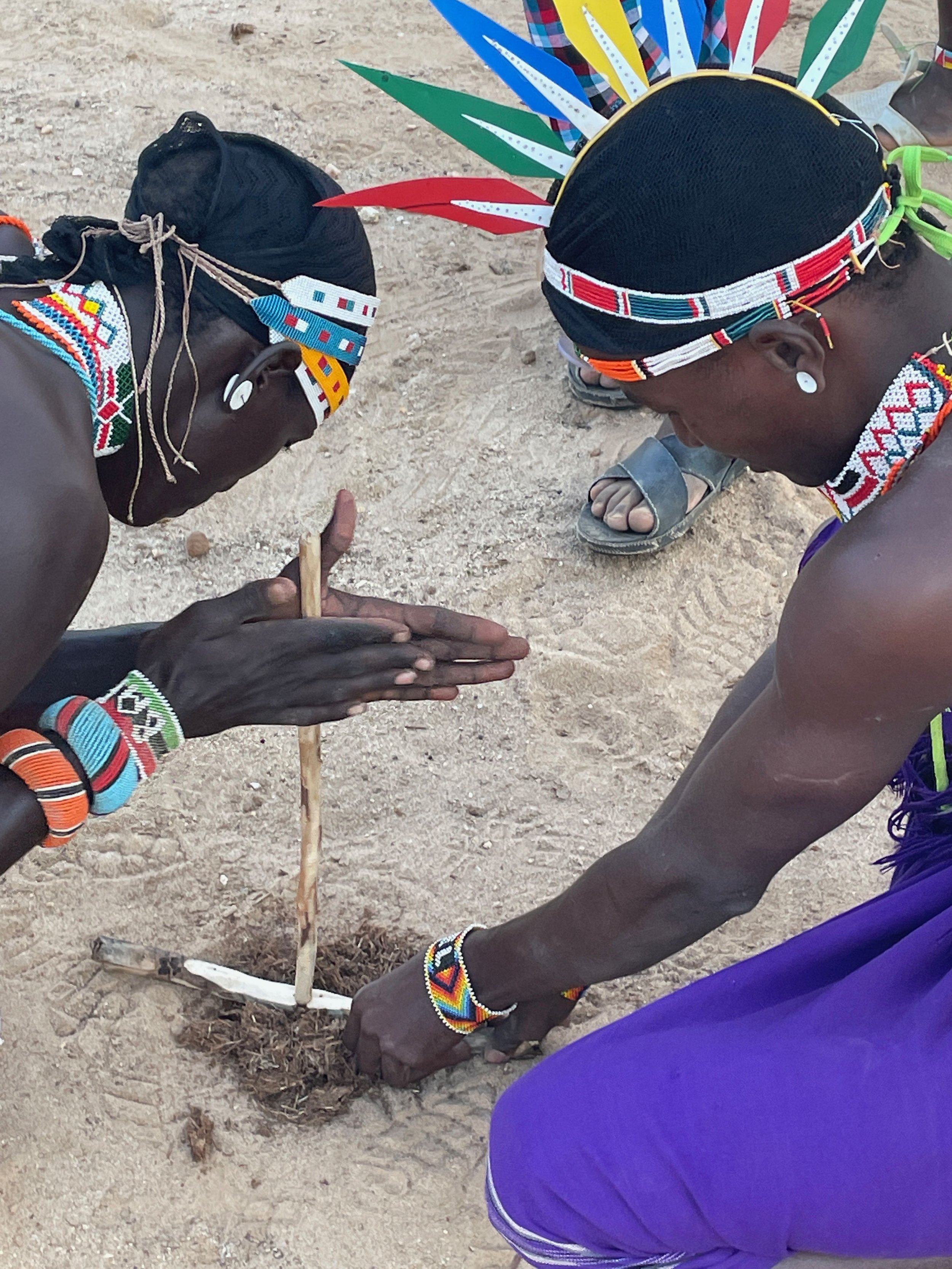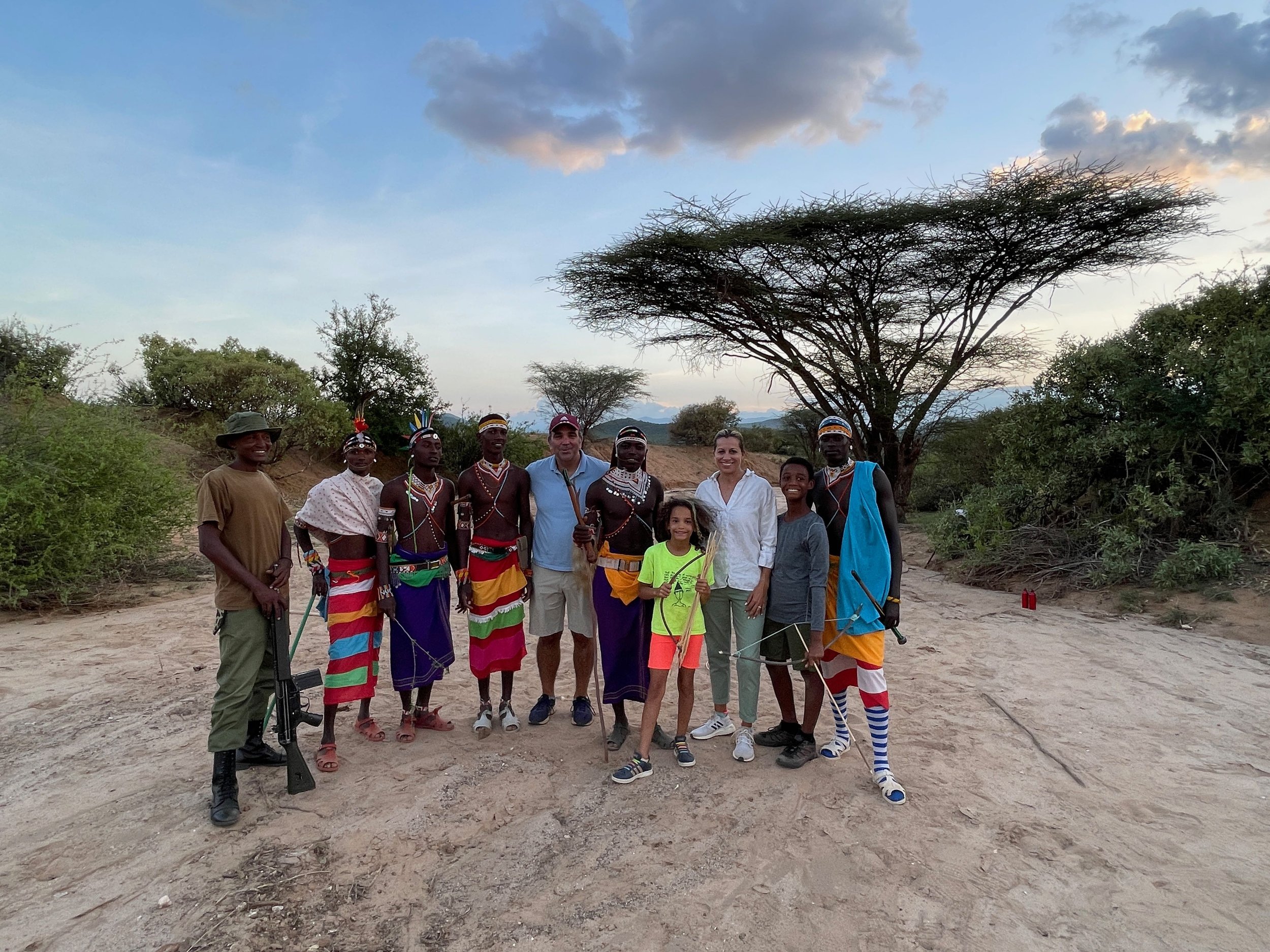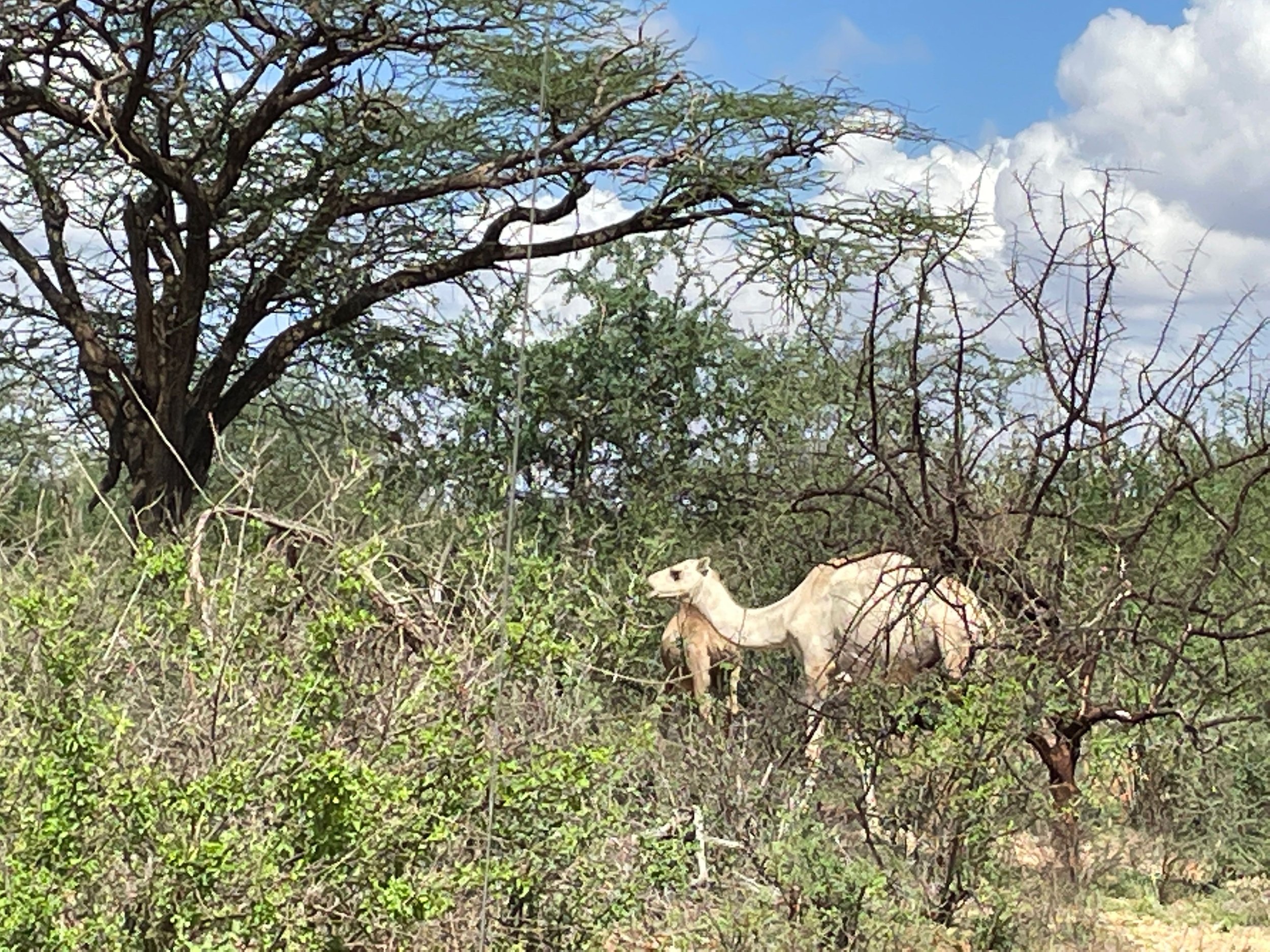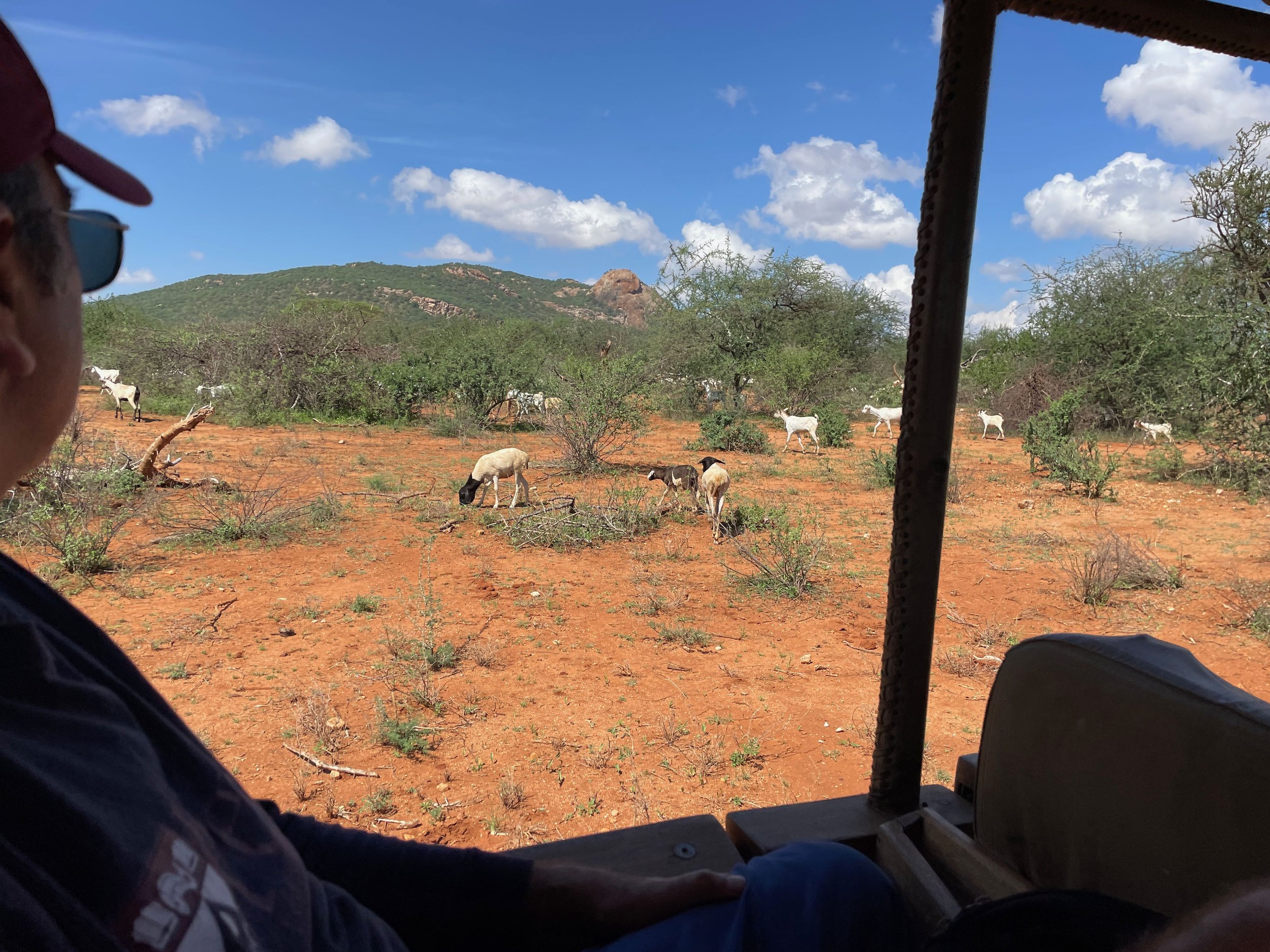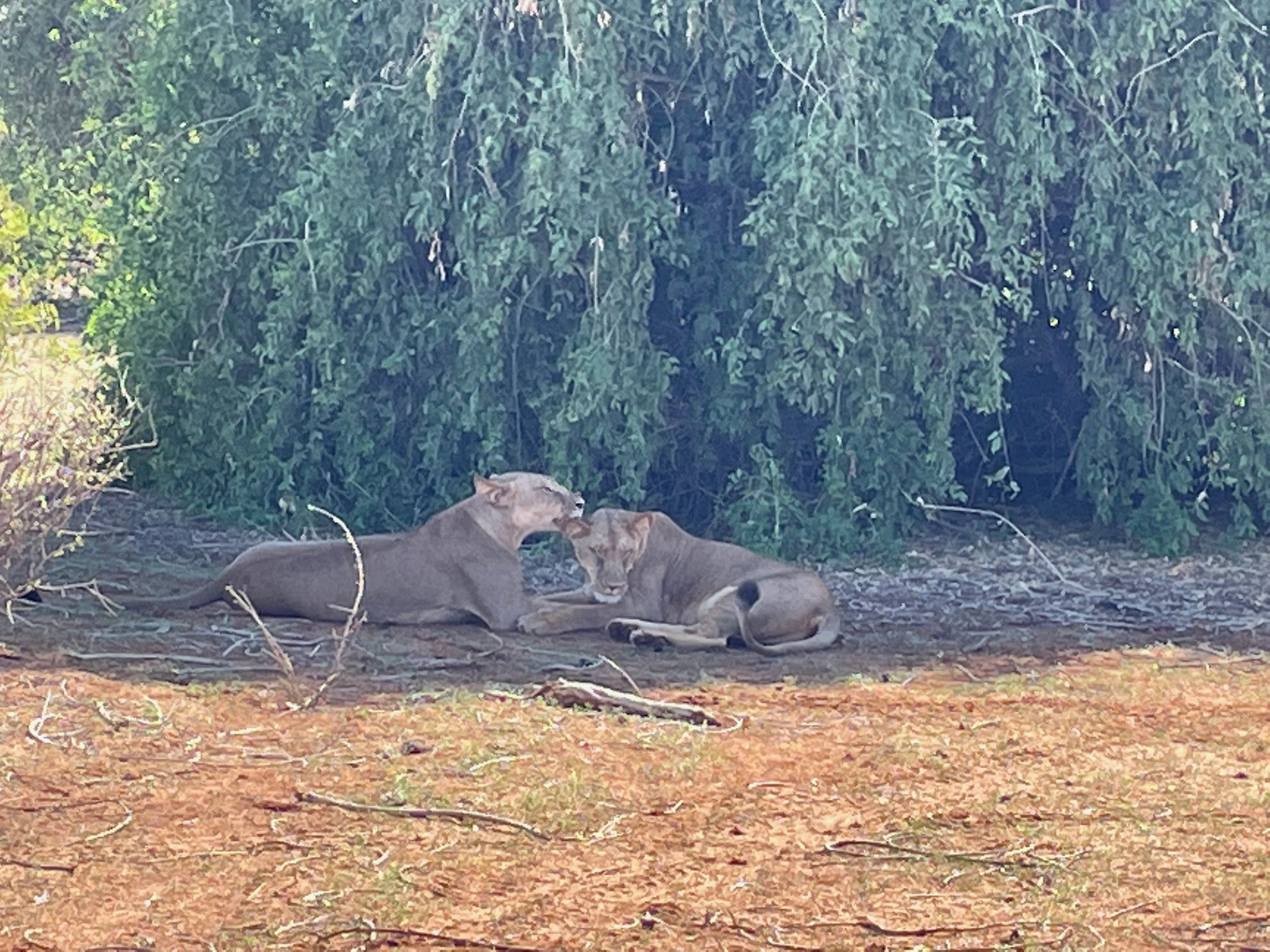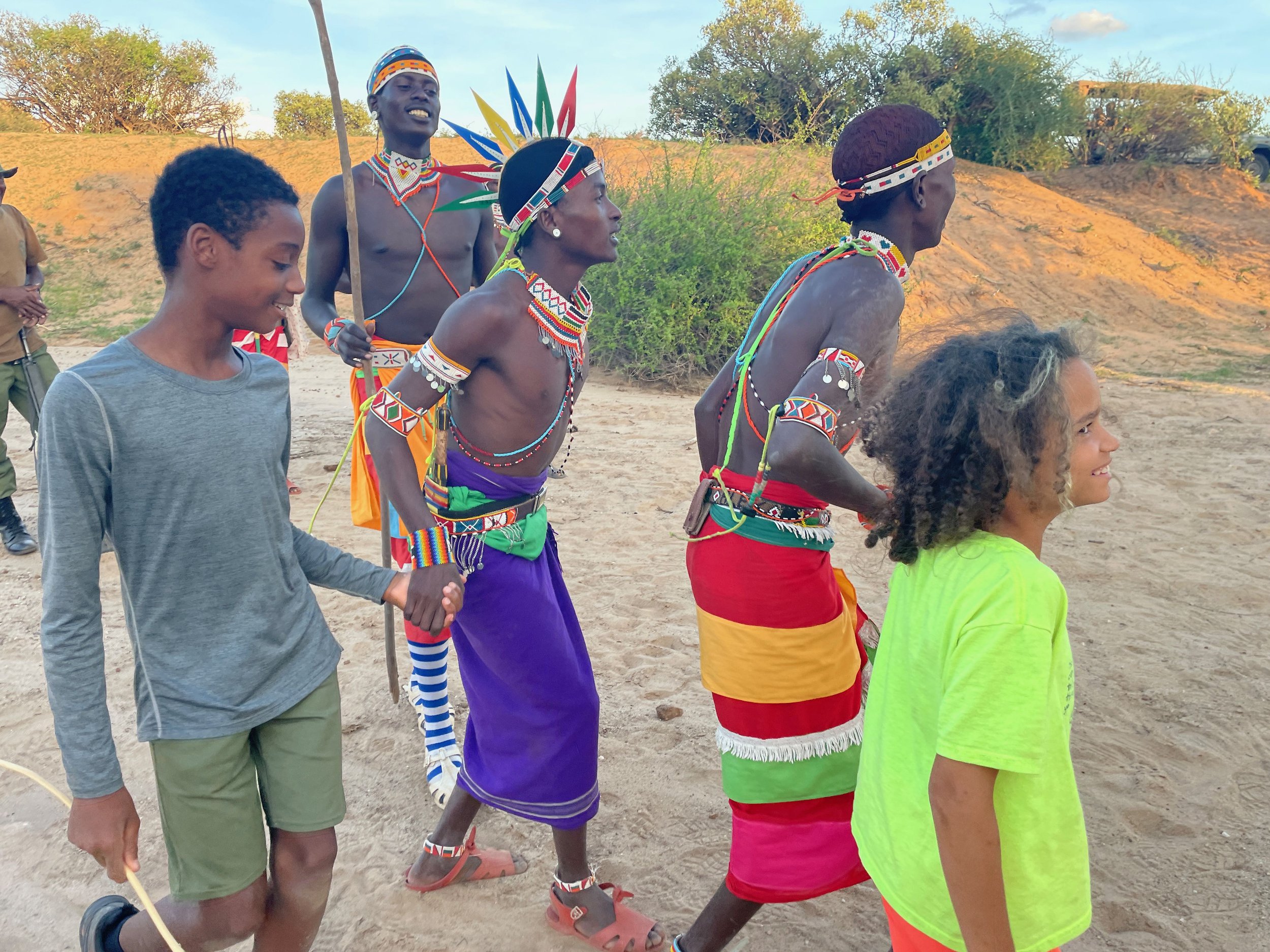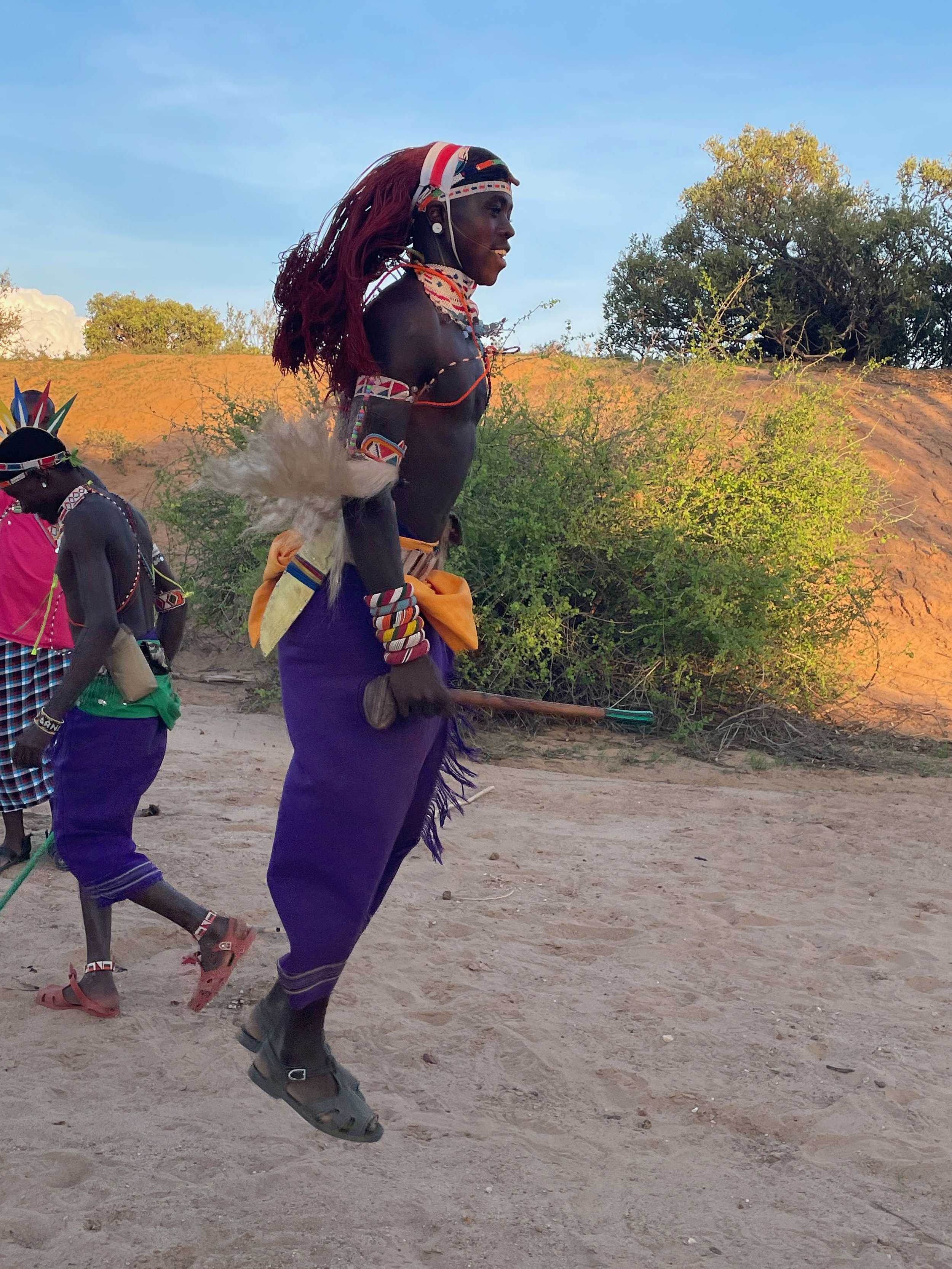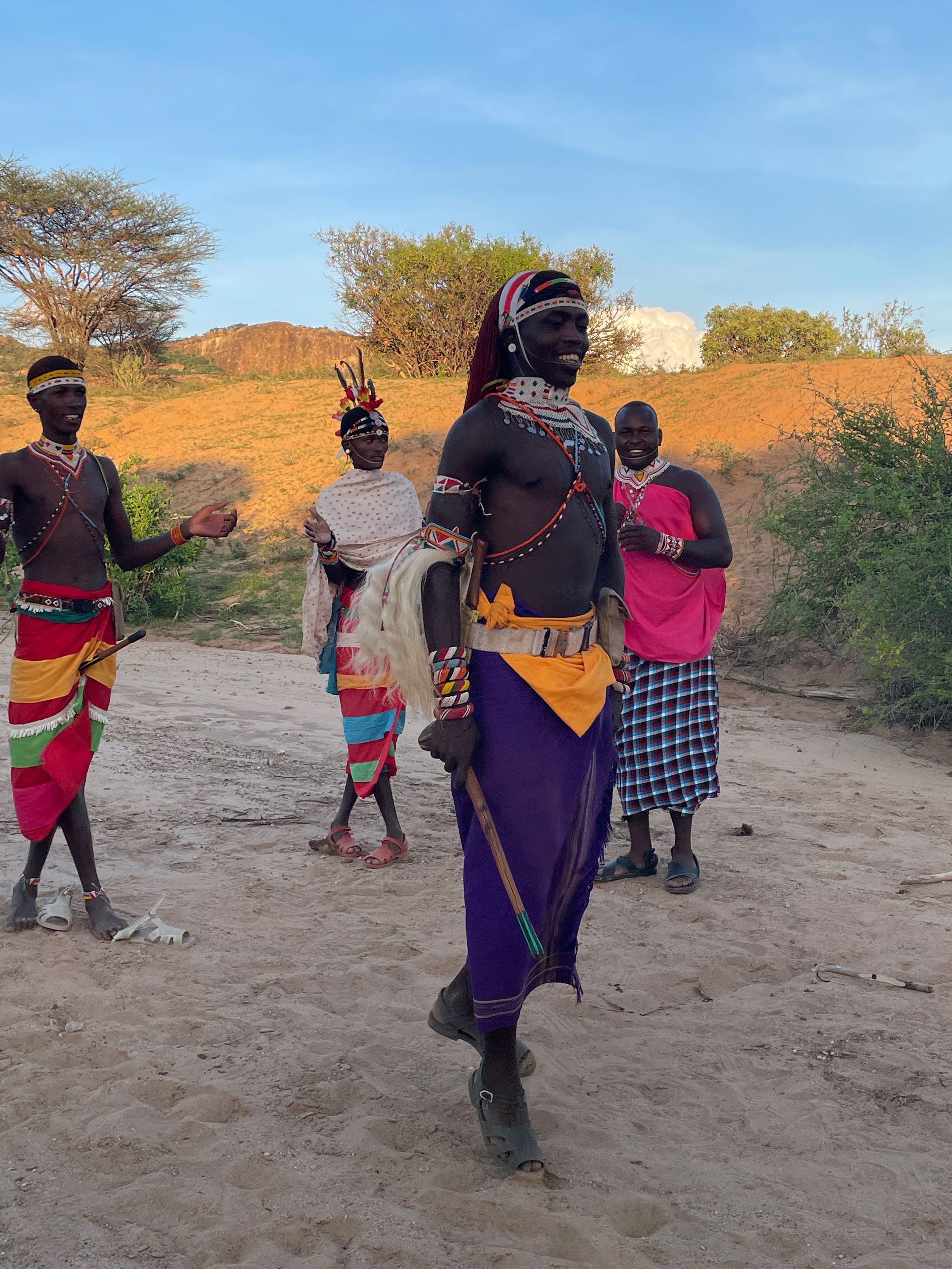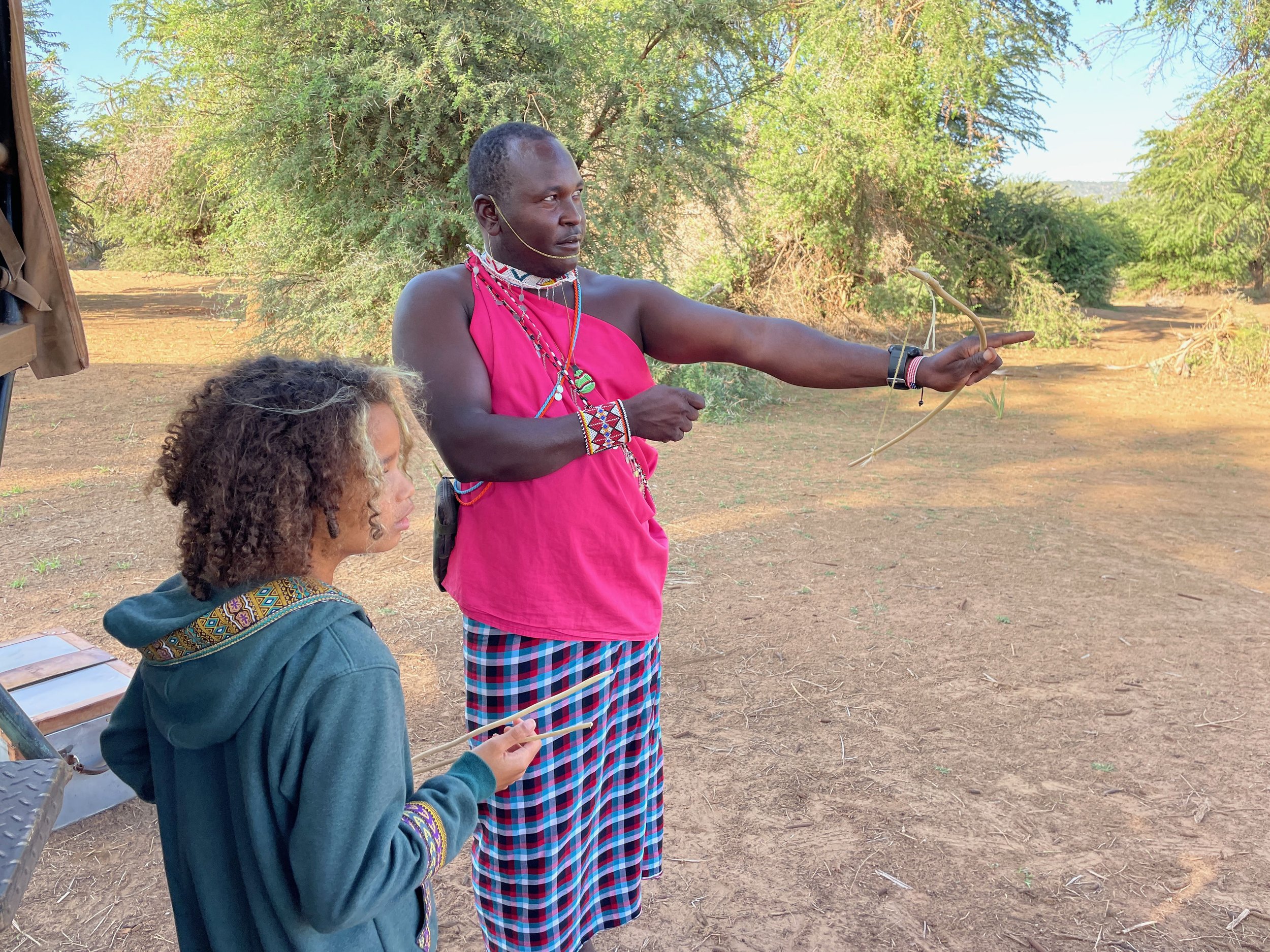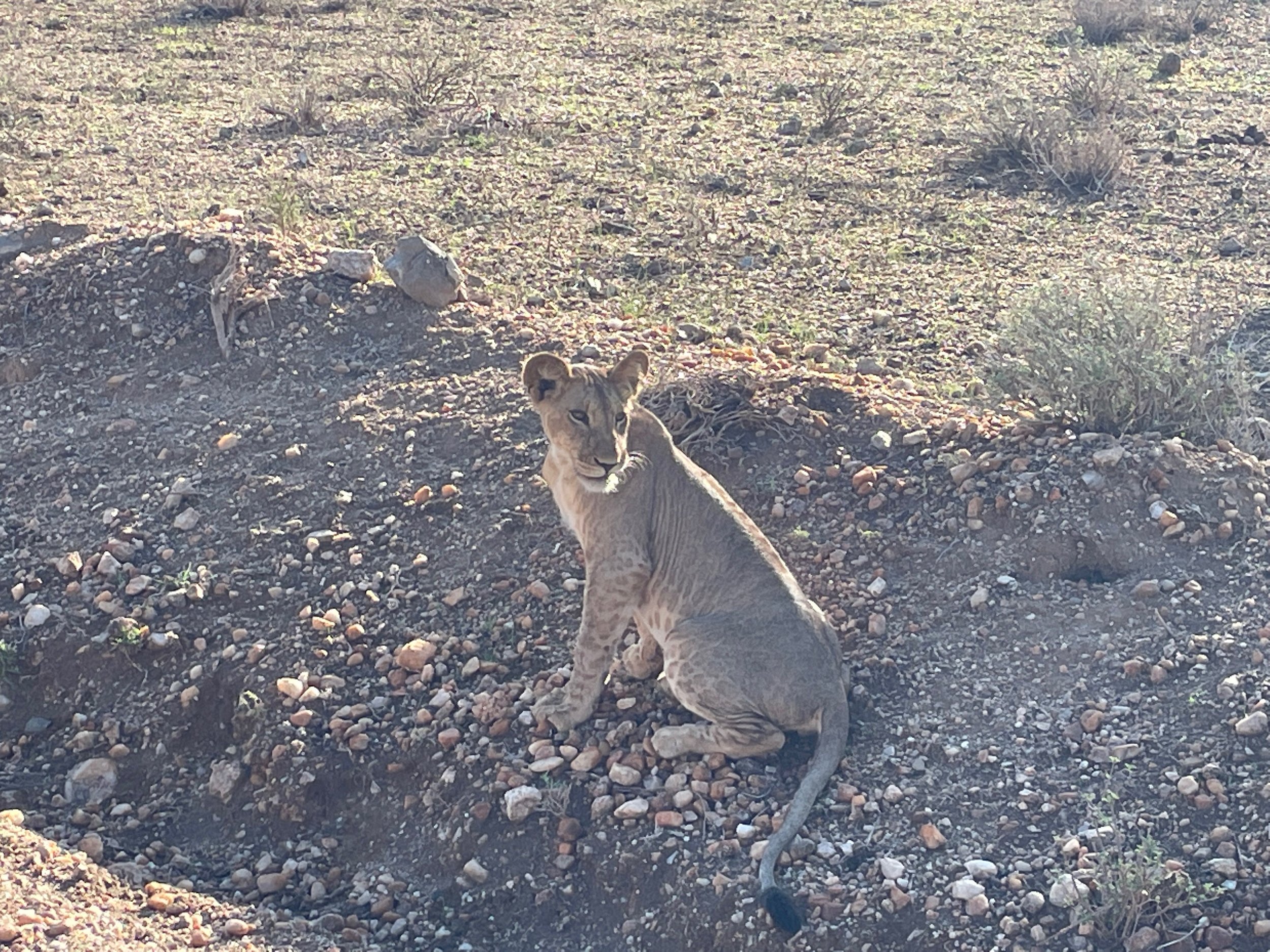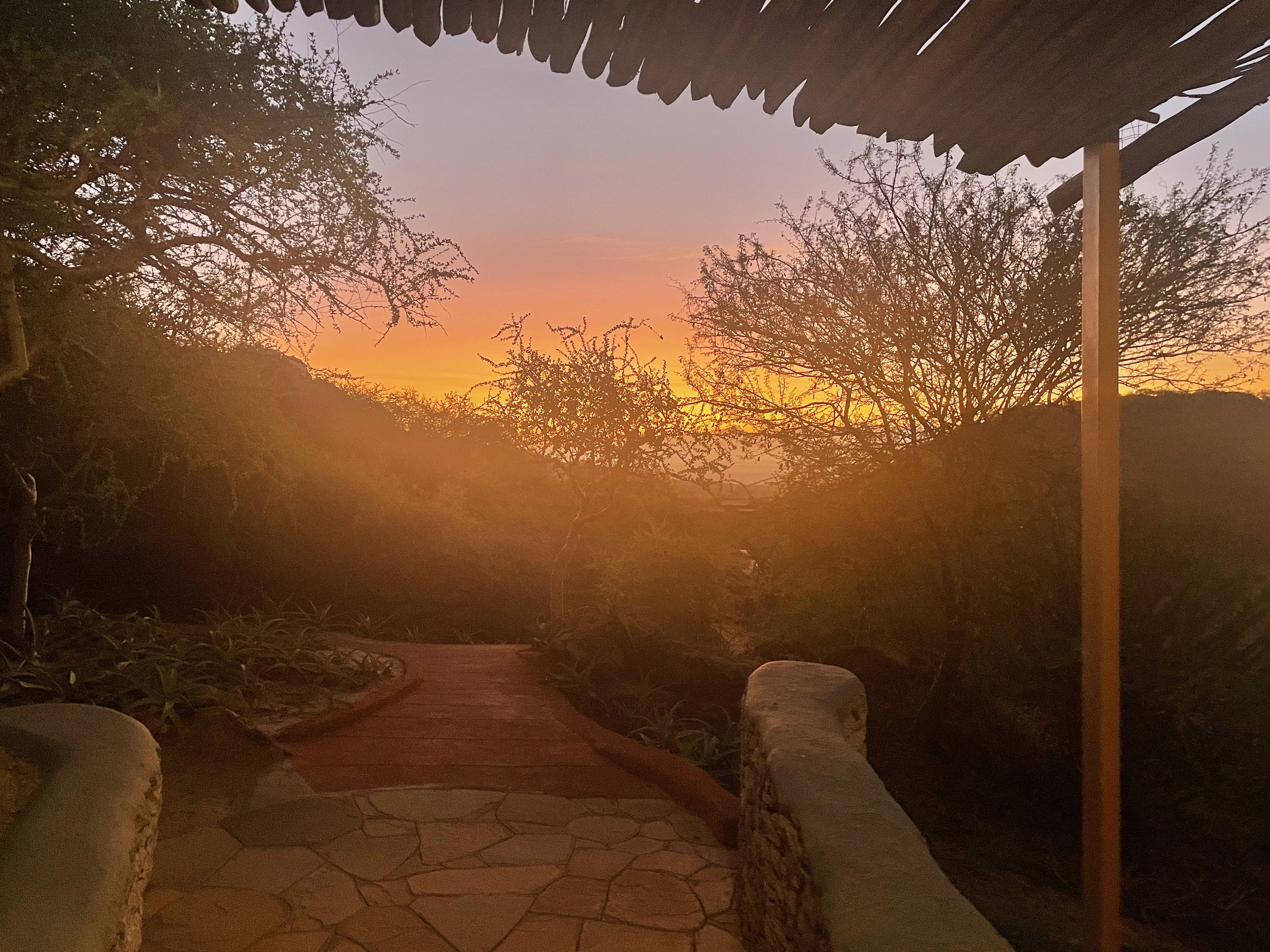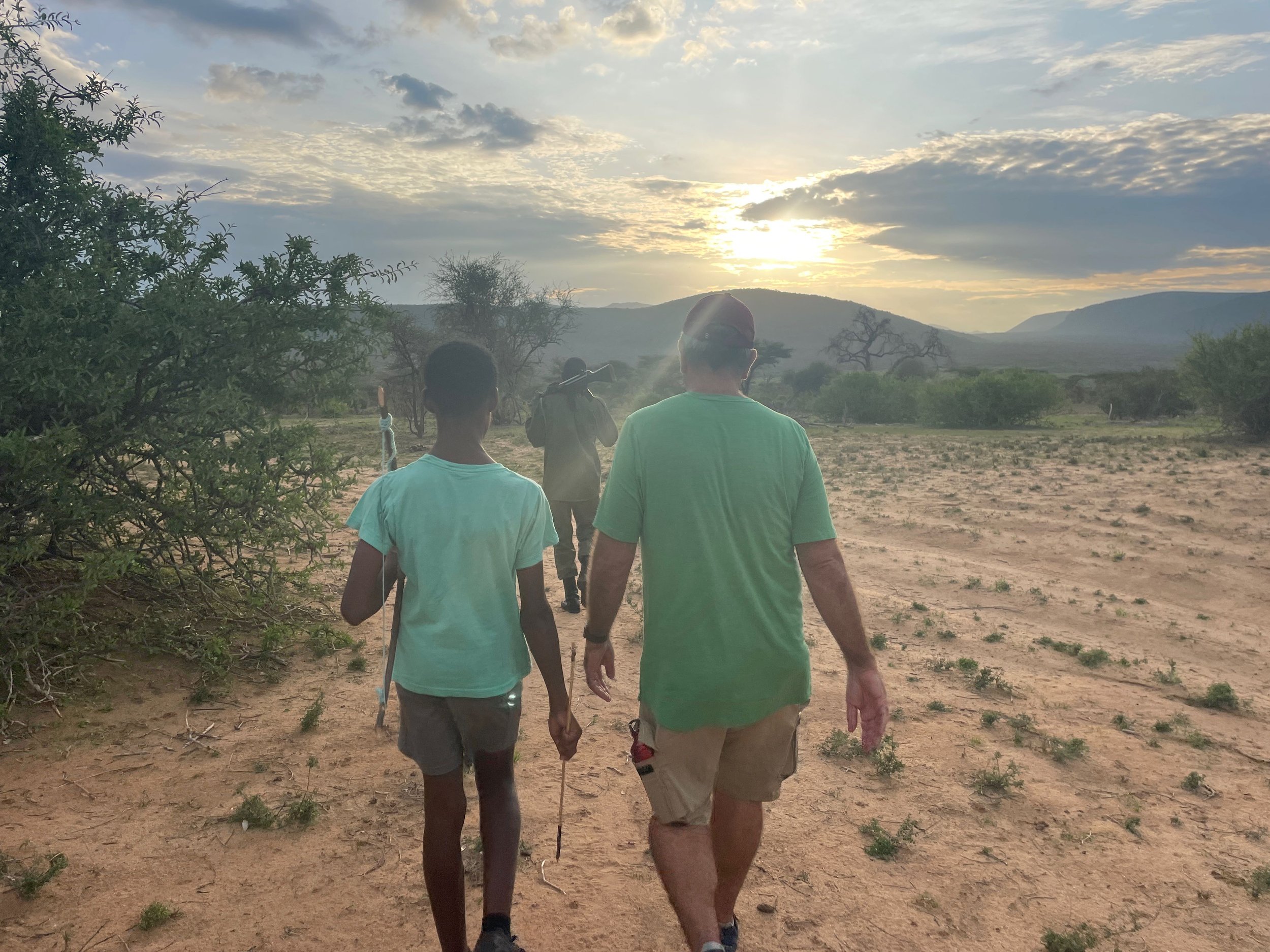Samburu Safari: An Unparalleled Experience
By this safari we felt like pros: we had been to “the Mara,” we’ve seen lions up close - lots of them, we knew that you didn’t want to “be a Pumba” (warthogs are so dumb they will run away and two seconds later forget why they’re running), and that special cameras and expensive linen outfits were unnecessary, but a sure way to tell the tourists from the locals.
For our Kenya finale, and the last half of our Thanksgiving holiday, we flew north to Samburu. Unlike the rocky plains of the Mara, Samburu is desert but with a significant amount of green since the rainy season had started. It is large swaths of sand punctuated by high rocky outcroppings, semi-dry riverbeds, and some trees. Our camp was perched at the top of a rocky mount, with birds-eye views over the valley. To get to the camp our Land Rover safari jeep literally climbed up a rock face - there is no road. We were a living advertisement for the capabilities of extreme off-road vehicles.
Our camp at Samburu was amazing. Stone villas built into the rock, barely visible, all with vistas of the desert and rocky mountains beyond. Two free form infinity pools have unsurpassed views of the watering hole, and bean bag chairs are set up for stargazing at night. The meals were awesome and Russ’ enjoyed a full birthday cake and serenade on his birthday. The outdoor shower had the best view of any bathroom I’ve ever used, if you don’t mind a spider or two watching you bathe.
At lunch after our arrival, Jordan quickly became bored and decided to go out and find some trouble. Before we knew it, he had climbed about 250 feet up a rocky hill nearby, also home to the resort’s “resident mama leopard.” When we discovered where he was, as he happily waved to us from his perch, our waiter quickly ran up to bring him down to safety. We asked the managers about the possibility of babysitters to keep the kids occupied and let them explore safely. From that point on, Jordan and Rosie had two warriors and a ranger ready and waiting, from the moment they awoke until we put them to bed, with whom to build bows and arrows, scramble on rocks, hunt for scorpions and even swim.
Similar to the Masaai warriors, Samburu tribes raise herds of animals including goat, sheep, camels, cows and donkeys, and we saw them daily on our drives. We delighted in seeing a bit more of their daily life. It was indescribably beautiful glimpsing from afar fathers bathing their young sons in shallow lakes next to their animals, shadow figures flinging diamonds of water in the sunlight. Sadly, the cows are skeletons due to the recent prolonged drought. One morning, we passed an emaciated cow we thought was dead, but we rejoiced when our guide was able to get it to its feet and let it’s cowherd warrior know where it was. It’s one thing when climate change affects me, complicit as I am in my SUV, but to witness the effects on those who take no part in the world’s degradation was a guilt-inducing shock.
The ‘big five’ are different here and we saw all of them: beisa oryx, reticulated giraffe, grevy’s zebra, gerenuk and ostrich. We were incredibly impressed when our guide/driver, a Samburu junior elder (former warrior, now married with children), tracked a leopard by a riverbank. His first clue was the eagle sitting low, waiting for a chance at food. He searched and searched with binoculars while we waited, wondering what we were doing. He finally spotted the leopard, hidden in the shadows under a tree. He explained how he found it by showing us the kerfuffle in the sand where the gazelle was taken down, then footsteps and dragging to a large blood stain closer to the water, and finally, the carcass in the tree across the nearly-dry river, above where the leopard slept. Amazing!
On the second day, we participated in ‘warrior camp’, where the kids learned to throw a spear at a homemade hoop that, when thrown, approximates a running lion, and build a fire from elephant poop. The Samburu warriors are young men who, between the ages of 12-16 (and age is approximate because they aren’t using calendars or any other modernities) become warriors responsible for herding the tribal animals. The Samburu people are pastoral nomads and they are fascinatingly untouched by technology. Without those influences, the young men are a beautiful combination of maturity and innocence with youthful, wholesome faces. They wear bright colors and jewelry and huge smiles. When warrior camp was over, they ran off into the night, fully capable of finding their way home by the stars and the trees, hours on foot in the pitch black darkness. Here’s a great link to more information about the Samburu people.
On two mornings we enjoyed breakfast by rivers out on the drives, with various monkey species looking on and ready to grab any morsel of food. In fact, Rosie left her cookie on the side of the jeep and a monkey jumped right across her lap, grabbed it and was gone before she could even yell. We hiked to a cave (accompanied, as always, by an armed ranger and warrior with a spear) and learned more about the process of becoming a warrior. This was a really educational discussion where our guide was talking about the rite of passage - circumcision - and the kids demanded to know RIGHT THEN what that is, and somehow all eyes ended up on me. So I got to say penis to two giggling children in front of a warrior, a ranger and Russ. It was the most awkward I’ve felt since having to read Sex Ed text aloud in middle school.
On our last night, all the guests were treated to sundowners and the traditional Samburu dances. The dances involve the warriors jumping to impress - the higher they jump, the more desirable they are. Jordan the jumping giraffe would do well in this culture. We were also interested to see female Samburu, in similar bright clothing and close-cut hair.
A Samburu safari belongs on everyone’s bucket list - no khaki cargo pants required.










